

The LDES Consortium is a compelling initiative focused on advancing long-duration energy storage (LDES) technologies to enhance grid reliability and support the integration of renewable energy. In this interview, Dr. Alyssa McQuilling, CBI's Research & Innovation Manager, provides insights into the consortium's goals, the roles of its members, and the innovative solutions to push the boundaries of energy storage.
Can you give us a brief overview of the LDES Consortium and its primary goals?
Sure! The LDES Consortium is an exciting initiative that brings together diverse stakeholders to tackle the challenges of long-duration energy storage (LDES). The main aim is to overcome both technological and economic barriers to make LDES more viable and widespread.
What makes this consortium special is that it's 'technology agnostic ', meaning we're not biased towards any specific energy storage technology. We have experts from different energy storage technologies, such as chemical, mechanical, thermal, and all types of batteries, including lead and lithium. The idea is to address every aspect of the industry, from developing the workforce and managing the supply chain to creating policies and advancing technology, regardless of the specific technology used.
What roles do you and Dr. Matt Raiford, CBI's Technical Director, play within the LDES Consortium, and what are the 'tiger teams' you're involved with?
Matt and I are involved in several 'tiger teams' within the consortium. These teams are focused groups that tackle specific challenges related to long duration energy storage. Each team is dedicated to addressing a unique aspect of the LDES landscape.
Between the two of us, we're active in about eight tiger teams, where we attend meetings, provide feedback, and help refine the challenges and recommendations alongside other industry experts.
Uniting experts for energy innovation
How does LDES differ from other types of energy storage, and why is it important?
That's a great question. LDES stands out because it can store energy for more than ten hours, which is crucial for ensuring the grid's reliability. Some technologies are perfect for shorter durations, while others can handle much longer storage times, even up to seasonal storage.
This capability is especially important as we integrate more renewable energy, which can be unpredictable, into the grid. In simple terms, LDES helps balance supply and demand, ensuring enough energy is available when it's needed the most. This makes it a key player in creating a stable and sustainable energy system.
You're leading the Workforce Development team. What does that entail, and why is it crucial for the project?
I'm the industry advisor for the Workforce Development team, which is led by Hope Corsair at Oak Ridge National Lab. Our team's mission is to determine what skills and training are needed to build a strong workforce for the LDES industry. We've examined current workforce needs and are making recommendations to help scale the industry and prepare for future demands.
This builds on my previous work with the NAATBatt Education Subcommittee, where we focused on the educational needs of the battery industry. Ensuring we have a skilled workforce is essential for the success of LDES technologies.

What are some of the big challenges you face in making LDES more common, and how are you addressing them?
One of the biggest challenges we face is the cost. For instance, the current systems are primarily designed for shorter durations, making them less cost-effective for longer storage needs. Another challenge is scaling up the supply chain for these newer technologies, which haven't been widely deployed yet.
To address these, we're working on creating new market structures and incentives for long-duration energy storage. We're also confident that as the industry gains more experience, costs will come down, and these technologies will become more affordable.
Can you share a success story or milestone the LDES Consortium has achieved so far?
Absolutely! One of our early successes has been the release of initial recommendations from our tiger teams. These drafts are currently under review and will help guide the consortium's future activities.
We're also planning our first in-person consortium meeting in September in California, which is expected to bring together up to 300 attendees. It's a great opportunity to build momentum and collaboration.
Building a sustainable energy ecosystem
Sustainability and environmental impact are critical concerns. How do these advanced energy storage solutions help create a greener and more sustainable future?
LDES is crucial for maintaining grid reliability as we increase the use of renewable energy sources. By storing energy for longer periods, LDES helps balance the intermittency of resources like wind and solar. Technologies like lead batteries provide long duration storage and have established recycling processes, supporting a more sustainable energy ecosystem.
What potential do LDES technologies hold for transforming the energy landscape in developed and developing regions?
LDES has the potential to improve how we use renewable energy by making it more reliable and accessible. It can be integrated into large national grids as well as smaller microgrids, which are particularly beneficial in developing regions. This flexibility can support broader electrification and sustainable development goals globally.
Looking ahead, what impact do you think LDES will have on our everyday lives and the global energy landscape?
I believe that LDES will become a seamless part of our power grid, supporting decarbonization and electrification efforts. It will ensure we have reliable power whenever it's needed, helping to make our energy systems more resilient and sustainable.
It will be interesting to see the development of new technologies and the lessons we can learn from existing ones to ensure that the industry's growth is sustainable. This starts from the extraction of raw materials, through manufacturing and the lifetime of the systems, all the way to the end of life and recycling/materials recovery.
Exploring the frontiers of battery innovation, this project funded by CBI's Technical Program focused on developing and optimizing neutron scattering techniques for lead batteries. In this interview, Dr. Begüm Bozkaya, CBI's Technical Manager, explains how this advanced method provides deeper insights into battery performance and discusses its potential to improve energy storage systems.
To start, could you give us an overview of the project and the main goals you're aiming to achieve?
This project aimed to develop and optimize a new characterization technique, neutron scattering, for lead batteries to better understand certain processes in electrodes related to energy storage system (ESS) applications. The main goal was to observe the charge and discharge processes of industrial electrodes by neutron scattering experiments while lead batteries are actively operating.
For those of us who aren't scientists, could you explain what neutron scattering is and why it could be a breakthrough method for improving the performance of lead batteries?
Sure, I'll break it down. Think of neutron scattering as something similar to X-rays, which we know well from medical uses. X-rays provide information about a material based on the interaction of X-rays and electrons with matter. However, X-rays have limited penetration depth. Therefore, they work well for small samples but not for larger ones.
Neutrons, on the other hand, penetrate much deeper into matter, making them ideal for analyzing larger samples like industrial lead battery electrodes. This allows scientists to investigate large samples in real operating conditions without disassembling batteries or cells. It's important to note that both X-ray and neutron techniques are excellent and complement each other well.

The project pioneered new ways to 'see' inside batteries in action, which sounds quite extraordinary. How might these innovations change our understanding of lead batteries?
Indeed, it is quite extraordinary! Thanks to the high sensitivity of neutron diffraction, we can study and analyze different phases of electrodes without disassembling lead cells. This means we can conduct analysis during battery operation, providing more accurate and real-time insights.
How do you envision the findings from this project impacting the way we use batteries on a daily basis, especially when it comes to energy storage?
The results of this project could significantly benefit experts in universities and industry by optimizing lead batteries for energy storage systems. Although the focus is on analyzing positive plates, which often limit performance in ESS applications, this technique can also be adjusted for negative plates and used for various applications, such as auxiliary and motive power.
The push for greener energy is more urgent than ever. How could the project's findings contribute to the development of more sustainable and eco-friendly energy usage?
Typically, analyzing batteries in laboratories requires disassembly to examine individual components such as electrodes. In this project, the project team has developed a cell setup that allows us to analyze electrodes without disassembly. This eliminates the need for extra chemicals to wash electrodes and skips time-consuming steps like cutting and drying for analysis, contributing to more sustainable practices.

Collaboration between academia and industry is often celebrated for its ability to drive innovation. How has this partnership shaped the project?
It's been a great collaboration. A PhD student from INMA has been involved in this project, demonstrating that such innovative projects are valuable in both academic and industrial settings. Encouraging young scientists to take active roles in these projects, with guidance from industry experts, is crucial for continued innovation.
With the project finalized, what are the next steps you and the team are excited about?
We're very excited about the future! The project team has shown that volume gauge neutron diffraction can obtain meaningful information about the structural phases of electrodes without stopping cell operation. The next steps involve optimizing this technique further to perform faster measurements with better resolution.
The CBI 2024 Technical and ALBA Workshops were held from 11 to 13 June in Colombes, France. We welcomed over 90 technical experts from the lead battery and automotive industries around the globe, including some Asian battery manufacturers joining for the first time. After the workshops, the SSOF Working Group held their annual meeting in the same location.
This year, the focus of ALBA was on auxiliary and backup applications. With the rapid advancements in automotive technology and the shift towards battery-electric vehicles (BEV), the requirements for the battery system are changing. ALBA convened various key players from the lead battery and automotive industries to discuss the advancements in 12V lead auxiliary battery research and strategies to promote this solution more widely to OEMs.
The main outcomes of the workshop were:
Read more about these highlights and see the photos of all events below.
The main workshop on Wednesday and Thursday intercalated plenary talks and interactive breakout sessions on a breadth of technical topics focusing on auxiliary and backup applications, particularly for BEV and in support of Functional Safety.
Attendees had ample opportunities to discuss topics such as best practices for cell design and testing, new approaches to optimise positive active mass (PAM) and positive plate durability, AGM cell saturation, new test methods and experimental data for charge recovery and test and sizing methods for auxiliary & backup batteries.
One key subject discussed was the development of the new IEC 60095-8 standard, which outlines updated requirements and test methods specific to lead batteries used for auxiliary and backup applications. The draft documentation is currently on the committee stage and will be circulated for comment and approval, being on track to reach the enquiry stage later in 2024.
One workshop highlight was the panel discussion with experts from Audi, Ford and Stellantis. This provided an excellent opportunity to receive direct feedback from OEMs about their requirements concerning lead batteries.
The experts recommended that battery manufacturers concentrate on reducing costs, improving charge recovery and reducing size to help maintain the competitiveness of 12V lead batteries in auxiliary and backup applications.
Safety is a top priority for OEMs. Initiatives such as the white book in development by the SSOF Working Group with data demonstrating 12V lead auxiliary batteries fulfil functional safety requirements were mentioned as the way forward to support lead battery manufacturers to propose their 12V solutions for BEV.
In addition to the technical discussions, for the first time at ALBA a session was dedicated to exploring market trends and opportunities for the lead battery supply base. Two ongoing market surveys, implemented with the support of CBI, are collecting feedback from 12V battery experts and 12V ASIL-BMS experts from OEMs globally. Preliminary results were discussed during this session.
Interactive surveys revealed that participants recognise the need to collaborate more closely with EV technologists. This collaboration must involve the collective development of better communication strategies with OEM decision-makers.
Just before ALBA, the CBI workshop on Tuesday highlighted projects funded by the Technical Program. Presentations included the final update on INMA and Exide’s project, which involved in-operando neutron scattering in industrial electrodes, as well as updates on two ongoing projects: C&D Trojan’s investigations of opportunity fast charging and UNT’s in-situ imaging and phase analysis of live cell materials during auxiliary battery cycling testing regimes.
The CBI team also presented ongoing initiatives of the Research & Innovation Program in Europe and the USA demonstrating innovative energy storage applications, such as LoCEL-H2, Aftrak and the EV Charge Buffer Blueprint. The team concluded the workshop by discussing Communications & Marketing activities related to both programs.
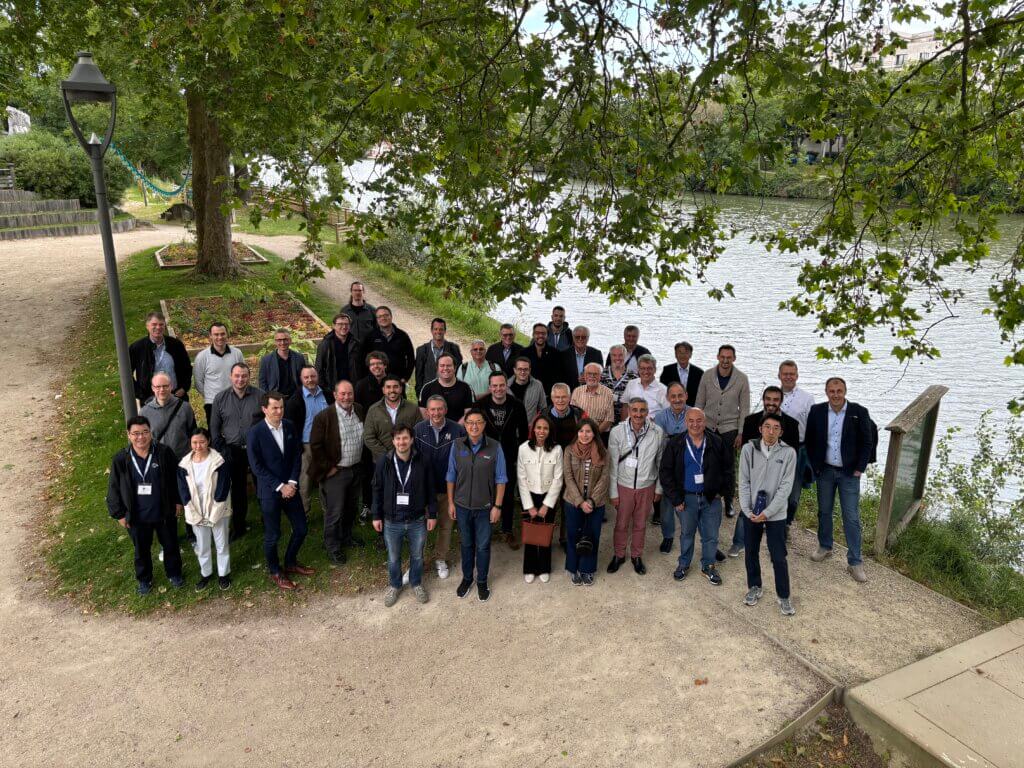
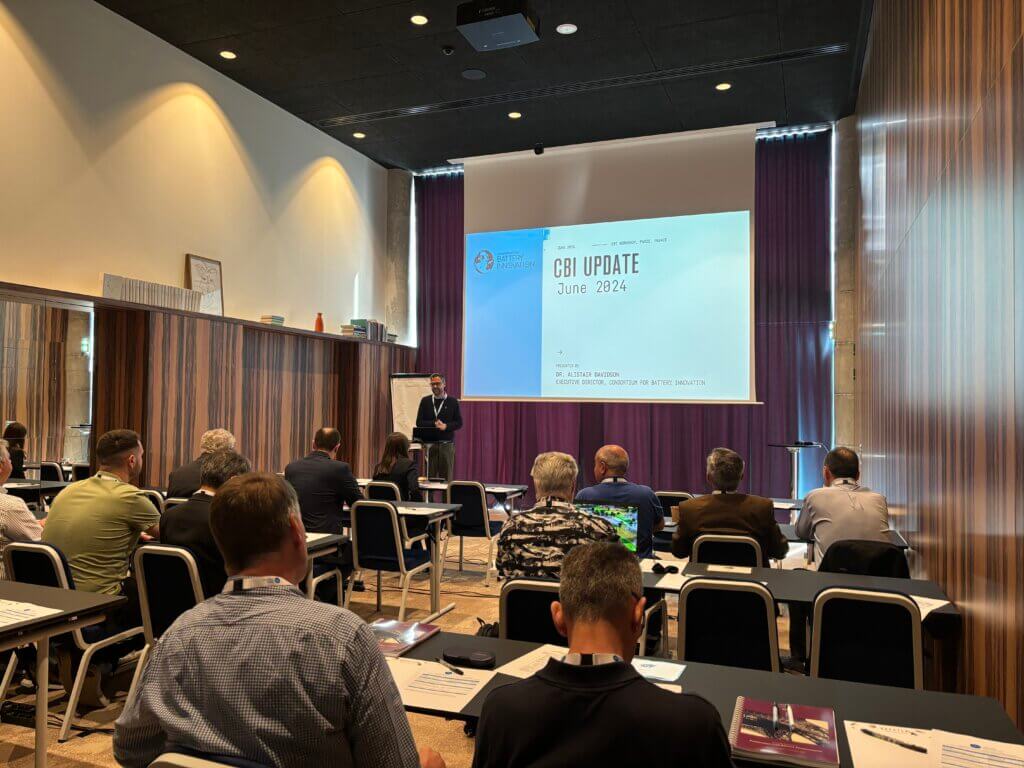



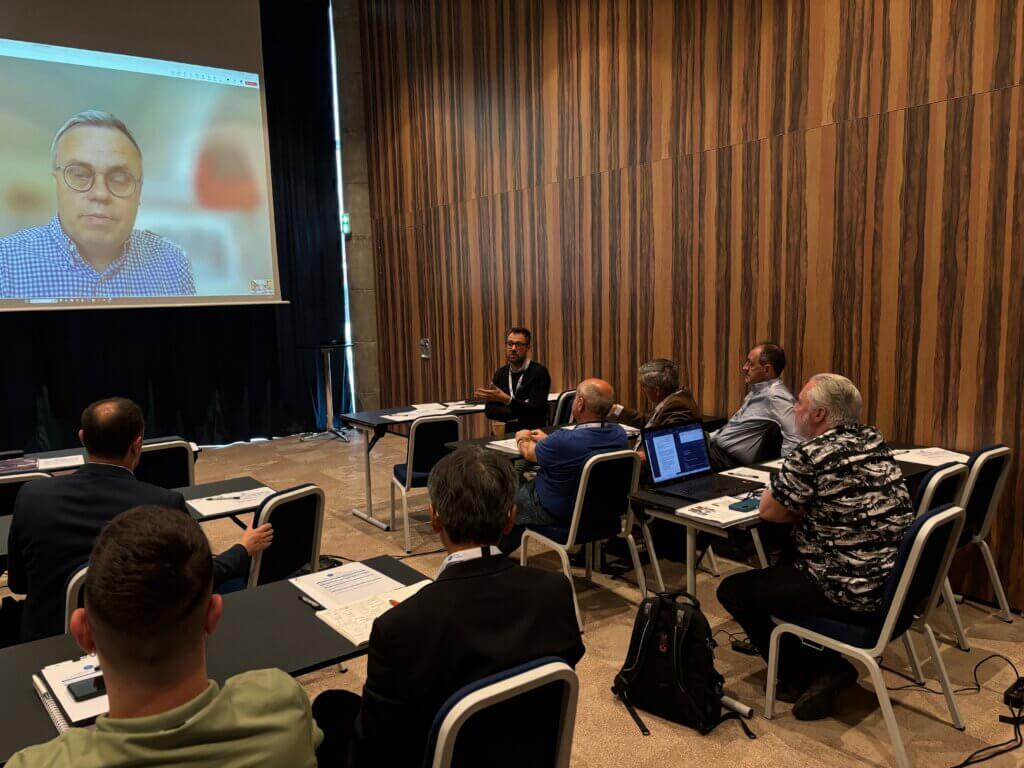
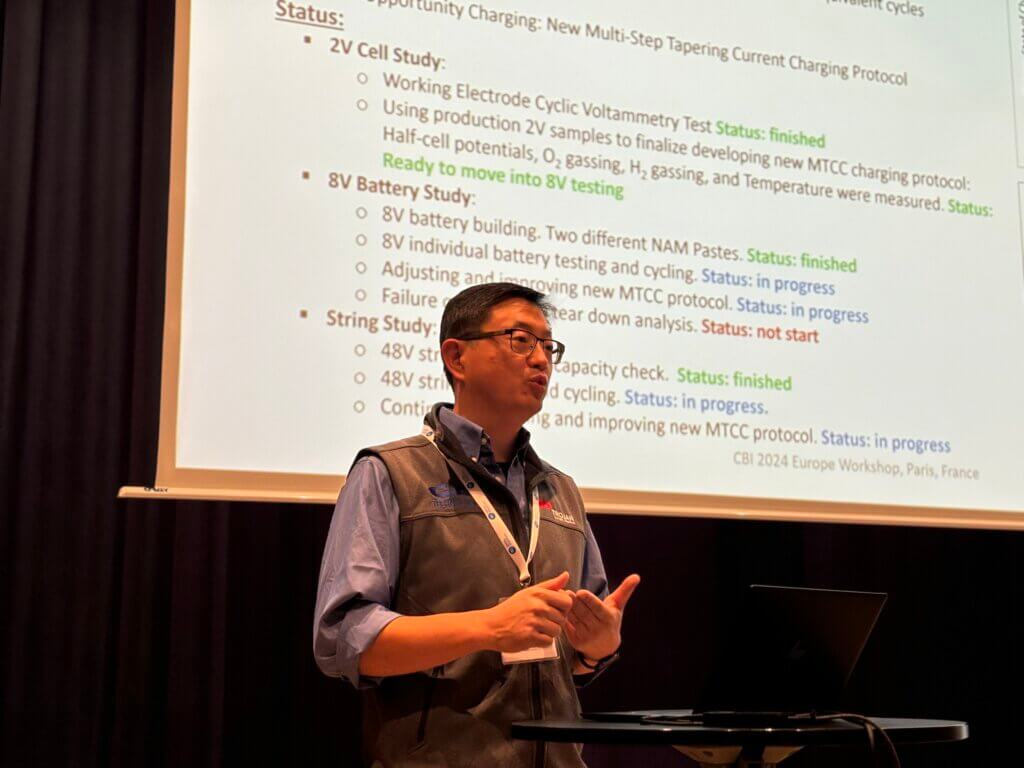
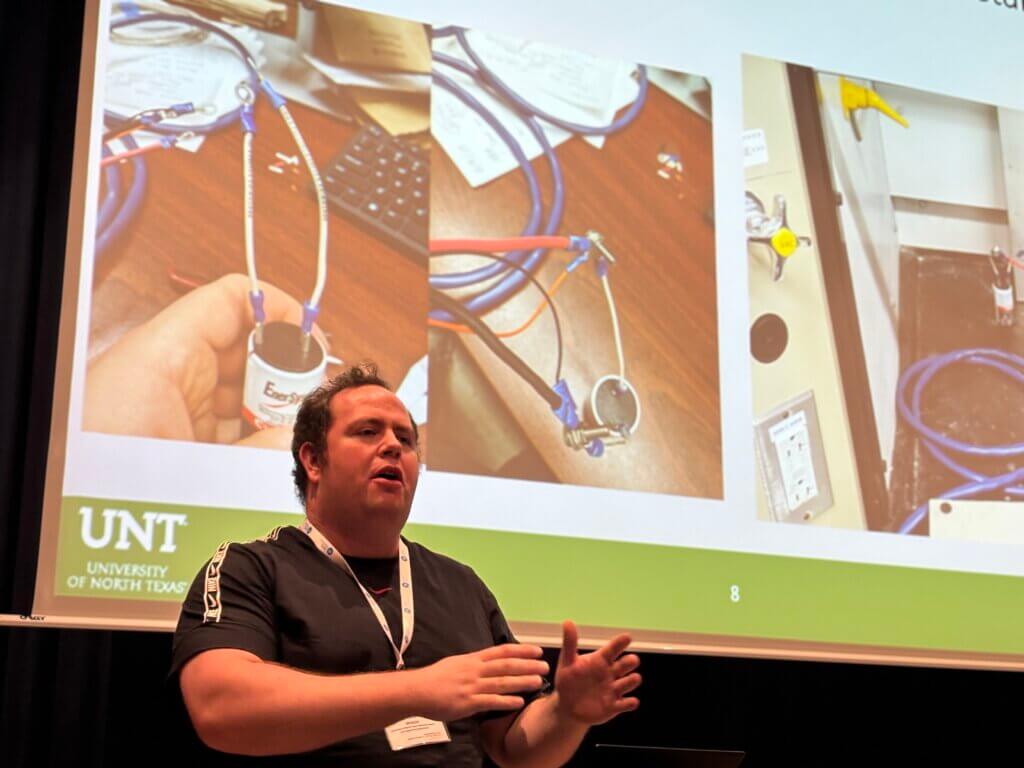
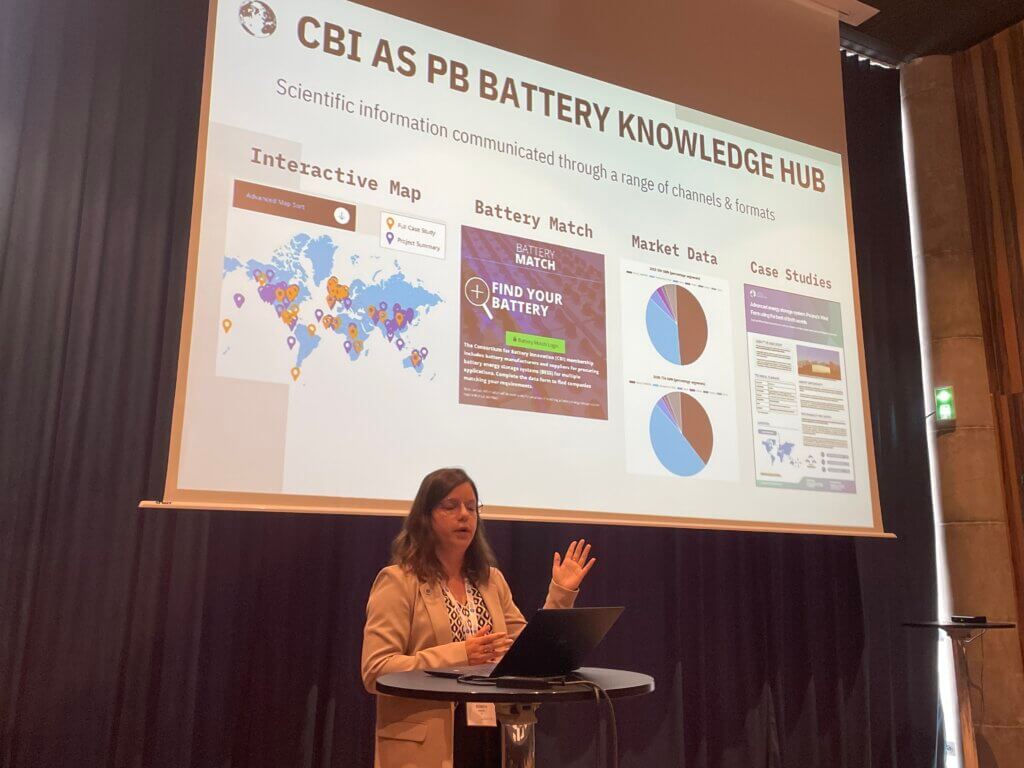

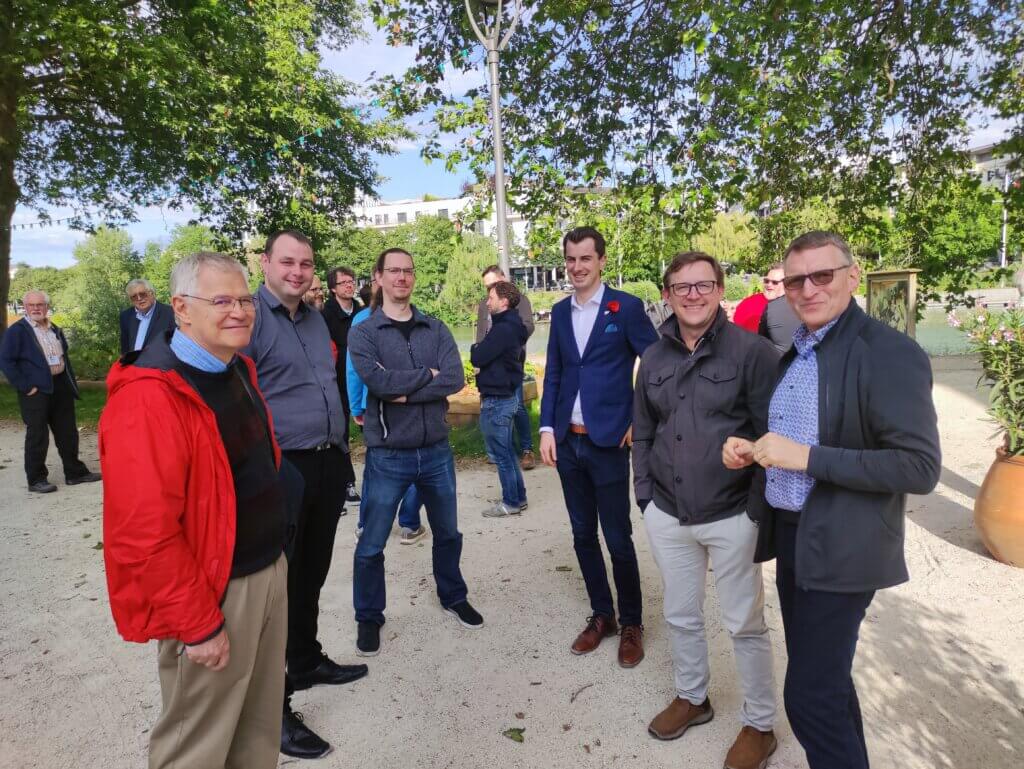



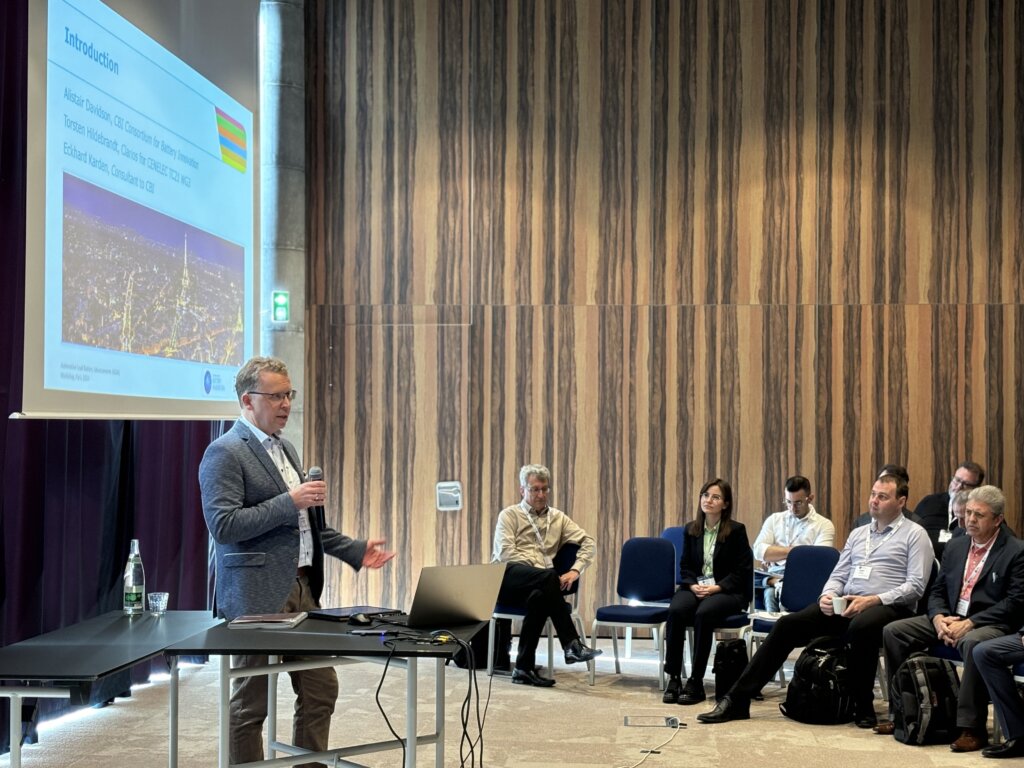
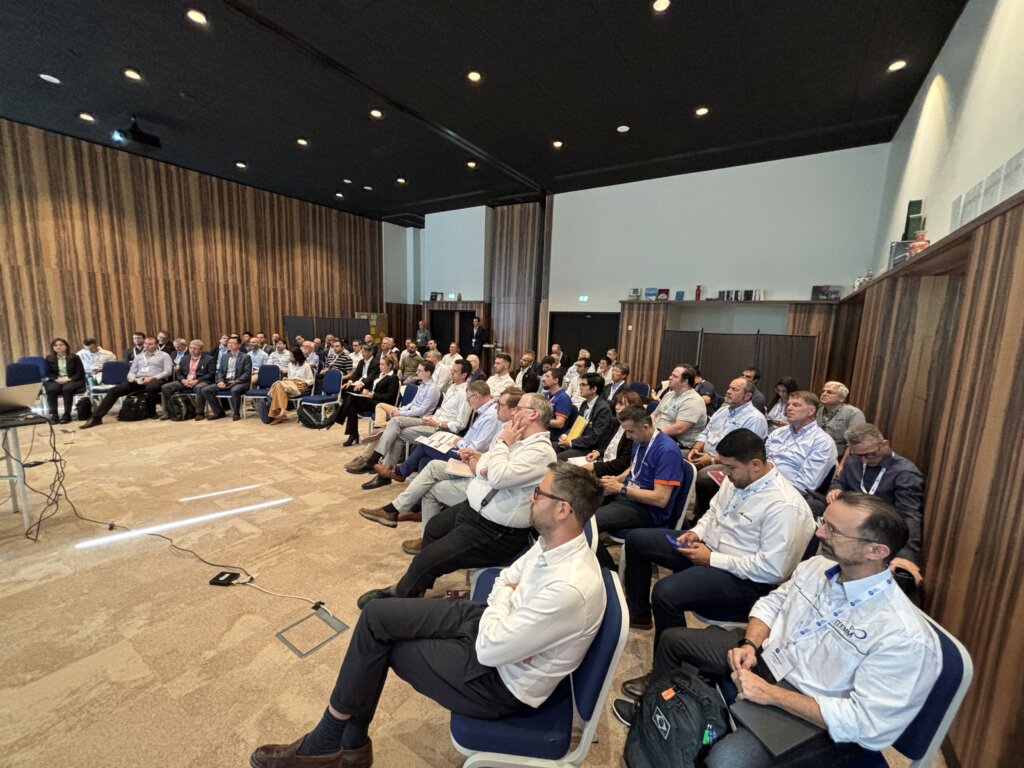
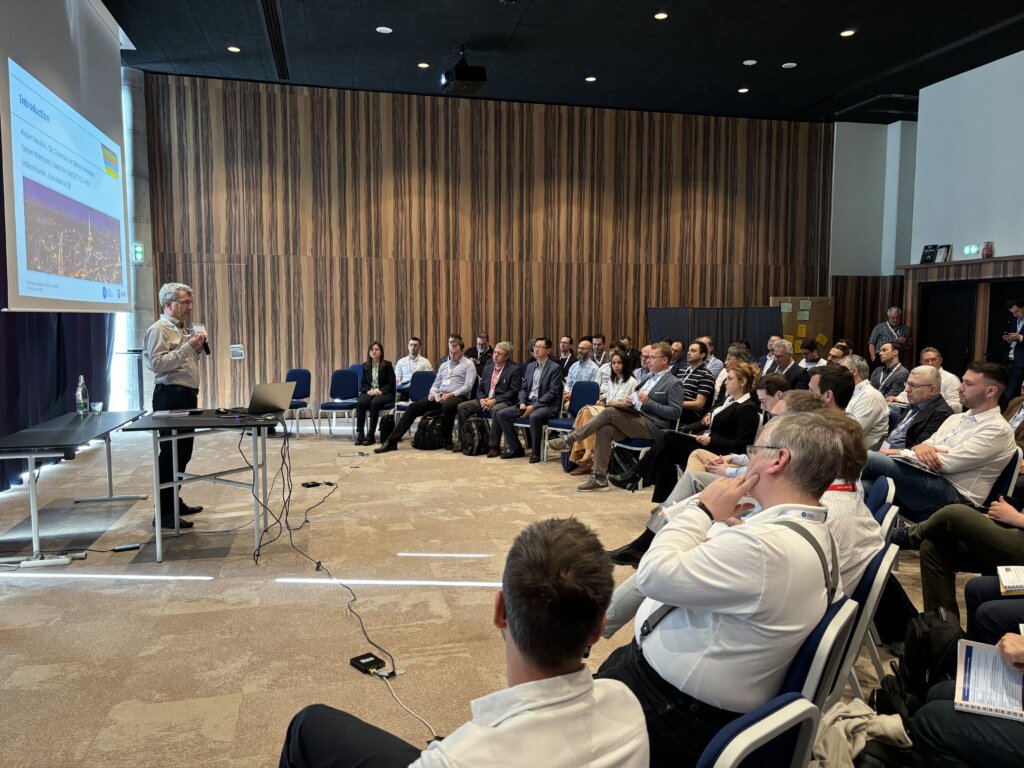

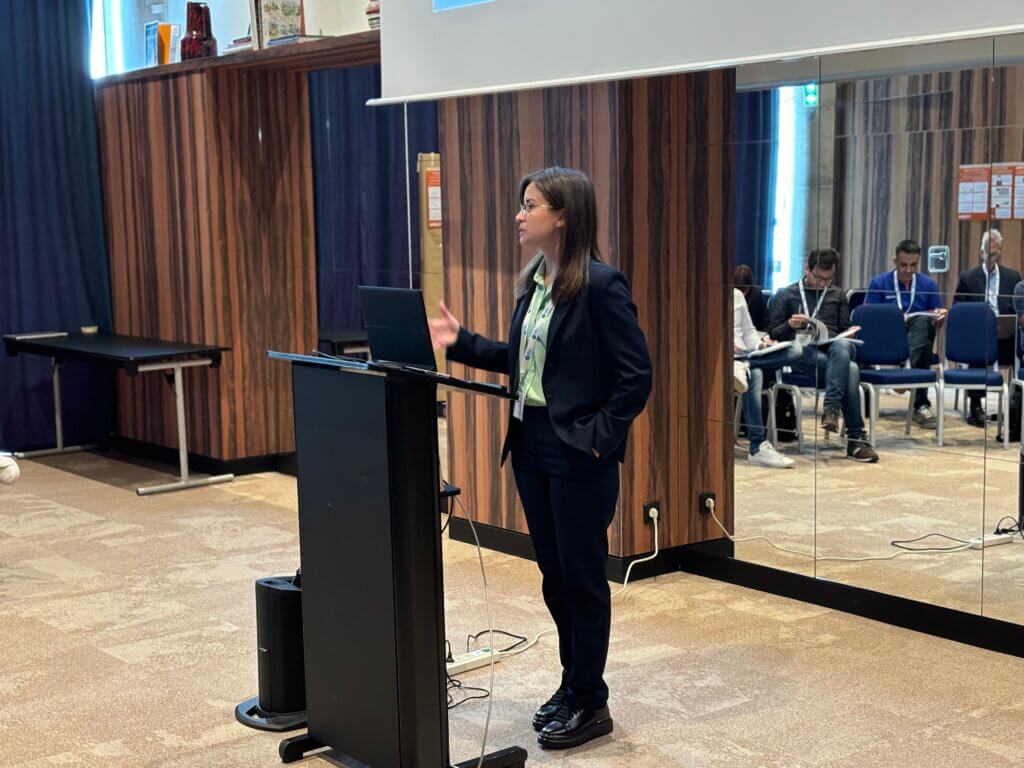
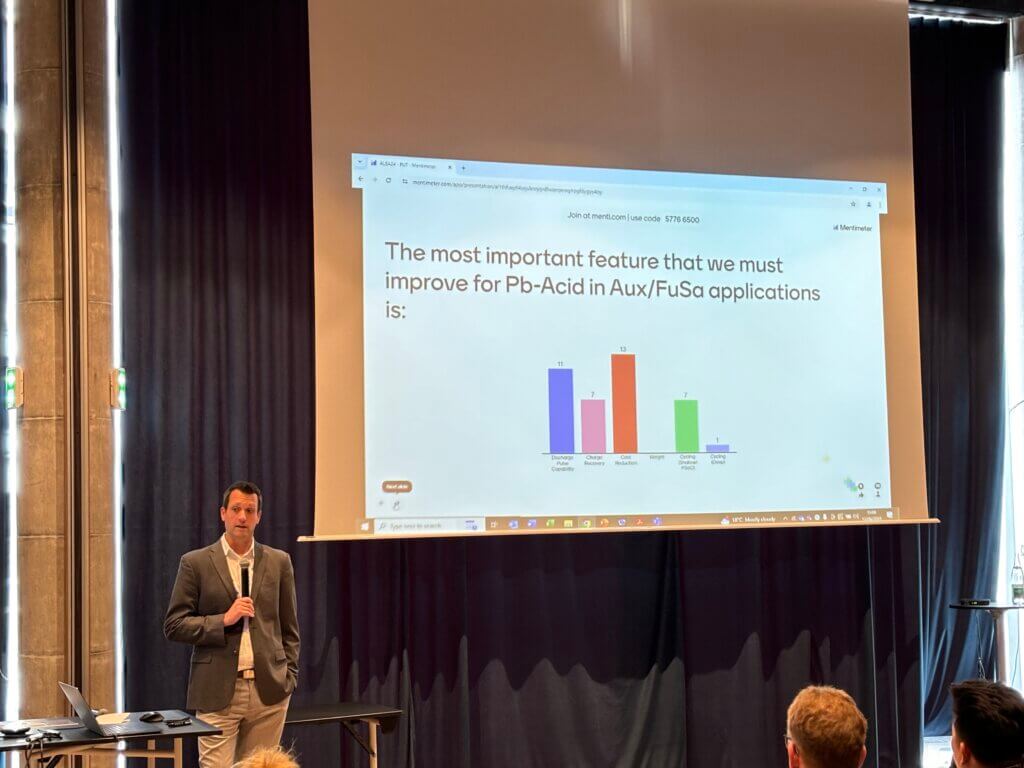
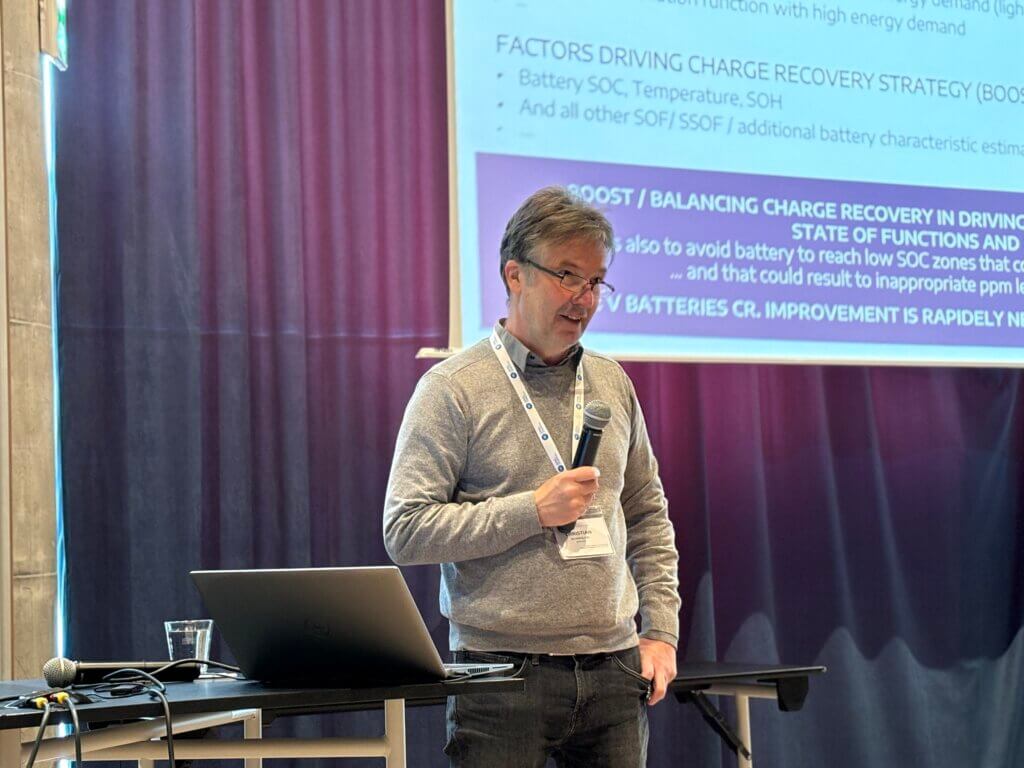


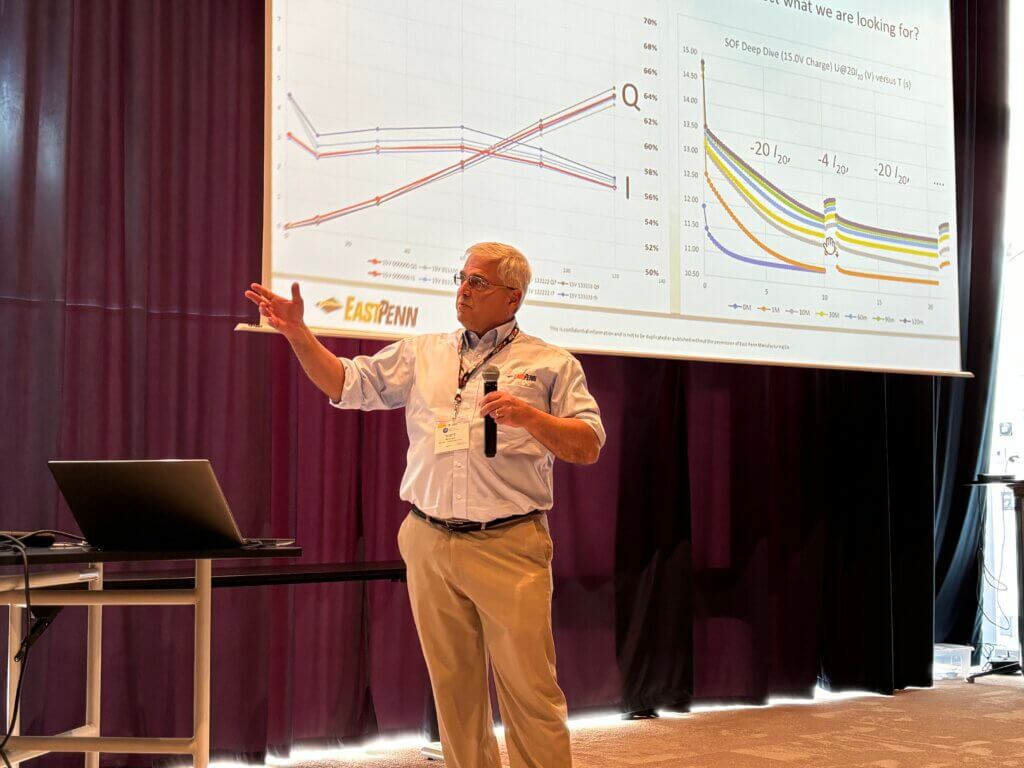
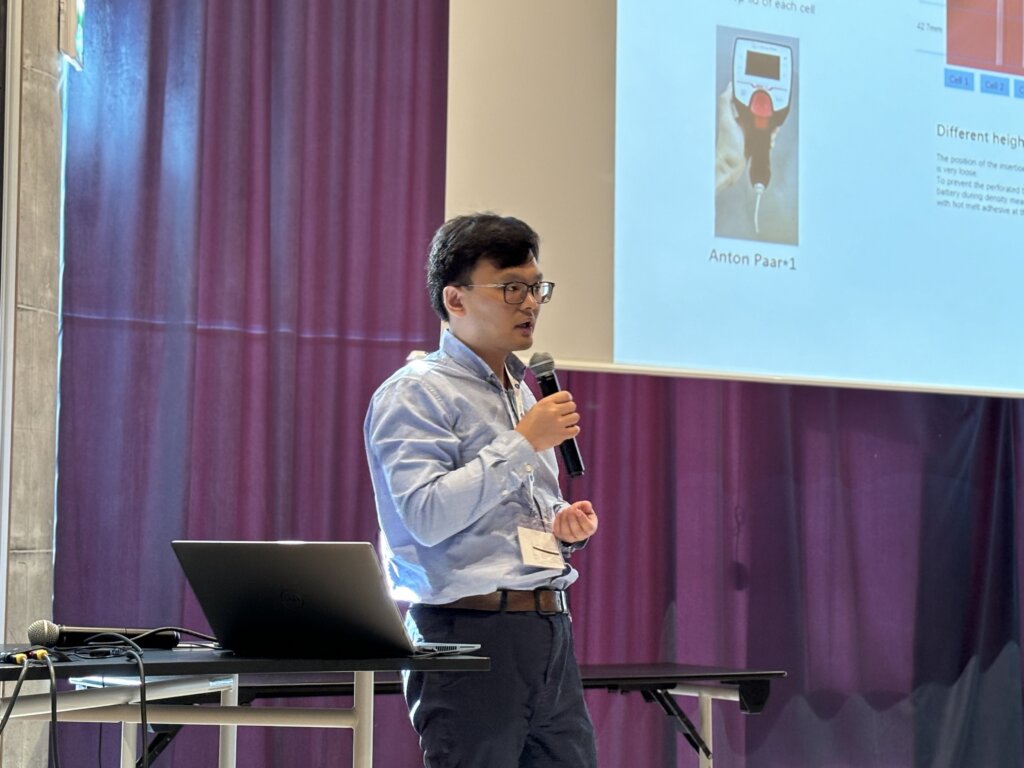

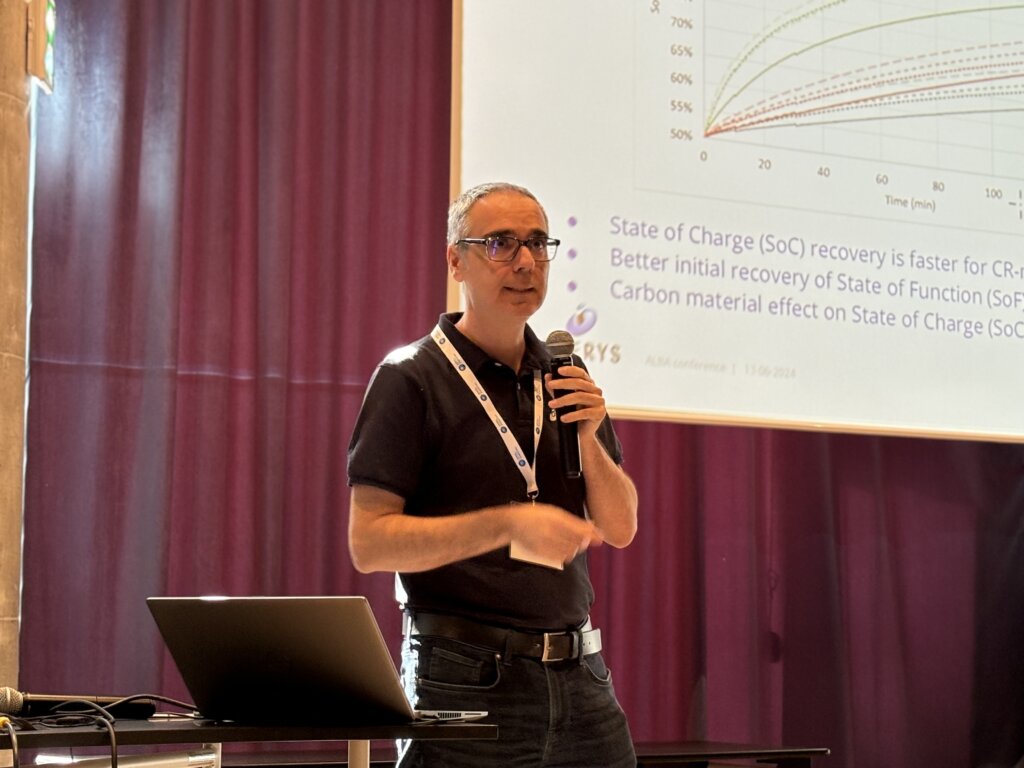
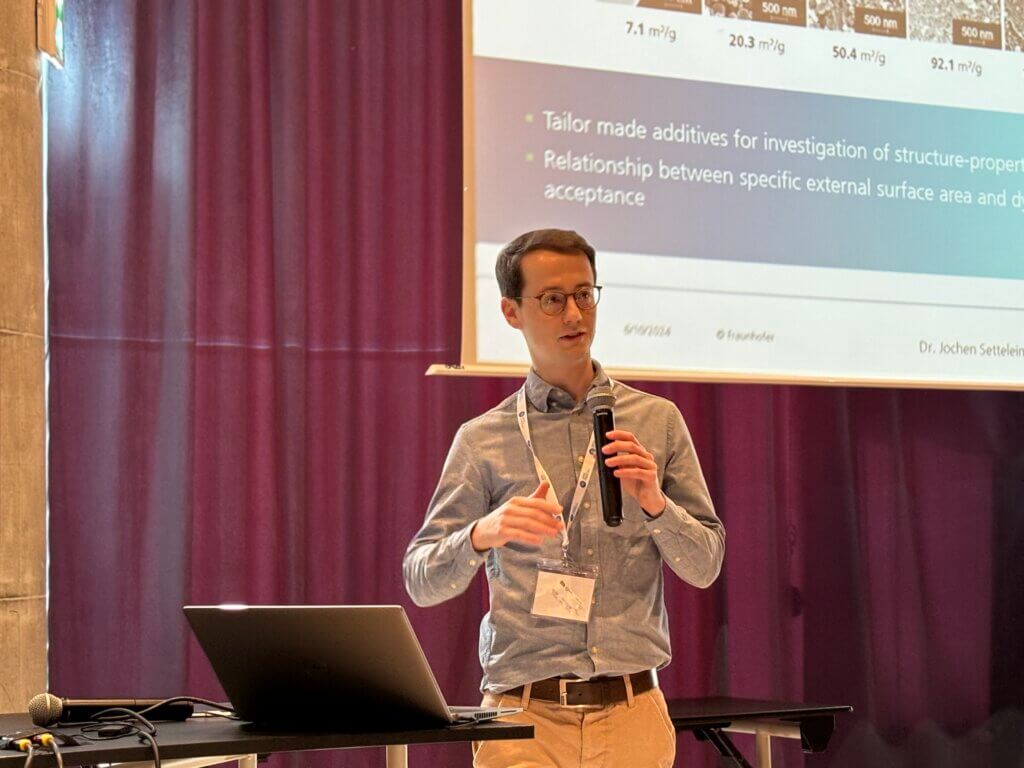
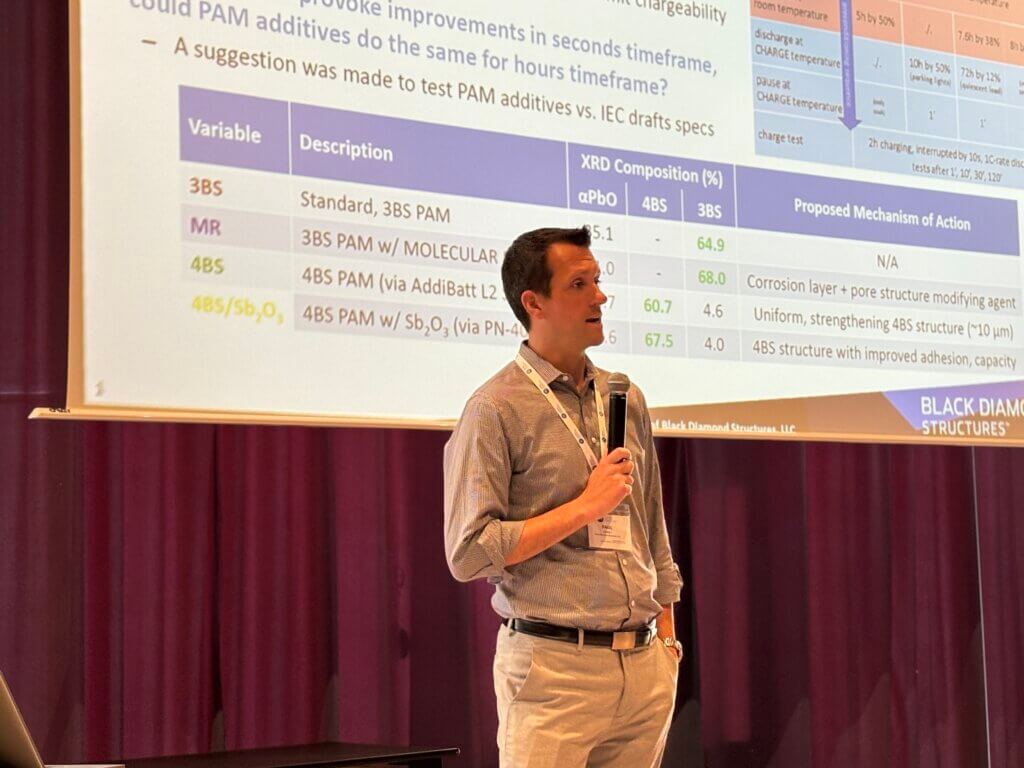
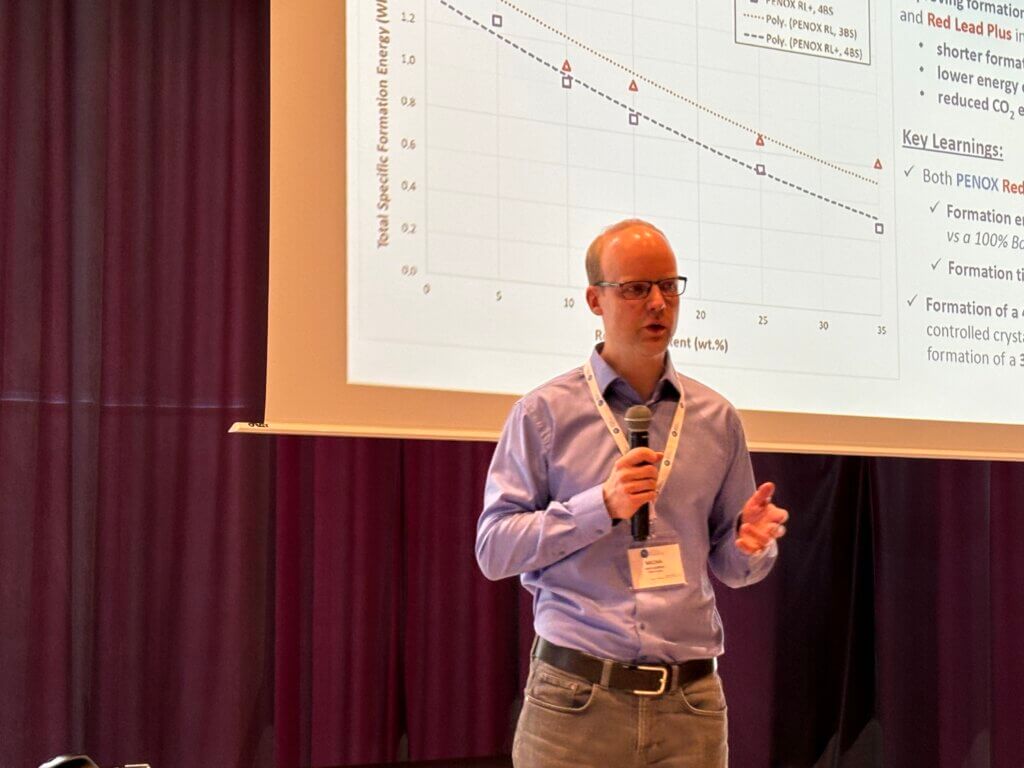






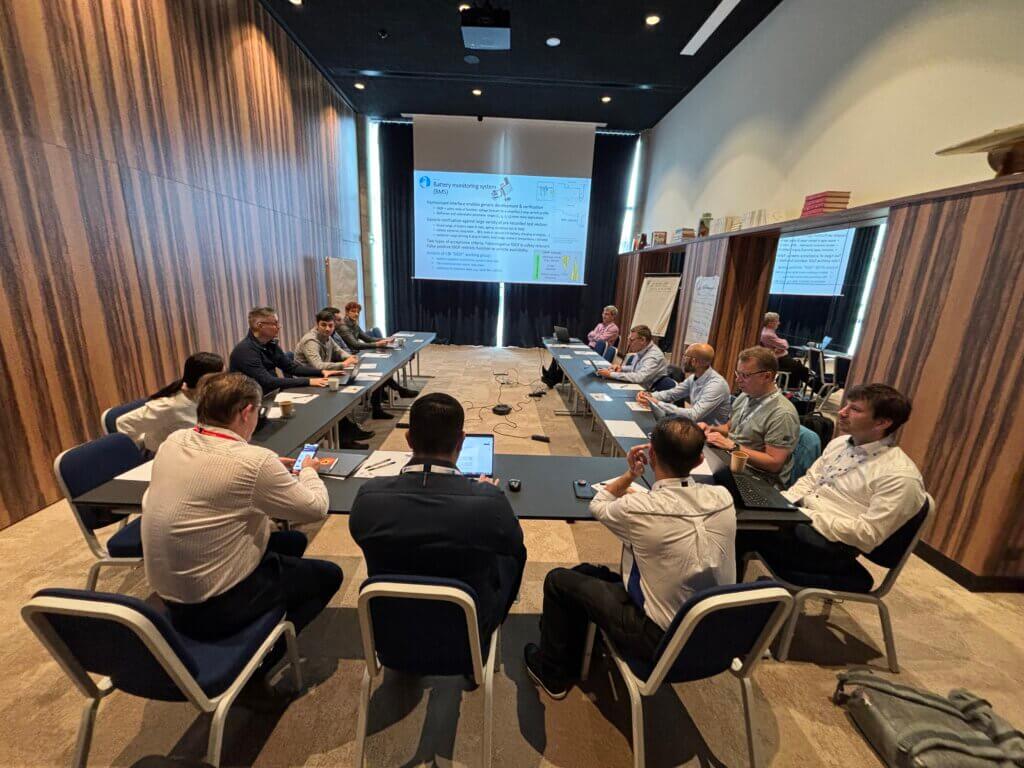
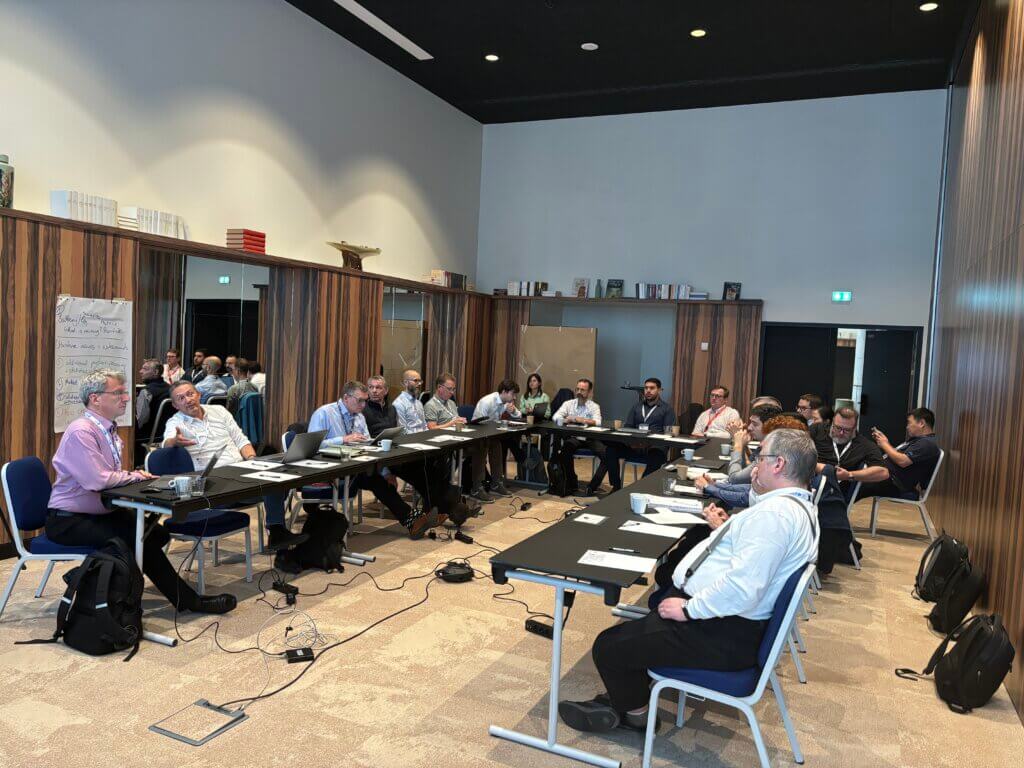

Did you know that there is a lead battery in nearly every vehicle on the road today? Lead batteries are crucial for the automotive industry, with 12 V lead batteries being used for SLI (starting, lighting and ignition), start-stop and micro-hybrid applications. According to Avicenne Energy (CBI’s Market Report 2023), the 12 V lead battery market for automotive applications is expected to grow from US$ 16 Bn in 2020 to almost US$ 25 Bn in 2030.

The Consortium for Battery Innovation (CBI) contributes to the growing demand for high-performing lead batteries by funding pre-competitive research as part of our Technical Program, based on research priorities defined on CBI’s Technical Roadmap. For automotive applications, research focus is on the following performance metrics and electrochemical properties:
| Dynamic charge acceptance (DCA): the ability of a battery to accept instantaneous energy during charging | |
| Hydrogen evolution reaction (HER): the side reaction occurring on a negative electrode surface which accelerates water loss | |
| Cold cranking amperage (CCA): the high discharge pulse power responsible for starting a car, rated at -18 °C for 30 seconds | |
| High-temperature durability: the ability of a battery to perform at higher temperatures, measured by standardised overcharge tests typically above 60 °C |
In the project ‘Investigations on the effect of carbon surface functional groups on electrochemical behavior of lead-carbon electrodes’, finalised in March 2023, Fraunhofer Institute for Silicate Research and Wrocław University of Science and Technology have collaborated to investigate the influence of different types of carbon additives on the performance of negative electrodes in advanced lead batteries. The base of this study was the application of chemical modifications to two different amorphous carbons with low and high external surface areas to obtain a range of acidic and basic carbons for testing. Their key finding was that specific surface functional groups of carbon can increase DCA while lowering HER activity and improving CCA.
Completed in September 2023, the project ‘Best practices of cell testing for EFB regarding DCA and high-temperature durability’ brough together four German partners – Technical University of Berlin, Fraunhofer Institute for Silicate Research, Moll Batterien and Ford Aachen – in a collaborative effort to establish improvements to laboratory test methods for 2V lead battery test cells during battery use in automotive applications. They have successfully defined best practices for measuring weight loss and electrolyte decomposition with 2V laboratory cells during standard tests, and for test cell design and sealing to account for the harsh conditions at high temperatures. These results provide guidance for better optimization of active material formulation for automotive batteries.
Lessons learned from previous projects about carbon surface functional groups and laboratory cells are not only relevant to 12 V lead batteries, but also for the growing use of lead batteries in auxiliary mode. Because of the nonstop evolution in automotive technology, auxiliary batteries have been increasingly employed for safety back-up and supply power to specific electronic features, being a significant opportunity for low-voltage lead battery systems.
Helping to build up that knowledge for this significant emerging market, one new project kicked off in 2023 focusing specifically on auxiliary automotive use. The project ‘In Situ Imaging and Phase Analysis of Live Cell Lead Battery Materials for Auxiliary Battery Cycling Regimes’ is investigating processes occurring at microscopic level during representative tests for auxiliary batteries to understand how positive and negative electrodes change during different charge conditions. This study will link laboratory findings to commercial lead battery products, having large potential to improve performance metrics of lead batteries used in auxiliary applications.
If you want to know more about the findings of pre-competitive research projects supported by CBI, the full detailing of results is available for CBI members.
A recent Brussels meeting emphasized the need to address the priority for a long-term strategy for Critical Raw Materials in Europe. Following the Ukrainian-Russian conflict, not only war came back to our continent after the end of WW II, but we also witnessed adverse effects, such as soaring inflation, geopolitical tensions, and surging energy costs, significantly impacting our everyday lives. Alongside, with growing consequences of the climate crisis, there is no other action than to transition towards renewable energy sources to lower carbon dioxide emissions and make energy more efficient. In this scenario, the Critical Raw Material Act (CRM) sets out an ambitious vision for Europe that seems to fall short when it comes to financing its promises.
By Nicola Filizola

As I attended the Eurometaux rally on April 18th, discussing Critical Raw Materials, I couldn't help but ponder the complex challenges confronting the global scene today.
The Ukrainian-Russian conflict and its aftermath had unforeseeable consequences.
Inflation, international tensions, embargoes, and a dramatic increase in energy costs have affected every aspect of our lives. Electricity bills have soared, fuel prices have spiked, and industries are facing unexpected cost increases, occasionally leading to business failures.
As this was not enough, in the face of these economic challenges, we are also obliged to confront a harsh reality we’ve long ignored—the climate crisis and its severe implications for our planet and its inhabitants.

Consider this, annually, air pollution from fossil fuels and biomass burning is responsible for 7 million deaths worldwide, with associated costs nearing $30 trillion. By 2050, the financial impact of global warming could reach $25-30 trillion yearly. Shockingly, 90% of this pollution originates from energy sources, highlighting its grave impact on human health and the environment (Jacobson M., 2024, Clean, Renewable Energy & Storage for a Sustainable Future, Stanford University). Our dependence on fossil fuels not only raises pollution levels and keeps energy efficiency low, but also introduces risks of price volatility and geopolitical instability.
There is no way out, humanity stands at a crossroads: take decisive actions to protect our planet and future generations or passively face increasingly catastrophic events.
However, there is hope in this ugly scenario. The power to shape our future is in our hands. Embracing renewable energies such as wind, water, and solar is pivotal to electrifying our homes, industries, and transportation systems. But this shift demands innovation, investment, and political will.
If we are to do that decisively, Europe's green transition is expected to boost the demand for critical raw materials. European companies largely depend on imports for these minerals, with a significant amount coming from China. Therefore, this concentration in supply chains places Europe's climate and green industrial policies at considerable geopolitical risk.
The CRM, a new regulation of the European Commission, is part of the broader Green Industrial Plan and is aligned with the Net-Zero Industry Act (NZIA). It emerges as a vital element in this transition, ensuring the responsible extraction and processing of materials crucial for renewable technologies.
The Act, for instance, aims to diversify supply chains. It has set benchmarks for domestic capacities by 2030: at least 10% of raw materials must be sourced domestically, with targets of 40% for processing and 15% for recycling, reducing dependency on single suppliers.

While the CRM represents a positive and very ambitious step for Europe's strategic autonomy, it doesn’t fully tackle the vastness of the challenge. The Act aims to develop a European supply chain for critical raw materials by simplifying permitting processes, yet it needs to allocate additional funding. There’s no doubt private investment is crucial. However, as demonstrated by the US Inflation Reduction Act ($783 billion in provisions relating to energy security and climate change) mechanisms such as tax credits, grants, and loans can greatly bolster the confidence needed for sustained private investment in decarbonising the industrial sector.
To truly enhance resilience and reduce vulnerabilities, the EU must recognise building such resilience comes with a cost. This implies committing to substantial European funding and administrative support, setting realistic diversification targets for European companies through regulations, and ensuring that necessary resources support external trade and partnership strategies.
Aftrak is an innovative project combining solar microgrids and tailored tractors to empower smallholder farmers across Africa. In this interview, Dr. Carl Telford, CBI's Research & Innovation Director, talks about his trip to South Africa to demonstrate Aftrak's capabilities and their exciting journey as finalists for the Milken-Motsepe Prize in Green Energy.
Could you start by telling us a bit about Aftrak? What are you aiming to achieve with this initiative?
Aftrak is more than just a tractor. It's a complete ecosystem where agriculture boosts energy provision, and that energy revolutionises how we farm, leading to economic empowerment. It all started with Jonathan Wilson getting the idea for Aftrak in a hotel bar in Malawi during an Innovate UK field trip about 18 months ago.
Since then, we've secured over £300,000 in funding, designed and built two innovative tractors, and created a smart solar array to power them, all using green energy and recyclable materials. These tractors are easy to assemble and self-propelling, making them accessible to just about anyone. Plus, they use standard 12V truck batteries, so they can also power other essential devices like fridges and lights.
Aftrak made it as a finalist for the Milken-Motsepe Prize in Green Energy. How did you feel when you got the news? What could this mean for the project moving forward?
I was absolutely overjoyed but also a bit torn. On one hand, I couldn't believe we'd made it to the finals of such a prestigious competition. On the other hand, given all the innovation and hard work we've put in, I felt it was well-deserved. Being a finalist is a major achievement and opens up opportunities to expand and potentially create a whole new sector if we win!
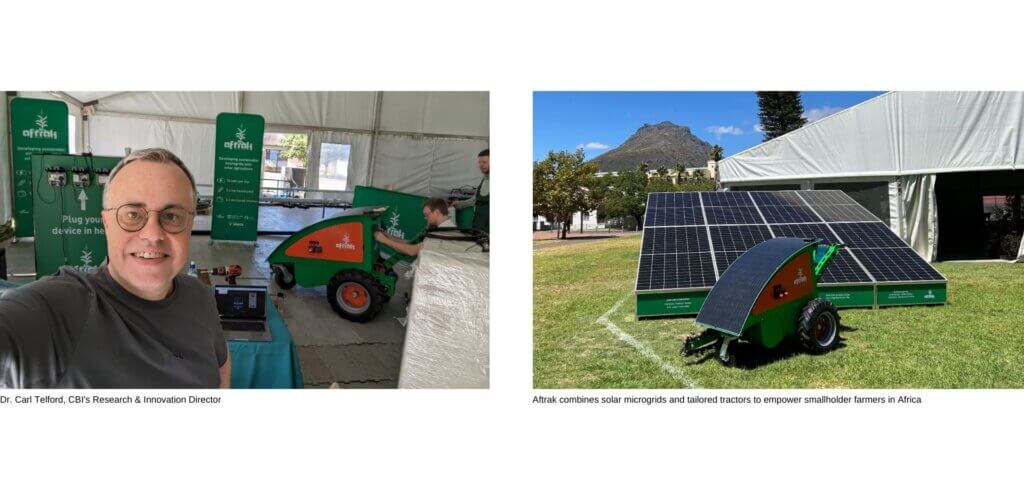
24 hours of innovation
In February, you went to South Africa to demonstrate Aftrak's capabilities. Before heading to South Africa, what were you hoping to accomplish with the demo?
Our first goal was to have all the systems up and running smoothly. The team from Loughborough did an amazing job in this regard. Just getting the units shipped was hard enough in a short time. It was a real challenge, but seeing it all come together and work was just incredible.
How did people react to Aftrak, and what kind of feedback did you get right off the bat?
The response we received was overwhelmingly positive. People were impressed by our team's professionalism and how well everything was set up. They also seemed curious about the Aftrak unit itself, asking what it was, which led us to hold a few mini-training sessions. The Solar Array, in particular, got a lot of attention, with several attendees asking about purchasing it!
You and the team pulled off a 24-hour demo marathon. How did it go, and what were some standout moments?
The 24-hour demo was all about proving that our system could reliably generate 90kW/h of electricity. We exceeded those expectations, which was fantastic. We also wanted to prove the tractor worked. So we got it to dig in a sand pit and power a chest freezer and a tea urn. One funny moment was during the night when we could monitor energy usage and tell the exact time when the security team was making tea!
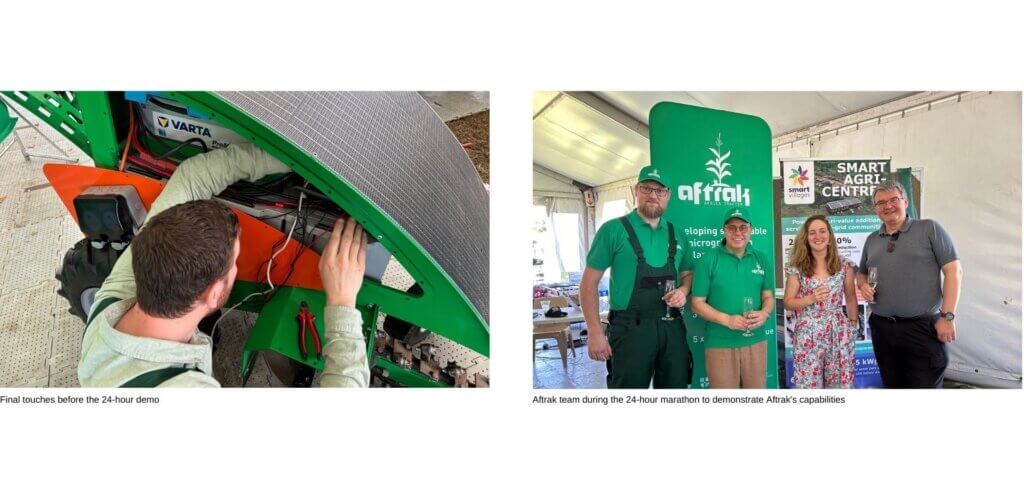
Redefining farming strategies
Deep bed farming is central to Aftrak's strategy. Can you tell us about this method and the difference it makes for the farmers and communities?
In some parts of Africa, a hard layer beneath the soil stops water and roots from penetrating, which is terrible for farming. Our partner Tiyeni developed Deep Bed Farming, which is a proven method that breaks up this layer, increasing crop yields, reducing flooding, and providing additional revenue for smallholder farmers. This technique, however, requires a lot of manual labour. Unless you use an Aftrak unit, which can do it for you.
Trips like these always have their surprises. What was something unexpected that happened during your time in South Africa?
One of the most unexpected things was a sudden power outage during our setup, which is a huge issue in South Africa. At one point, the entire demo tent went dark! However, we quickly hooked up our tractor to the power supply, lighting up the tent again and allowing everyone to continue their preparations.
With the announcement just around the corner, how do you feel about Aftrak's chances?
It may sound like a cliche, but making it to the final five is the real achievement. Just getting on the stage at the Milken conference is already a win for me. I believe we have a chance, but I don't have any additional expectations from this point on. I don't think we could have done any more in terms of preparation, and I have confidence in the team going forward, whether we win or not. That's all I have to say!

Aftrak's vision for the future
Looking down the road, what's the big dream for Aftrak? Where do you see it going, and what kind of impact do you hope it'll keep having?
It's very straightforward. We want to provide access to energy, double crop yield, reduce flooding, and enable economic and literal empowerment for millions of people in sub-Saharan Africa. However, to achieve this, we have a lot of work ahead of us.
We need to establish a company or, at least, find some way of building it on a large scale. Additionally, we must ensure the system is affordable for end-users. Despite these major challenges, we have made huge progress in the last 18 months, and I believe these are achievable.
Among all the milestones Aftrak has achieved so far, is there one that stands out as a 'wow' moment for you? What made it so memorable?
There are two. The first was when I saw the Aftrak unit in person at Loughborough University, all set to ship out to South Africa. It made all of it seem real. The second moment was when I arrived at the demo site in Stellenbosch. There, I saw all the equipment being set up, and I also met the team from Malawi for the first time in person.
At that point, I remembered Jonathan's initial idea that we had discussed in the hotel bar. A lead-battery tractor? At that time, I told him he was crazy. But the more we explored the idea, the more it made sense. In Stellenbosch, after seeing the people and the technology, my belief in what we were doing took off like a rocket.
We live in an era when smart homes have become part of our everyday lives and energy storage systems are changing the way we think about energy.
Growing up, many of us were captivated by the portrayal of modern and futuristic homes on television. Each depiction was unique, yet they all shared a common charm—a certain "wow" factor that held our gaze, sparking imagination about the endless possibilities technology could bring to the future. Although we may not have parking spots for family spaceships in our backyards just yet, the vision of the future we once admired is closer to reality than we might think.
Today, we live in an era when smart homes have become part of our everyday lives. Our houses now integrate various inventions, all harmoniously working together. By integrating smart technologies that make our homes more energy efficient, we're taking steps towards preserving our planet and addressing the ongoing climate crisis.
Technology meets sustainability
An example of such smart technology is a battery energy storage system. This modern yet increasingly common technology enables us to capture and store energy for later use, marking a shift in how we power our homes. This article takes you on a journey through the modern home, exploring practical and innovative uses of energy storage systems. Transforming what may once have appeared as science fiction into part of the solution for a greener, more sustainable lifestyle, energy storage systems are changing the way we think about energy.

The tour already begins outside the house, where the renewable energy narrative forms under the open sky. Solar panels, discreetly placed on the roof, capture and convert the sun's warmth. This stored energy then finds its way back into the house, supplying hot water for daily use or heating indoor spaces, making every drop of sunlight count. This highlights how sustainability and modern living go hand in hand, showing that even our garden can play a role in powering the home.
As we enter the house and step into the living room, the last rays of daylight fade into the soothing glow of several desk lamps, all backed up by energy stored from today's sunshine. The television, gaming consoles, and even the WiFi router sip electricity from the reservoir of clean energy. This seamless integration of energy storage systems allows us to relax in front of the television after a long day or cosy up on the sofa with a favourite novel under the warm light of the lamp without giving a moment's thought to outside energy constraints.
Smart energy in action
Moving into the kitchen, the narrative of energy efficiency continues. Here, everyday activities continue as usual but with a green twist. Appliances, backed up by an innovative energy storage system, manage power usage with precision. The refrigerator hums quietly to keep the food fresh while the oven preheats for dinner, and the dishwasher stands ready, all running on stored energy. The effortless way the kitchen incorporates and utilises stored energy highlights the real-life benefits of energy storage systems, seamlessly blending functionality and sustainability.
Moving further into the house, we find ourselves in the utility area. Here, the air thrums with the quiet power of energy storage systems, balancing the home's temperature through a clever heat pump paired with batteries. These systems allow solar energy to efficiently power the heat pump, which can then be used to keep the house warm or provide hot water, even long after the sun has set.

Heading to the garage, the connection between energy management and mobility can be seen in action. An electric vehicle has become an essential part of the home's energy system, quietly charging and preparing for its next journey. Here, the vehicle-to-home power-sharing concept comes to life, allowing energy to flow back into the house during peak times or unexpected outages.
Green future with energy storage
Concluding the journey through the house, we can see energy storage systems integrated into our daily routines as a glimpse into a more sustainable future. From the warm comfort of the living room through the bustling kitchen and out into the garden, we see a snapshot of what could become the norm.
As the European Union strides towards a greener future with initiatives such as the Green Deal, homes equipped with battery energy storage systems are helping us get closer to energy independence. The battery energy storage market is predicted to grow significantly, and all battery technologies will play an important role. In light of the pressing need for climate action, these systems represent vital components of sustainable living and a greener, technologically advanced world.
LoCEL-H2, a four-year initiative, is bringing innovative energy solutions to remote communities in Africa. In this interview, Dr. Athanasia-Maria Tompolidi, CBI's Research & Innovation Manager, discusses the project's goals, technological innovations, and commitment to community empowerment.
Let's start with the basics. Can you tell us what the LoCEL-H2 project is about and what it aims to achieve?
Of course. LoCEL-H2 is an innovative, four-year project under Horizon Europe that kicked-off in January 2023. It aims to bring scalable microgrid systems to isolated communities. These communities often lack steady access to energy like electricity and clean cooking facilities, which is taken for granted in the developed countries.
We combine solar power, advanced lead battery systems, and green hydrogen technology to offer sustainable and affordable energy solutions. And it is not just about technology. Empowering women in these communities is a big part of our project, especially in places like Zambia and Ivory Coast. We have an amazing team of partners from all over the globe, bringing diverse expertise to the table.
In a world teeming with green innovations and an urgent need for sustainable solutions, what sets LoCEL-H2 apart from the crowd, and why is it particularly crucial now?
LoCEL-H2 uniquely intertwines new technology with Social Sciences and Humanities (SSH) insights, hitting that crucial spot where technical solutions meet community needs head-on. We are in sync with the EU's hydrogen strategy and REPowerEU plan, introducing innovative ways for decarbonisation and independence from fossil fuels. By introducing green hydrogen solutions in developing countries, LoCEL-H2 contributes to global decarbonisation efforts and supports the European Green Deal's objectives.
Given the challenges posed by climate change, especially for vulnerable countries, projects like LoCEL-H2 provide essential tools for Climate Adaptation. It addresses critical issues such as food security, water supply, education, disasters risk reduction and public health.
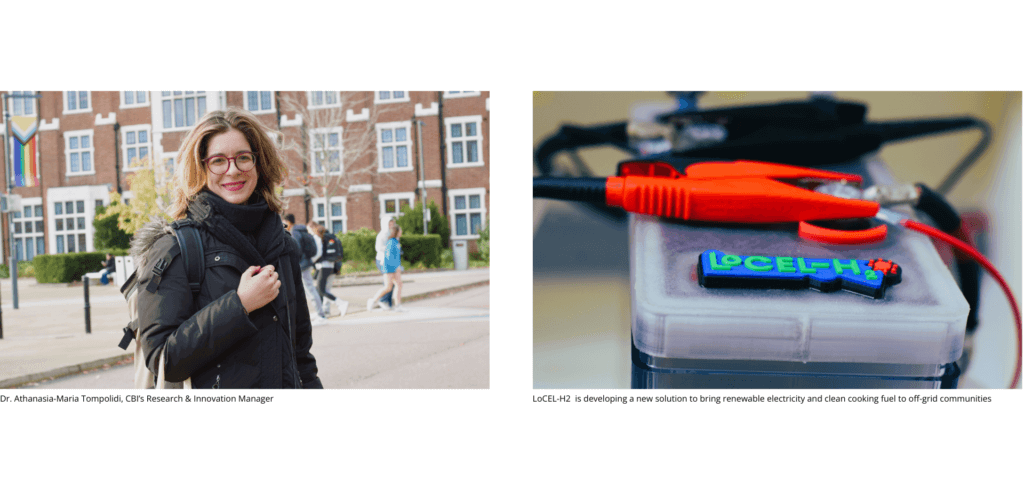
From sunlight to energy storage
Innovation is key to the project. Could you explain how green hydrogen and advanced lead batteries work and why they're game-changers?
LoCEL-H2 stands on three innovation pillars. The first is a scalable, plug-and-play microgrid that uses solar energy to power communities. The second is a battery energy storage system tailored for households, small businesses, and community infrastructures to ensure a steady energy supply. The highlight is our community-shared battery-electrolyser, a novel system for energy storage and green hydrogen production.
Our vision with LoCEL-H2 is simple: we want to re-power the communities, quite literally. These smart innovations contribute to tackling energy poverty and provide sustainable solutions for those lacking access to reliable energy.
Could you give us an update on how the project is progressing and any significant milestones you've hit so far?
This past year has been remarkable. LoCEL-H2 has made significant progress thanks to our team's hard work and collaboration. We have mapped out stakeholder databases across continents. Our team has visited African and Pakistani villages to learn more about the communities and their energy needs. Key technical milestones of the project include the strategic design of our battery-electrolyser and advancements in energy storage solutions.
Our team has been meeting regularly, both online and in person, to ensure we stay on track. We had a face-to-face General Assembly in Naples in the autumn of 2023 and are looking forward to the upcoming one in Brilon, Germany, in the spring of 2024. It is very reviving to keep the in-person interaction.
Communities thriving on clean energy
Everyone's excited to see results. What are the short-term and long-term benefits LoCEL-H2 brings to the table?
LoCEL-H2 aims to change the way we access energy while promoting social and economic growth. Our focus is on innovative microgrid technology that combines battery-electrolyser and advanced lead battery energy storage to meet the unique needs of communities.
In short term, our goal is to empower communities by providing them with education and training on how to manage and benefit from these energy systems. We are working closely with people on site to ensure they are not just recipients but active players. This approach helps to create job opportunities and stimulate local economies.
In long term, we envision these efforts blossoming into sustainable, self-sufficient communities thriving on renewable energy. By introducing this technology, we're also helping to position the EU as a leader in clean energy innovation, supporting the green energy transition.
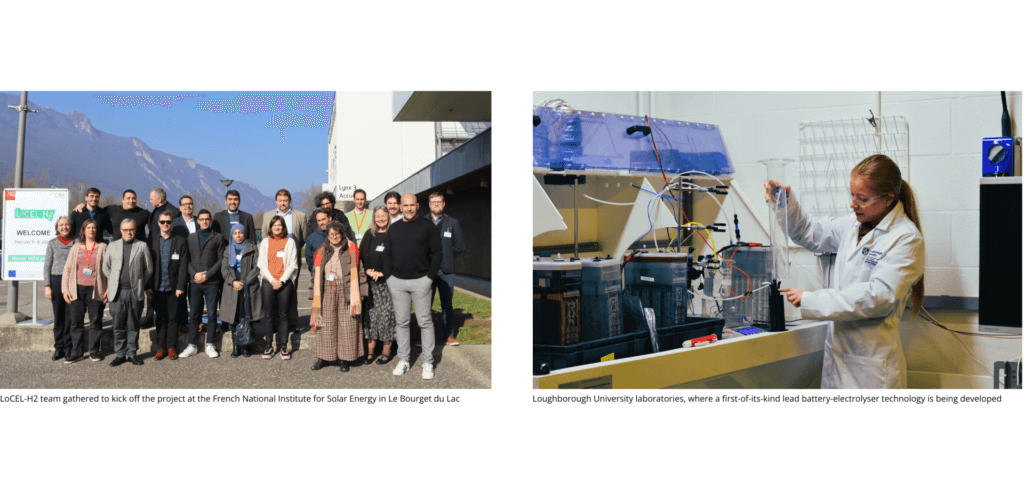
Beyond energy access, how does the project aim to influence societal change, for example?
At the heart of LoCEL-H2 is a deep commitment to societal change, particularly through empowering women in some of the world's most vulnerable areas.
We aim to see these women replacing old, smoky stoves with clean, green hydrogen, stepping into new roles, and changing the game in their communities. Our goal is to give them the time and resources they need to engage in social activities, achieve financial independence and be in charge of their own lives.
Moreover, with cleaner cooking, we are looking towards a greener future for them and the entire planet. It's a big vision, but with every step, we're closer to making it a reality.
Energy equity for sustainable future
Looking ahead, how do you plan to expand the reach of LoCEL-H2 to empower more communities worldwide?
Our aim for the future is to expand the impact of LoCEL-H2 beyond the current scope. We are working on integrating renewable energy into the very fabric of communities in need. This is particularly important when the world faces high energy demands and climate concerns, and sustainable solutions are needed more than ever.
Aligned with the EU's strategic priorities to mitigate climate change, LoCEL-H2 is committed to supporting the transition towards green energy across the globe, with a special focus on Africa, where the need is most acute. This can be achieved with collaborations with initiatives like Energising Africa and the Clean Cooking Manifesto. Increasing access to clean cooking is a topic that has been high on the global climate agenda, for example in the last United Nations Climate Change Conference COP28, and LoCEL-H2's technology is particularly well suited to be part of the solution.
Our approach is about connecting, sharing, and collective learning, which we believe to be some of the most valuable aspects of the project. We are sparking a movement through interactive webinars, training sessions, and collaboration with sister projects under Horizon Europe.
So, when discussing what's next for LoCEL-H2, it's all about showing that energy equity and a sustainable future are possible. LoCEL-H2 is dedicated to providing access to clean, green energy to communities worldwide. Its mission is to empower, inspire, and support the adoption of sustainable living practices worldwide.
Uncovering the key role of energy storage in Europe's green revolution
As we step into a new year marked by record-breaking temperatures, the urgency to address climate change intensifies. A recent analysis has confirmed 2023 as the warmest year on record, with over 200 days setting new daily temperature records.
It is crucial that cities join the shared drive to mitigate the climate crisis and transition to greener, more sustainable energy. This was emphasised at COP28, where fossil fuels were officially recognised as the primary cause of climate change for the first time after 28 years. Within Europe, the European Commission is leading the way by introducing ambitious initiatives such as the Fit for 55 package and Effort Sharing Regulation to shift towards a low-carbon economy. These initiatives have sparked innovation and collaboration among European cities as they strive to embrace a more sustainable path.
The second part of our series on sustainable cities highlights the transformative efforts of three European cities – Helsinki, Ljubljana, and Sofia – in embracing energy storage to spearhead their sustainability goals. These cities serve as examples of how local governments can initiate a transition towards renewable energy, sustainable transportation, and emission reduction.

Embracing sustainable energy solutions
In the northern part of Europe, Helsinki is a pioneer in sustainability. The Finnish capital has embraced energy storage as a key element in achieving its goal of carbon neutrality by 2030. The city has launched an inventive project in collaboration with its energy provider to integrate battery energy storage into electric vehicle charging stations. The initiative taps into the potential of electric vehicles as mobile energy storage units, capable of storing excess energy generated from renewable sources. This energy can power the vehicles or be returned to the grid, making the energy ecosystem more connected and resilient.
According to the city's mayor, Juhana Vartianten, building a sustainable future is the most pressing issue we face today. "Helsinki wants to encourage cities around the world to embrace sustainability work and take concrete action. The coming years will determine the direction humanity takes, " said Vartiainen in the 2023 Voluntary Local Review, "That is why we must act now, and we must act together. We still have a long way to go, but fortunately, we are heading in the right direction."
Sofia, the vibrant capital of Bulgaria, is another city that has made sustainability a cornerstone of its urban development strategy. The city has implemented a number of innovative projects that are helping to reduce its reliance on fossil fuels and improve energy efficiency.
One of Sofia's most notable initiatives involves the installation of intelligent batteries throughout the city's public transportation network. These batteries act as mobile energy storage units, allowing buses and trams to store energy while braking or coasting downhill. The captured energy can then power the vehicles as they climb uphill or accelerate. This approach has shown promising results during its trial phase, with an expected 10-15% reduction in fuel usage and a 30% decrease in harmful carbon emissions, contributing to cleaner air and a more sustainable transportation system.
In addition to the environmental benefits, Sofia's battery storage project also streamlines the public transportation system, reducing the need for frequent recharging. The batteries provide a clean source of energy that can be used during peak hours, allowing passengers to rely on a more efficient public transportation system.

Harnessing the power of energy storage
Ljubljana, the capital of Slovenia, is known for its eco-friendliness and sustainable urban development. The city is taking steps to make its buildings sustainable while preserving its rich cultural heritage. One way Ljubljana is achieving this balance is by implementing energy storage systems in public buildings and infrastructure. The Ljubljana City Hall is equipped with a battery storage system that can store energy from the sun. Moreover, Ljubljana aims to expand its energy-saving efforts beyond City Hall by installing energy storage systems in public buildings such as schools, libraries, and other facilities.
Integrating energy storage systems into public buildings is a win-win solution for both cities and citizens. By doing so, the city enhances energy security, lowers energy expenses, and provides backup power during grid outages. This not only reduces the city's environmental footprint, but also provides its citizens with reliable access to energy.
In a world where climate change looms, Helsinki, Ljubljana, and Sofia are examples of how innovation and energy storage can shape a sustainable future. These cities have set the bar high by adopting measures that align with the EU's Green Deal goals, aiming to reduce carbon emissions and switch to renewable energy sources.
Helsinki's electric vehicle charging stations, Ljubljana's public buildings integrated with battery systems, and Sofia's intelligent battery storage for public transportation all show how technology can help create a cleaner, more resilient planet. By reducing carbon emissions and embracing renewable energy sources, these cities are leading the way in the fight against climate change.
Batteries are a fundamental driver of the green energy revolution. It is estimated that our society’s energy needs represent over 70% of all carbon emissions, with the largest shares coming from electricity and heat sources and transportation systems. The push to achieve net-zero is evident from numerous governmental initiatives such as the EU's commitment to cut carbon emissions by more than half by 2030, and global pacts such as the recent COP28 deliberations. To reach these goals means to effectively decarbonise the energy sector, and batteries will support the rollout of renewable energy infrastructure by providing energy storage capacity and reduce transport-related emissions by powering electric vehicles.
Batteries in energy markets are currently dominated by lithium-ion technology, but their employment in electric vehicles is given priority due to this technology’s unrivalled properties for this end use. This opens space for different technologies in other applications. Energy storage is a notable example, with battery energy storage capacity expected to grow twentyfold by 2030. All viable battery technologies will be needed to fulfil this soaring demand, and research & innovation to improve consolidated technologies is identified as an important way forward.
Lead batteries are currently the only other technology with well-established manufacturing and recycling infrastructure across the globe. But even if today's advanced lead batteries have come a long way from classic lead-acid car batteries in terms of overall performance, there are still various pathways for further improvements being discovered and explored.
The Consortium for Battery Innovation (CBI) is the only global lead battery pre-competitive research organisation. Our goals are to help deliver the advanced lead batteries needed for the energy transition and to demonstrate their power to bring real change. We do so by assessing market needs to define concrete research goals, by providing financial support to breakthrough projects through our Technical Program, and by establishing partnerships to develop pioneering advanced lead battery-based solutions.
In this overview, we discuss how some of our projects are paving the way to unlock the full potential of advanced lead batteries for the green energy transition.
The indispensable low-voltage ally
Electric vehicles are key for a decarbonised transport. As the nonstop evolution in automotive technology requires more and more from the main lithium-ion battery, smaller auxiliary batteries, also called low-voltage EV batteries, have been increasingly employed for safety back-up and supply power to specific electronic features. This means advanced lead batteries can work alongside lithium-ion batteries to ensure our future decarbonised road transport fleet is also safe.
CBI’s Technical Program has been supporting projects focused on automotive lead battery optimisation for start-stop, microhybrid and auxiliary use. Some encouraging results include improvements in the methodology of laboratory cell testing to investigate key parameters for automotive applications, and valuable insights on the role of additive formulations to enhance automotive battery performance. Ongoing studies, such as the investigation on microscopic changes in positive and negative electrodes during different charge conditions, along with future projects, will continue to provide guidance for better active material formulation and performance metrics.

Taking energy storage capability to the next level
The shift to renewable energy is just getting started, and more extensive rollout will be closely followed by a sharp increase in the need for energy storage systems to compensate for the intermittent nature of these energy sources. Global performance targets are aggressive and require different battery technologies with long lifetimes, high total energy throughput and low acquisition cost to meet technoeconomic needs. Our industry is focused on delivering longer lasting and more energy dense batteries to help meet the demand for utility, commercial, residential, and industrial energy storage applications.
Different projects supported by CBI’s Technical Program have been investigating advanced lead battery enhancements specifically for energy storage applications. Key findings so far include insights into barium sulphate additive configurations that can bring benefits to overall cycle life, and in-situ analyses during battery operation to understand charge and discharge processes and their products. More exciting results will come from projects and initiatives starting in 2024, including CBI’s involvement in the U.S. National Consortium for the Advancement of Long Duration Energy Storage Technologies. This will keep adding to our growing knowledge base and contributing to advanced lead battery performance improvement for energy storage.

Powering a just transition
The lack of access to both electricity and clean cooking, known as energy poverty, remains a pressing global issue. It is estimated that 775 million people lack access to electricity and 2.2 billion people lack access to clean cooking fuels, mostly in Sub-Saharan Africa and developing Asia. Providing universal clean energy access leaving no one behind is essential for a successful green energy transition. But the rollout of renewable energy in areas with no or incipient grid infrastructure is challenging, and lowering investment costs is a must. Through ongoing partnerships, we are demonstrating that the combination of microgrids and advanced lead battery storage is an excellent solution to provide clean and affordable energy for remote communities.
In an ongoing initiative funded by Horizon Europe, we are helping to develop a deployable clean energy solution with provision of electricity through prosumer-based solar microgrid coupled with an energy storage system made of advanced lead batteries. One core innovation in this battery energy storage system is the addition of an electrolyser to produce green hydrogen, which can be used as clean cooking fuel. By the end of the project in 2026, the team will deploy two full-scale pilots of this pioneering energy solution, one in Côte d'Ivoire and one in Zambia.
CBI is also contributing to another smart solution, this one already in testing phase: a solar energy microgrid with a combined micro electric tractor. Advanced lead batteries power both the microgrid energy storage system and the tractor. The project, funded by Innovate UK, aims to bring a 2-in-1 solution for rural communities by providing clean energy and optimising land preparation. Recent field demonstrations have shown the potential of the micro electric tractor to significantly increase crop yields, which will help to increase smallholder incomes. The solution has been selected as one of the finalists of a prestigious international green energy prize.
Novel solutions like these not only alleviate energy poverty issues but also provide a pathway toward citizen empowerment. They can substantially contribute to universal access to modern energy and to achieve other Sustainable Development Goals regarding poverty reduction, health and education.

This is why we believe the future is bright and green and we will continue to drive advanced lead battery innovation for sustainable development and a climate-resilient future.
Our colleagues Matt Raiford, CBI's Senior Technical Manager, and Alyssa McQuilling, CBI's Research and Innovation Manager, were featured in the latest Beyond Lithium podcast episode hosted by Nate Kirchhofer from BioZen Batteries. The discussion revolved around the work of CBI, research and innovations driving the industry, exciting new projects, unique features of advanced lead batteries and the future of energy storage.
CBI's projects and mission
Matt kicks off the conversation by outlining CBI's mission as a pre-competitive global research organisation with over 130 members worldwide. According to Matt, the priority of pre-competitive research lies in CBI's focus on applications and innovations benefiting the entire lead battery industry. "It's like taking a step back and looking at first principles," Nate summarises, as both guests noted.
The conversation reveals CBI's projects, showcasing an advanced lead battery technology for different applications. Matt and Alyssa shed light on CBI's involvement in global government funding opportunities, with recent projects spanning Europe and the UK. Alyssa introduces the current LoCEL-H2 project, featuring the unique battery-electrolyser. The technology stores energy to produce electricity on demand and utilises initially unwanted side reactions to produce hydrogen for cooking purposes. Another noteworthy project, Aftrak, showcases a solar advanced lead battery-powered tractor for deep-farming piloted in Africa. "These projects highlight something really important about batteries in general, that they can enable a whole new way of living," noted Matt.

A closer look at lead batteries
The podcast takes a turn as the team delves into the chemistry of lead batteries. "Lead batteries have been around for a hundred years, and they've been doing a lot of work," Nate acknowledges, addressing the never-ending question of getting people excited about lead. Dispelling misconceptions around lead batteries, Matt and Alyssa passionately discuss their unique benefits, including sustainability, an increasingly relevant factor in today's society. "Lead is the most recyclable product in the world," Matt emphasises, "This results in a recycling rate of over 99% in the US and Europe."
Energy storage takes centre stage in the conversation, as it has been emerging prominently in political dialogues worldwide. According to Matt, the performance rate of lead batteries is the main driver for energy storage. First invented in a French man's backyard, lead batteries evolved drastically into well-adapted products. As a scientist, Matt wondered how this technology didn't advance when he came across it years ago. The explanation is simple: there was no market driver. Nowadays, there is one. "That's what we're doing at the CBI. A lot of our research is inspired by the needs of the market," Matt explains.
The future of energy storage
"We need a lot of energy storage integrated into the grid as we decarbonise and electrify more," Alyssa states, touching on the need for diverse technologies to meet the escalating need for clean energy. This offers countless opportunities across sectors. The demand for energy storage and battery innovations go hand in hand. Improvements in cycle life and battery materials are a few examples of research in national labs, where new technologies and techniques are involved to better understand batteries at a fundamental level.
The podcast concludes with a forward-looking perspective on the future of energy storage. The energy storage sector's scale and pace of development promise a huge demand for batteries. "We see a steady growth for lead. For energy storage, the sky's a limit. We're talking about terawatt-hours batteries needed by 2030," Matt says, highlighting the increasing need for diverse technologies to coexist harmoniously. "We just have to create a cheap battery that lasts a long time," he concludes with a smile.

A special thanks to our colleagues, Matt Raiford and Alyssa McQuilling, for this insightful conversation, showcasing the work at CBI and providing valuable insights into the role of lead batteries in shaping a sustainable and energy-efficient future. Listen to the full podcast on the Beyond Lithium website.
Europe's commitment to renewable energy in the face of climate change
Climate change is happening right before our eyes and presenting new challenges for the world. European communities are grappling with increasingly frequent and intense extreme weather events that have profound impacts and demand our attention. The consequences are severe, from urban areas transformed into fiery landscapes during sweltering heat to towns inundated by floods.
The root cause of the climate crisis is our heavy reliance on fossil fuels. Burning these fuels releases greenhouse gases into the atmosphere, trapping heat and warming the planet. This disturbs the delicate balance of our climate system and intensifies the occurrence of extreme weather events. To face this crisis, we need to move towards a cleaner future with renewable energy sources such as solar and wind power. In addition to reducing our dependence on fossil fuels, renewable energy is essential for strengthening community resilience. This aligns with the European Union’s Green Deal, which outlines a comprehensive set of policies aimed to achieve a carbon-neutral economy by 2050.

European summer of extremes
This summer, Europe experienced a series of record heatwaves and devastating wildfires that have swept across the continent. The European Forest Fire Information System reports that up to 41% of the area burned in the EU is in Natura 2000 protected sites. In 2023 alone, wildfires have released more than 20 million tonnes of carbon dioxide into the atmosphere, exceeding the European average over the last two decades.
The Mediterranean region was hit hardest by this year's heat waves. The streets in Greece's ancient port town of Gytheio shimmered as temperatures climbed to an astonishing 46.4 degrees Celsius, setting a new record since record-keeping began in 2006. Life stood still in the sweltering heat, and the streets remained deserted. The heatwave also triggered a wave of wildfires that ravaged the countryside. Nearly 20,000 tourists abandoned Rhodes hotels due to the threat of wildfires, marking the largest evacuation of its kind in the country's history. The intensity of the heatwave caused widespread power outages and plunged towns into darkness. Hospitals struggled to maintain patient care, and businesses were forced to shut their doors.
In May 2023, Italy found itself in the grip of unforgiving weather. The tranquil rivers of Tuscany turned into raging torrents that surged through towns and villages, leaving destruction in their wake. Homes vanished beneath the rising waters, and critical infrastructure crumbled under the weight of the deluge. The downpours lasted 80 hours of relentless rainfall over six days, causing flooding and infrastructure collapse, leaving the affected areas in darkness. Over 20,000 citizens were forced to evacuate and seek refuge in temporary shelters such as schools, sports halls, and gyms.
Not only floods but also severe storms with strong winds are becoming a pressing concern in Europe. This year, Norway faced several relentless storms marked by a historic amount of rainfall. The Norwegian meteorological institute reported extremely heavy rainfall in parts of Norway, marking the strongest in the last 25 years. As winds and heavy rain swept across the region, trees were uprooted, flights faced delays, ferries stopped running, and power lines scummed to disruption. In cities like Oslo, people were urged to work from home. Meanwhile, in the small village of Bagn, nested in the heart of a valley surrounded by forests, landslides wreaked havoc, severing its residents from the outside world.
Researchers at Newcastle University predict extreme weather events will become more frequent due to the climate crisis. "Alongside drastically cutting emissions, countries must build more resilient infrastructure," the researchers said.

Renewable energy and climate resilience
In the face of a changing climate, Europe is at a crossroads. Floods, wildfires, and storms dominate the headlines. As extreme weather events become more frequent, the transition to renewable energy is necessary. The European Union recognises this need and has adopted bold initiatives such as the European Green Deal, a comprehensive roadmap to reach climate neutrality by 2050. Central to this strategy is the Fit for 55 initiative, which aims to reduce greenhouse gas emissions by at least 55% by 2030. Additionally, the RePower EU plan aims to decrease the dependency of the European Union on Russian fossil fuels and promote green energy.
These initiatives address the challenges highlighted by the extreme weather events. By transitioning to renewable energy, Europe reduces its dependence on fossil fuels and mitigates the effects of climate change. Renewable energy, coupled with energy storage systems, can enhance communities' resilience and help them withstand increasingly severe weather events. Renewable energy ensures a reliable electricity supply amid widespread damage from floods, provides backup power to fire stations during wildfires, and restores power to villages cut off during severe storms. As Europe navigates through new climate challenges, transitioning to clean energy becomes a vital tool to help us ensure a safer and more sustainable future in the face of these extreme weather events.
Want to know more about CBI’s work to achieve a carbon neutral economy in Europe? Subscribe to our newsletter here.
Europe’s bold plan for clean air and economic growth
Climate change is unfolding right before our eyes. While discussions surrounding it have persisted for decades, the time for mere discourse has passed. This year, we saw Arctic sea ice hit record lows during winter, endangering polar wildlife and accelerating global warming. In contrast to the ice decline, Europe experienced devastating floods in many countries. Heavy rains and high river levels caused widespread flooding, affecting communities and infrastructure. These are not isolated incidents but signs that our planet is in distress. It is now crucial to translate words into action. That's precisely where the European Commission’s Fit for 55 package takes the stage. As a vital part of the EU's Green Deal, this visionary plan is strategically crafted to tackle the pressing challenges of climate change. Its main objective is to reduce greenhouse gas emissions in the European Union by at least 55% by 2030. As the world heats up and our environment gets sadly more unpredictable, Fit for 55 steers towards a greener, more sustainable future.
At the heart of this change is energy storage. In the context of the Fit for 55 package, there are several reasons highlighting its importance. Energy storage fuels the transition to environmentally friendly transportation and green mobility. This is possible through innovations like smart grids and battery systems powering electric buses in urban areas. Such integration of energy storage with public transportation not only reduces emissions but also makes green mobility accessible. Energy storage opens up job opportunities and boosts local communities. Furthermore, it is crucial in making energy more affordable, offering a safety net for those grappling with rising energy costs.
Driving the energy transition
As a result of the Fit for 55 initiative, energy storage operates on three essential fronts: improving air quality, generating job opportunities, and stabilising energy prices.
Air pollution is a serious problem affecting millions of people around the world. It can cause respiratory problems, heart disease, and cancer. Improving air quality is one of the key goals of the Fit for 55 package. It sets a bold target: zero emissions from new cars and vans by 2035. Energy storage is a vital driver in this journey to reduced air pollution and eco-friendly mobility.

Electric cars are the ambassadors of emission-free transport, and energy storage has the ability to power them. Energy storage also provides backup power for charging stations, ensuring that electric car owners can always find a place to recharge. Electric cars produce fewer emissions than traditional diesel-powered cars, and increasing their use helps to improve air quality. It is a stride towards a future defined by greener travel, with less smog and more fresh, clean air.
Cities and towns all over Europe are tapping into the potential of energy storage, harnessing electricity from renewable sources like the sun and wind. This stored energy fuels the urban transit networks, providing a lifeline to buses and trams. The result? A sharp decline in air pollution, quieter streets, and reduced reliance on fossil fuels. Energy storage acts as a safety net for electric buses and trains, improving the resilience and reliability of public transportation systems. In the event of a power outage, energy storage can provide backup power, ensuring that the city's transport continues to operate. Energy storage becomes an indispensable sidekick as the world shifts towards green transportation, creating a healthier environment.
Added to the industrial new development, there is another aspect of European’s stagnating and lasting issue: high employment rates. The job market is evolving unprecedentedly, leaving job seekers and employers grappling with new challenges and opportunities. As the global appetite for renewable energy grows, so does the demand for a diverse and skilled workforce. The Fit for 55 package aims to create more job opportunities within the clean energy sector. Energy storage, among other clean energy solutions, calls for an array of professionals, from engineers and technicians to electricians and software developers.
When an energy storage company establishes a new factory in a rural area, it does not only bring job opportunities to the community but also stimulates the local economy. The ripple effect is significant, as various services are required to support the factory. Construction workers, transportation services, and material suppliers all benefit from the newfound wave of activity. This synergy, driven in no small part by energy storage, highlights the potential of clean energy to power our homes, livelihoods, and economies.
Affordable energy is a pressing concern for communities and individuals globally. The COVID-19 pandemic and the war in Ukraine have aggravated the energy crisis, pushing energy prices to record highs. This is having a devastating impact on people and businesses, particularly those who are already struggling to make ends meet. The Fit for 55 package seeks to make energy more wallet-friendly for everyone, and energy storage is central to this vision.
Energy storage allows storing electricity during quiet hours when it's less expensive and tapping into these reserves when electricity prices skyrocket during peak demand. It's akin to purchasing energy at a discount rate and seeing savings grow.
Energy storage fosters self-reliance, particularly in regions prone to power hiccups or environmental concerns. Community solar initiatives, often supported by energy storage, are expanding access to solar energy, cutting the cords to the traditional power grid. This approach delivers a double victory, benefiting our finances and the planet's well-being.
Integrating an energy storage system for homeowners with solar panels complies with having a personal vault for energy. During the day, the excess energy is safely stored away. This energy is later used to lighten homes without sending electricity bills soaring. Energy storage systems are transforming the energy landscape, addressing the energy affordability crisis and making it more accessible for everyone.

Towards a greener future
While the Fit for 55 package may initially seem like a distant, abstract concept, its impact is already spreading through our daily lives. Together with energy storage, this visionary strategy has the potential to redefine our homes, our cities, and our communities. Energy storage fuels the shift to environmentally friendly transportation, cleansing the streets and reducing our dependence on fossil fuels. Energy storage solutions create job opportunities, uplift local communities, and place affordable energy within reach.
When the Fit for 55 package and energy storage team up, they have the potential to transform societies, reshape our relationship with the environment, and pave the way for a greener, more sustainable world.
Uncovering the key role of energy storage in Europe's green revolution
In the scorching summer of 2023, Europe was gripping an unprecedented heatwave. This extreme weather triggered a series of devastating events, including wildfires raging through Southern France and droughts that left the water reservoirs in Spain critically low. Such disasters were a stark reminder of the pressing need to address climate change head-on, an undeniable call to action.
In response, the European Commission and the cities across the continent have united, propelling Europe toward a more environmentally conscious future. At the core of this collective effort lies the Effort Sharing Regulation, which assigns emission reduction targets to each member state. With their sights firmly set on these targets and a dedicated commitment to combat emissions, European cities are charting a course towards sustainability, driven by innovation and a shared vision of a greener tomorrow.
This article explores three local initiatives - Copenhagen’s and Barcelona’s Climate plans and Tallinn as Europe’s Green Capital. Together, they exemplify how cities actively invest in renewable energy, advocate for sustainable transportation, and advance emission reduction. What unites these cities is their reliance on energy storage, with batteries emerging as integral components within these systems.
A green wave all over Europe
In the heart of Catalonia, Barcelona takes a bold stance in Europe’s ongoing battle against climate change. The city’s Climate plan sets a clear course towards reducing emissions and embracing renewable energy. At the forefront of this environmental mission are energy storage systems, with time-tested batteries powering businesses and homes across the city.
Barcelona’s first energy community epitomises this shift. Along the bustling Barcelona Port, solar panels soak in radiant Mediterranean sun. What sets this community apart is its ability to capture excess solar energy, preventing it from going to waste. Instead, it’s harnessed by energy storage systems. This stored energy becomes a precious resource, fueling essential port operations, from lighting to refrigeration. The Barcelona Port stands as an exemplary testament to the transformative potential of energy storage, pushing the city toward its climate goals one watt at a time.

Copenhagen has set an ambitious goal: to become the world’s first carbon-neutral capital by 2050, as outlined in its Climate plan. This visionary concept encompasses many initiatives, all connected by a central theme, energy storage.
A standout feature of the plan is Copenhagen’s extensive electric bus fleet, powered by battery energy storage systems. These systems store the energy that propels emission-free buses along the city’s bustling streets. In 2021, Copenhagen made waves by introducing 100 electric buses, to reduce annual greenhouse emissions by 5,000 tons. The city’s vision stretches even further, anticipating 50,000 electric vehicles on its roads by 2025, with advanced energy storage technologies seamlessly integrating modernity into urban life.
Copenhagen’s Climate plan encompasses initiatives ranging from retrofitting buildings with energy-efficient technologies to harnessing wind turbines and photovoltaic systems. In this vibrant metropolis, we witness the potential that arises from the marriage of renewable energy and energy storage solutions.
One of Europe's greenest cities is Tallinn. This progressive city with mediaeval charm was honoured with the European Green Capital 2023 title, recognising its ambitious sustainability plans. To achieve carbon neutrality, Tallinn is making substantial investments in renewable energy and energy-efficient initiatives. The city’s strategic approach to sustainability hinges on energy storage and the development of a smart grid, using digital technology to manage the flow of electricity.
A shining example of Tallinn’s commitment to energy storage is Ülemiste City Energy Storage Park. A robust energy storage system is nested within the park, ensuring no clean energy goes to waste. The park reduces the city's dependence on polluting fossil fuels and paves the way for increased local clean energy generation.
Tallinn’s mayor, Mihhail Kõlvart, firmly believes cities will be crucial in achieving European climate and sustainability targets. “European Green Capitals need to take leadership in creating sustainable, resilient and inclusive cities of the future to ensure a high-quality living environment,” stated Kõlvart, emphasising the value of collaboration among cities.

A sustainable energy storage transition
These local initiatives showcase the proactive spirit of European cities in the battle against climate change. In their stories, energy storage is a bridge connecting renewable energy to our daily lives. In Copenhagen, energy storage ensures swift and modern public transportation. In Tallinn, it fuels the city’s green revolution. In Barcelona, it keeps the bustling port community in motion.
With their progressive climate plans, these cities remind us of the importance of energy storage and its role in achieving the goals set by the Effort Sharing Regulation and the European Green Deal. By hopping on the energy storage bandwagon, cities across Europe are speeding toward a sustainable and low-carbon future.
New Report Reveals How Lead Batteries are Featured in Chinese Energy Storage Systems
As the global power industry wrestles with the need to expand energy storage to accommodate renewable generation and meet soaring demand for electricity overall, a new CHR Metals Limited report states that countries like China are shifting some focus toward lead batteries over lithium for battery energy storage systems.
“The growth of lead battery energy storage systems in Asia, especially in China, is promising, driven by efforts to reduce fossil fuel use and achieve net-zero goals,” said Dr. Alistair Davidson, director of the Consortium for Battery Innovation. “With the energy storage market expected to exceed 400 GW by 2030, the CHR Metals analysis highlights significant opportunities for lead battery projects regionally and globally.”
Currently, only lithium-ion and lead batteries operate on a scale sufficient to meet demand, representing over 98 percent of the rechargeable battery market through 2030.
Lead batteries, known for their efficiency and reliability, continue to play a vital role in backup power for critical infrastructure, hybrid automotive, and motive power applications. Advanced lead batteries emerge as an ideal solution for energy storage, boasting superior performance, safety, and scalability to align with the U.S. and E.U.'s net-zero emission goals for 2050.
This week’s CHR Metals Limited Report also notes:



Contrary to misconceptions, lead batteries stand out as the most recycled and innovative products globally, minimizing the carbon footprint by utilizing recycled materials. Over 97 percent of lead batteries in North America and Europe are collected and recycled, with 85 percent of the recycled lead used in manufacturing new batteries—a testament to the circular economy in action. (Source: Association of Battery Recyclers)
Lead batteries can help deliver on climate-neutral pledges and provide energy resiliency in specific applications.
“Despite ongoing misconceptions, ongoing research and innovation have propelled advanced lead batteries to impressive strides in performance over the past decade,” added Davidson. “These advancements, including improved cycle life, lifetime, and overall energy efficiency, translate into substantial benefits in terms of total cost of ownership and reliability.”
While embracing an overall diversification of energy sources and plans to increase renewables, the versatility and proven performance of advanced lead batteries position them as a scalable and cost-effective solution to meet today's demands and future energy storage needs.
September 26, 2023
By Alyssa McQuilling
The Electric Power Research Institute’s (EPRI) Energy Storage Integration Council (ESIC) held a Strategy Meeting on September 14, 2023 at the JW Marriott in Indianapolis to focus on identifying the energy storage gaps and how ESIC can address them.
The mission of ESIC is to advance the deployment and integration of energy storage systems through open, technical collaboration.
This meeting was open to the technical community of energy storage stakeholders, such as electric utilities, energy storage developers and integrators, regulators, system operators, independent power producers, and research and consulting organizations.
As the technical voice of the lead battery industry, CBI sent US Research and Innovation Manager, Dr. Alyssa McQuilling, to share and collaborate on industry insights.
Her takeaways from the event included:
Lastly, the six national labs have to a role to play in getting emerging technologies ‘over the hump’ in terms of development. This includes those opportunities created through Grid Storage Launchpad and ROVI (Rapid Operational Validation Initiative).
We look forward to seeing CBI’s members transform projects into products that can benefit industry and utilities in meeting their renewable integration and decarbonization goals.
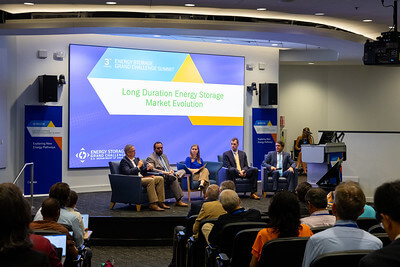
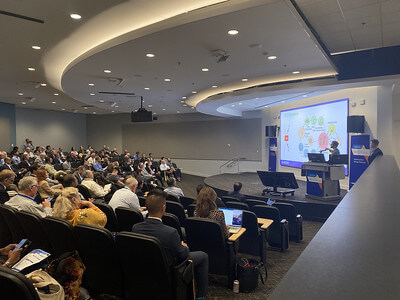
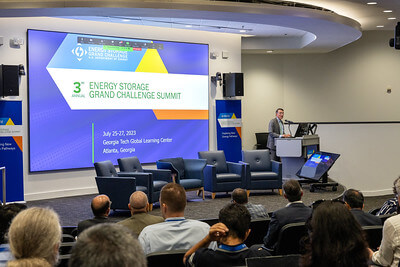
The European Energy Transition
By Nicola Filizola
As the world copes with the urgent need to address climate change and reduce greenhouse gas emissions, Europe has been leading the charge in transitioning to a cleaner and more sustainable energy future. The European energy transition is a comprehensive shift from traditional fossil fuels to renewable energy sources, such as wind, solar, hydro, and geothermal power. Among the critical components enabling this transformation, lead batteries have emerged as a key technology that plays a pivotal role in the transition's success. In this article, we will explore the energy transition in Europe and delve into the essential role that batteries are playing in shaping the continent's greener and brighter future.
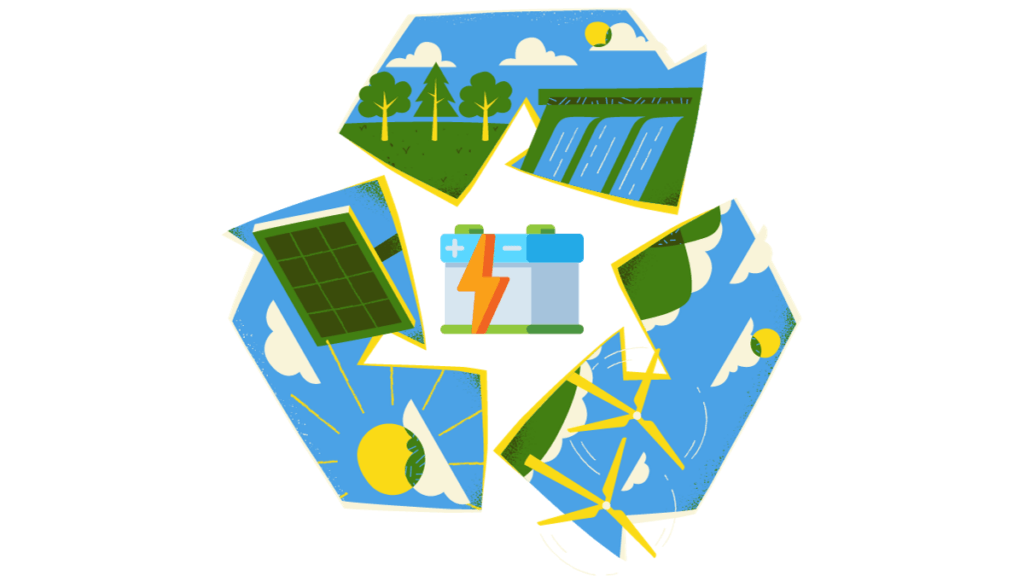
The Growth of Renewable Energy in Europe
The European Union (EU) has been at the forefront of advocating for clean energy and sustainability. Through initiatives like the European Green Deal and the Paris Agreement, EU member states are committed to reducing their carbon emissions, fostering innovation in clean technologies, and achieving climate neutrality by 2050.
One of the main challenges of integrating renewable energy sources into the existing energy infrastructure is their intermittency. Solar and wind power, for instance, depend on weather conditions and daylight availability. To ensure a stable and reliable energy supply, an efficient energy storage system is essential, and that's where batteries come into the picture.
The Challenge of Intermittency
Unlike conventional power plants that can provide a consistent energy output, solar and wind power are dependent on weather conditions and natural variations. Cloudy days and calm winds can lead to a drop in power generation, causing fluctuations in the grid. This intermittency poses challenges to grid stability, and the power supply must be balanced in real-time to meet demand. If renewable energy sources are to dominate the energy mix, an effective and efficient energy storage solution is imperative to address this variability.
Batteries: The Key to Storing Renewable Energy
Batteries are essential components of the energy transition as they serve as a bridge between renewable energy generation and consumption. These energy storage systems can store surplus electricity when generation exceeds demand and release it when demand surpasses generation. In essence, batteries help to smooth out the intermittent nature of renewables and provide a stable supply of electricity to the grid.
Batteries act as buffers, absorbing excess energy during periods of high generation and releasing it when generation dips. By doing so, they stabilize the grid and ensure a steady supply of electricity, reducing the risk of blackouts and power disturbances. Moreover, batteries can respond rapidly to fluctuations in demand, providing grid operators with a valuable tool to manage the grid effectively.
The energy transition in Europe is also characterized by a shift towards decentralization, with an increasing number of small-scale renewable energy installations, such as rooftop solar panels and community wind farms. Batteries play a vital role in this decentralized energy landscape by enabling consumers to store and manage their locally generated energy. This promotes energy autonomy, reducing the reliance on centralized power plants and enhancing energy security.
Batteries make it possible to integrate a higher share of renewables into the grid. By storing excess energy during periods of high generation, batteries ensure that the energy is not wasted and can be used during times of low generation. This feature is particularly crucial during seasonal variations when renewable output may vary significantly.
Batteries also play a significant role in electrifying transportation, another essential aspect of the energy transition. The growth of electric vehicles (EVs) is dependent on advanced battery technology, allowing for longer driving ranges and faster charging times. Widespread EV adoption not only reduces greenhouse gas emissions from the transportation sector but also opens up the possibility of using EV batteries for grid storage through vehicle-to-grid (V2G) technology.
In conclusion
The energy transition in Europe represents a monumental effort to combat climate change and create a sustainable energy future. The integration of renewable energy sources is a crucial step in this journey, but their intermittent nature presents challenges that must be addressed. Lead batteries, together with other technologies, emerge as the silent protagonists, providing a robust and reliable energy storage solution. From enhancing grid stability and enabling renewable integration to empowering decentralized energy systems and fostering electric vehicle adoption, lead batteries will play a multifaceted role in reshaping Europe's energy landscape. As technology advances and costs continue to decline, the potential of batteries will only grow, propelling Europe towards a cleaner, greener, and more resilient energy future.
The lead battery industry could be in line for a $10 billion share of the burgeoning energy storage market within the next decade.

Research into upcoming projects and opportunities indicated that the ESS landscape is forecast to be 550GWh by 2030 with a value of $30-$50 billion for all battery technologies.
The lead battery industry has set its sights on securing 100GWh of that potentially lucrative ESS market.
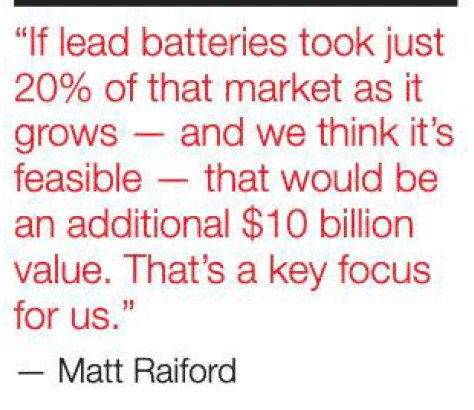
CBI launched its first technical roadmap in 2019 setting specific goals for the end of 2022.
“It was all really market-driven. We used those targets to select our program. And the result of the
projects that we funded have pretty much shown that we delivered on these goals that we set.”
There are now batteries on the market, primarily from our members in the US and Asia, that meet that criteria.
This means there are now have advanced lead batteries on the market-oriented toward ESS that have an impressive globalized cost of ownership for the system, says Raiford.
“The way we view it as battery scientists is cycle life — most key stakeholders look at it from total cost of ownership.
“So we see stationary batteries now that really perform along the lines of lithium.”
Read the full article from Batteries International

The Consortium for Battery Innovation connected with over 730 attendees from 42 different countries representing 319 different organizations in Siem Reap, Cambodia for the 20th Asian Battery Conference (20ABC) and the Recycle 100 International Secondary Lead Conference and Exhibition that featured global discussions on the world of lead, recycling, lead-acid batteries and energy storage.
CBI Senior Technical Manager, Dr. Matt Raiford said that lead batteries are made and produced in over 100 countries, and the Asian Battery Conference was a great venue to see how Asia, Africa, and other areas of the world are innovating and improving lead battery technology. For instance, CBI member companies, Hammond and Borregard, demonstrated deeper understandings of additive chemistry as a low threshold method to improve lead batteries for many different applications.
CBI participated in the line-up of over 45+ conference speakers during 20ABC to share our technical battery knowledge and insights with attendees with presentations that included:
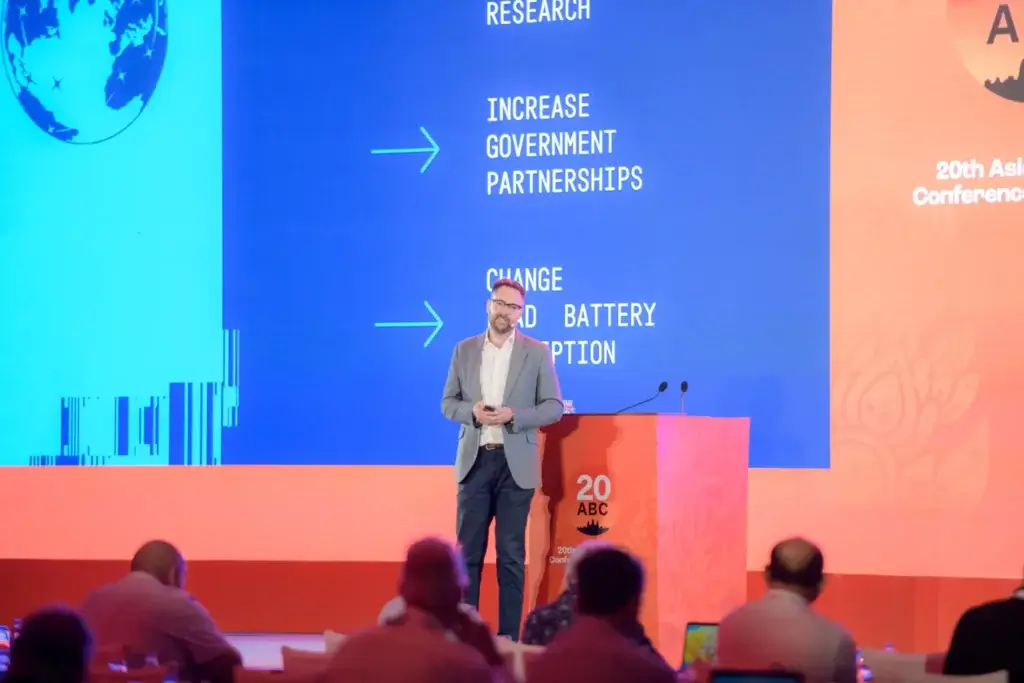
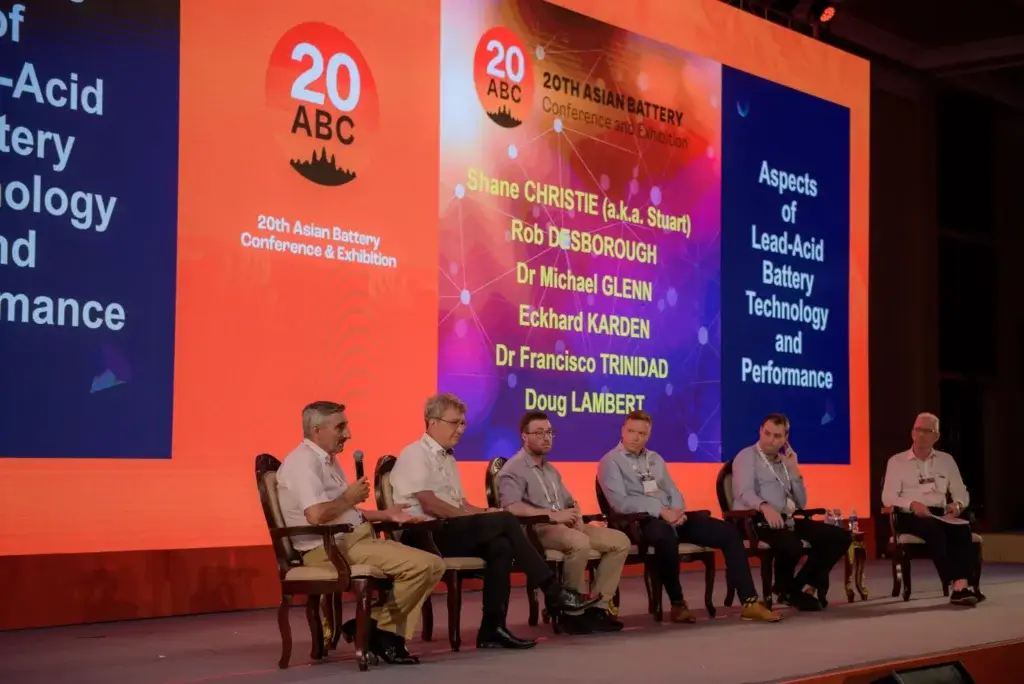
The 20th Asian Battery Conference provided a chance to join several technical sessions providing valuable insights from industry leaders, market analysts and technical experts about the lead battery industry. Several speakers including CBI member companies presented innovations and advancements, such as new active material formulations and improvements in the manufacturing process, for several applications of lead batteries.
Dr. Begüm Bozkaya, CBI’s Technical Manager, shared that there are definitely future opportunities for lead battery technology in Asia and other continents of the world via the implementation of new developments to deliver cost-efficient, safe, and sustainable battery solutions.
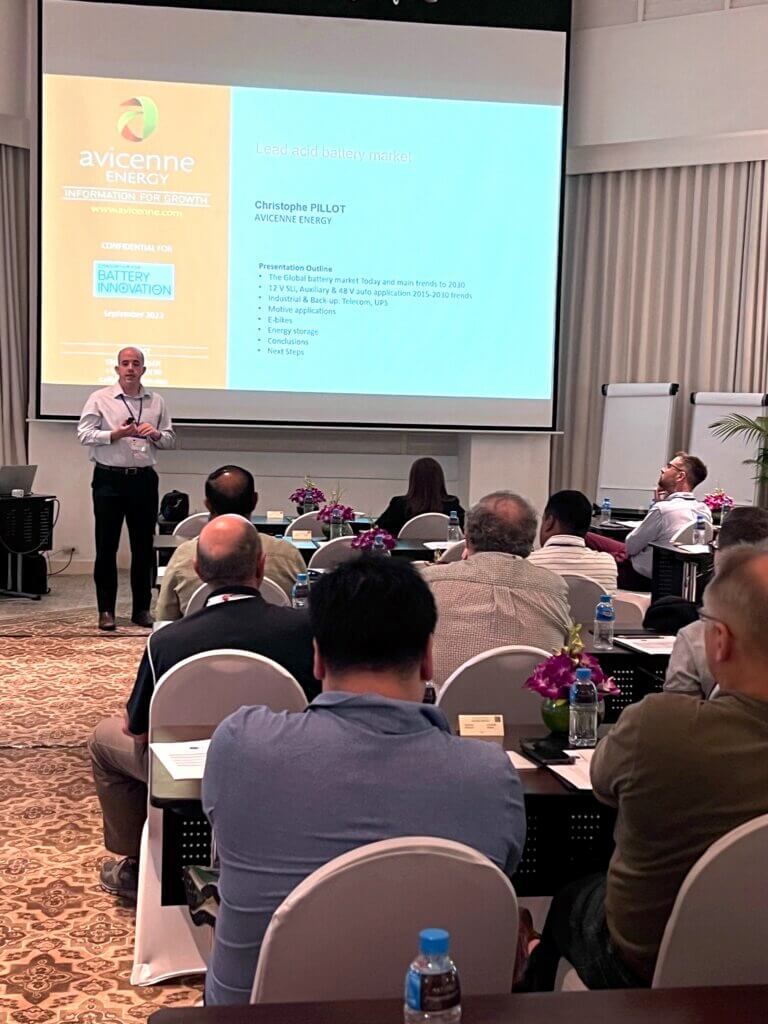
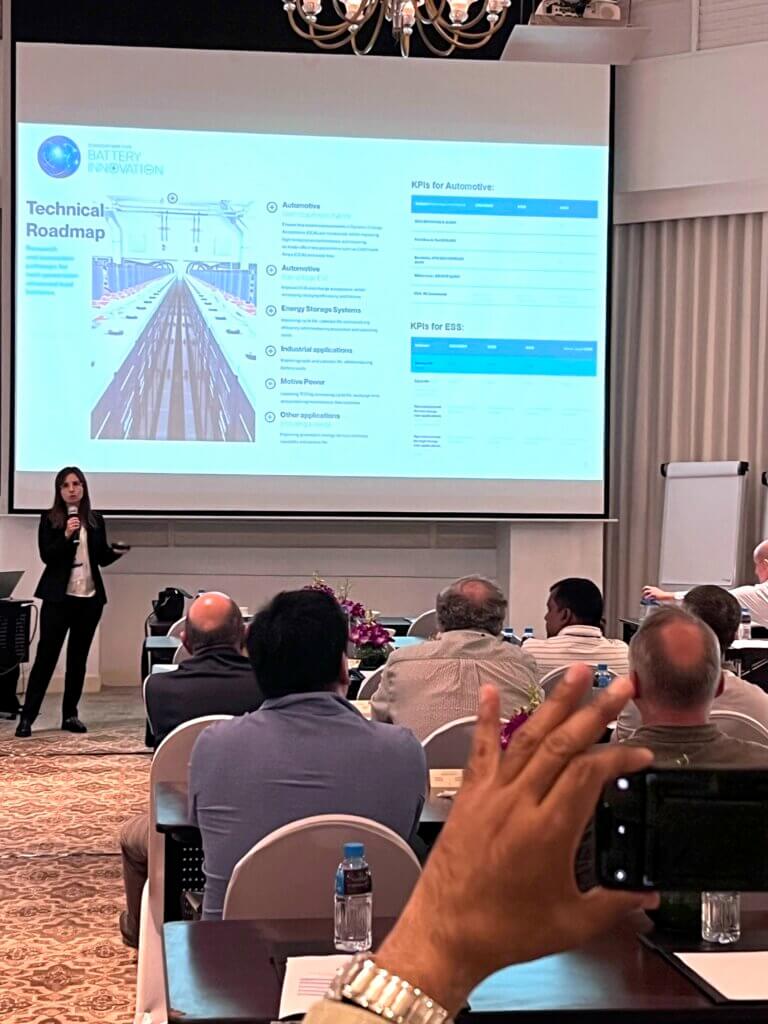
8th International Secondary Lead & Battery Recycling Conference covered several aspects of lead recycling industry in Asia and Africa. Bozkaya shared that many of the speakers addressed the current issues related to environmental challenges, financial, and social risks in the secondary lead industry. It was beneficial for attendees as some of the ILA & CBI members also illustrated their new techniques and developments in recycling of lead batteries.
Recycle 100 illustrated the ins and outs of running battery recycling centers - the heart of lead battery sustainability. Raiford was intrigued by ongoing improvements at Asian recycling operations, especially in increasing recycling efficiency - and how these improvements were presented to representatives from dozens of countries.
The city of Siem Reap, Cambodia was an amazing host and we enjoyed seeing all the beautiful areas in that region. The 20ABC was a successful event from all angles – including the achievement from the event’s charity initiative. The "ONE Minute Giveback", exceeded organizer’s and sponsor Sorfin Yoshimura’s expectations, by raising over $22,000.00 USD to help fund a bed in the Oncology Department of Angkor Hospital for Children.


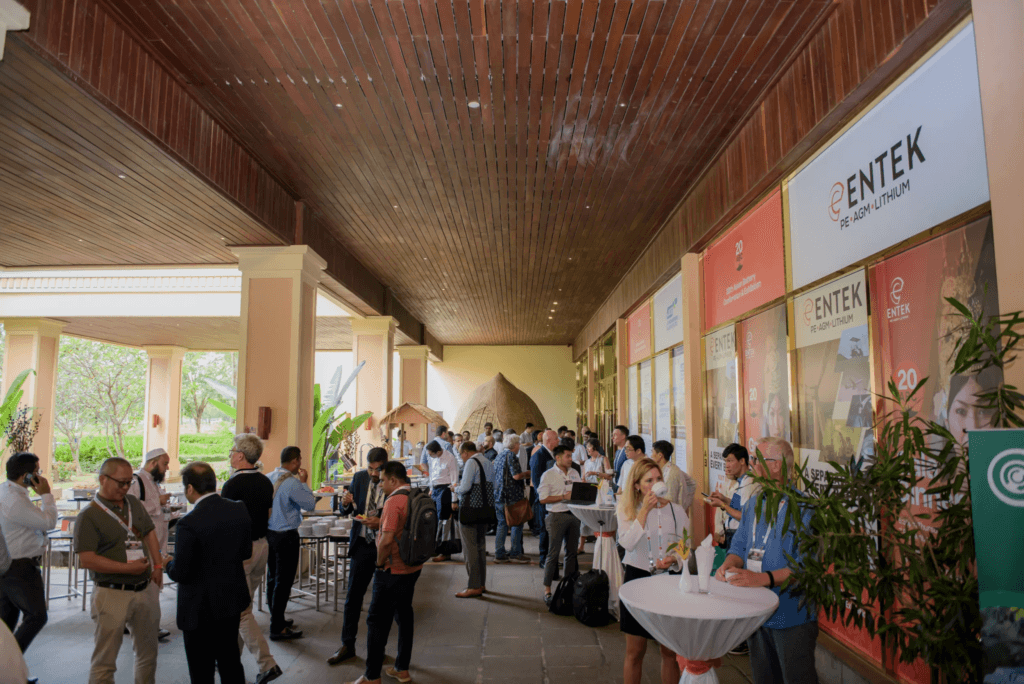
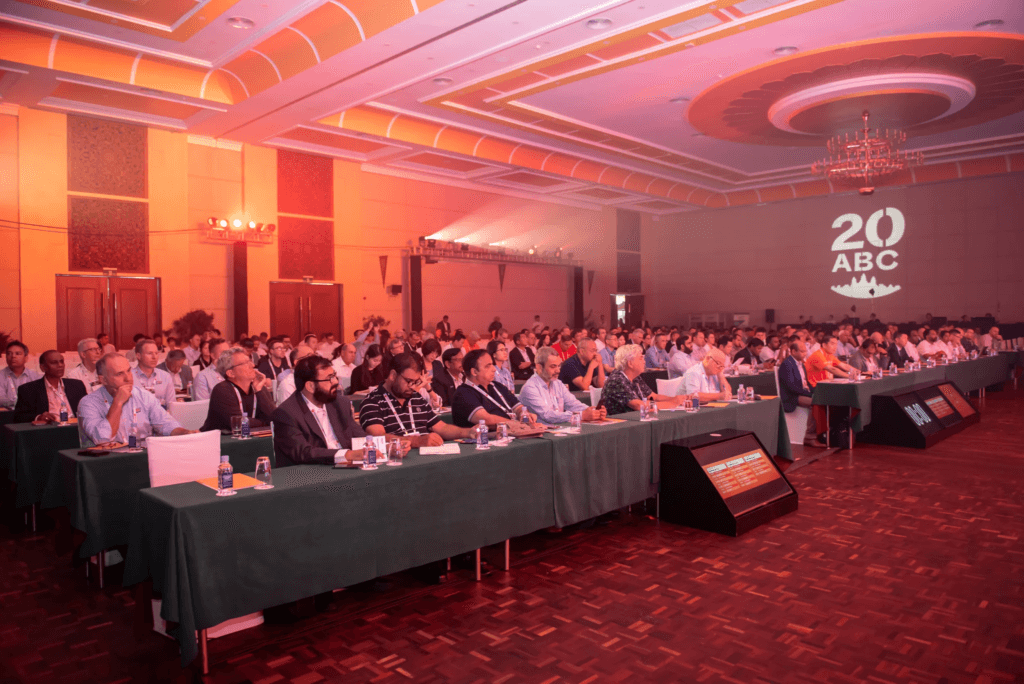
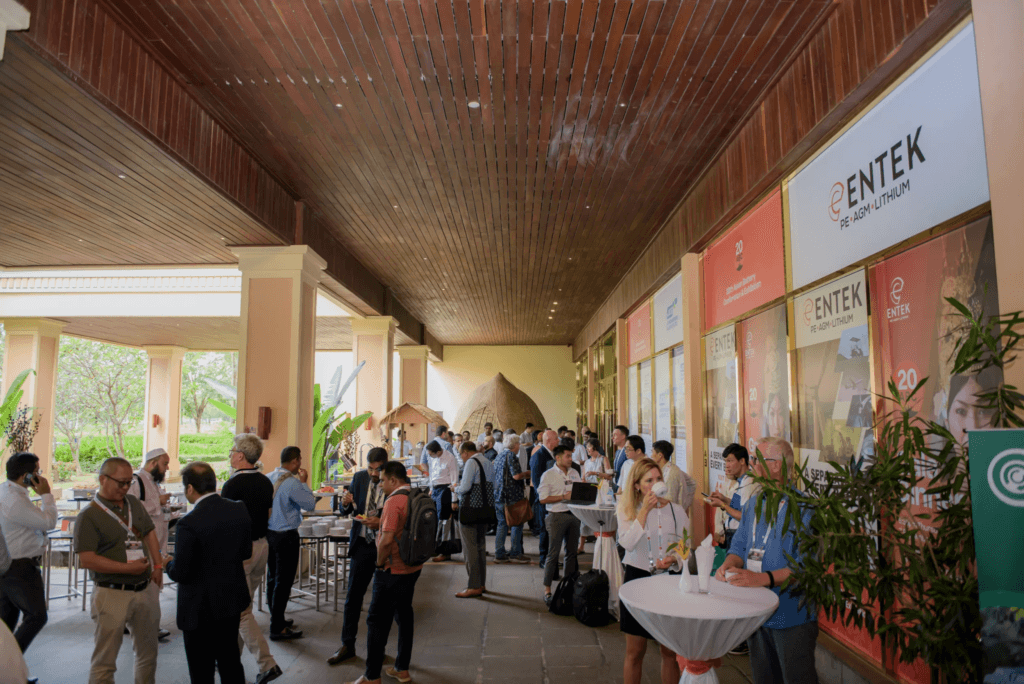
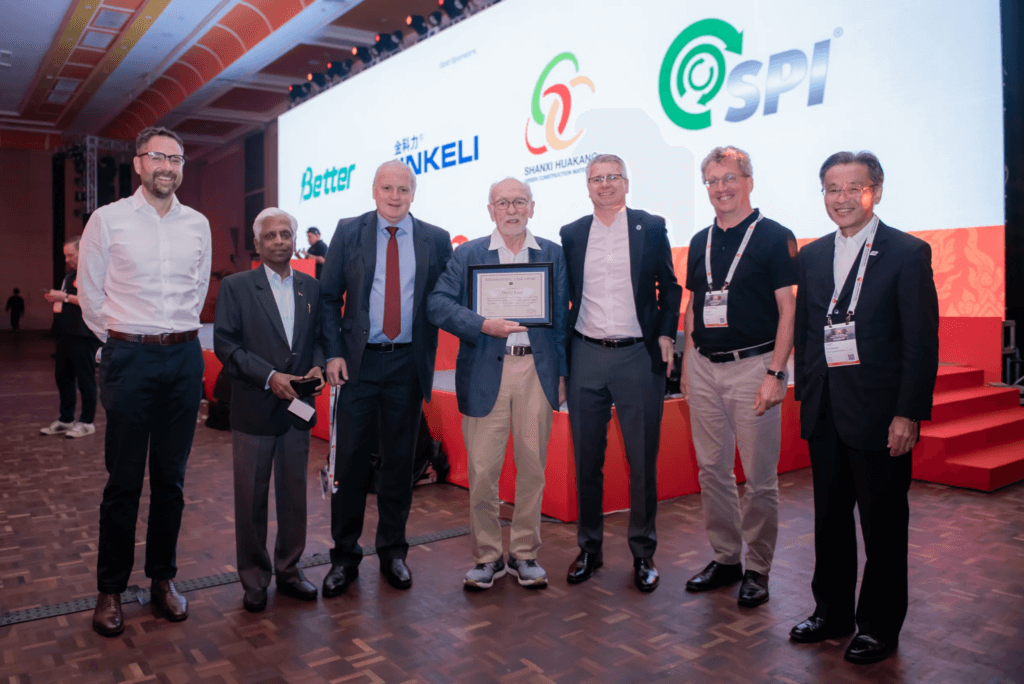
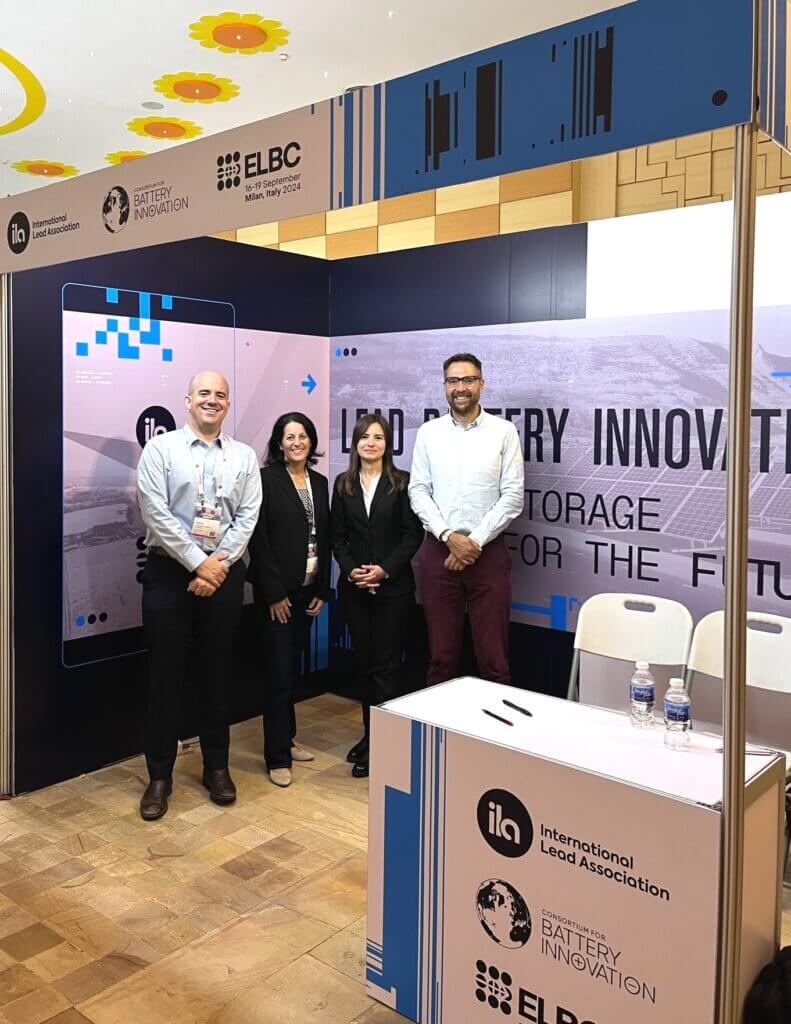
We look forward to next year’s events and continuing the technical conversations around lead batteries.
As part of the knowledge economy, individuals with a Ph.D. desire an in-depth knowledge within a specific field. To begin this journey, all Ph.D. or Doctor of Philosophy candidates must have very specific criteria to enter the doctoral program including a masters degree, letters of recommendation, and a statement of purpose that describes why they are seeking a PhD, what they have done so far to prepare themselves, and what goals they plan to achieve later.
For Begüm Bozkaya, her pursuit of a doctoral degree program was a way to explore advancements, provide more areas for career opportunity and continue to grow professionally.
Because of her appreciation in the study of electrochemistry during grad school that focused on batteries including Li-ion and carbon research, Fraunhofer Institute approached her about a position to work on advanced lead acid batteries. The opportunity was for more than just a Ph.D., as it was a complete package that involved a paid position on industrial projects. The program through Fraunhofer kept Bozkaya busy working on various carbon related industry projects, participating in networking and conferences, interacting with the lead battery industry, and of course spending time on her own studies.
“It’s important to network just as much as it is to allow time for your personal and social life,” Bozkaya said reflecting on her work-life balance. “You need to keep the bigger picture in mind. I recommend networking to help you widen your perspectives by meeting new people to collaborate with. During this time, she recommends shaping and structuring your thesis.
Bozkaya describes the path to her Ph.D. with a range of emotions and ultimately perseverance in overcoming a program that challenges you each day. She explained that there was a period toward the end of the program where her work was consuming, her ability to find focus time to write was limited, and she began to feel overwhelmed. She thought about quitting.
Instead, she found the motivation to keep going by just doing a little more each day.
“When you feel like you don’t want to continue in the program, give yourself one more push. You owe it to yourself. Then you will start to see how those little steps will move you forward. And the result will be rewarding.”
Her advice for anyone entering a doctoral program is to believe in yourself.
She warned that at some point you may start to feel overwhelmed for any number of reasons, and you might want to reconsider the research path. “That is the time to really lean into the support from your friends, family and colleagues,” encouraged Bozkaya.
That support and effort paid off and finally put her over the hump. And along with encouragement from both an old colleague and her family, Bozkaya could finally grasp her goal.
“The day of my defense was filled with emotion because of all the ups and downs it took to get this point,” said Bozkaya.
She completed her defense with an excellent score - a 1.0!
After an academic journey that started with a Bachelors in Chemistry, then a Masters of Materials Science, Begüm Bozkaya finally defended her Ph.D. thesis entitled, “Influence of Carbon Additives on the Electrochemical Performance of Modern Lead-Acid Batteries” on May 10, 2023.
Now Bozkaya continues her interest in materials science and batteries. In 2021, she was offered a role as Technical Manager for the Consortium for Battery Innovation. Bozkaya works with colleagues to secure EU funding projects and is responsible for CBI’s technical program in Europe – including workshops and conferences. Catch one of her presentations at an upcoming CBI conference and be sure to congratulate her on the new doctorate.
The Department of Energy (DOE) held its Energy Storage Grand Challenge Summit (ESGC) online and in Atlanta, GA on July 25-27, 2023.

Dr. Alyssa McQuilling, CBI’s U.S. Research and Innovation Manager, shared her thoughts and key takeaways from the event.
McQuilling noted that this is an unprecedented time for the development of energy storage with historic investments being made by the federal government to aid in commercialization.
As the DOE and other agencies are taking an “all of the above" approach to meeting the demands of a modern grid; there’s room for all the technologies to meet customers’ needs for a reliable grid (while also maintaining affordability).
At CBI, we encourage participation from all technologies to meet the growing global energy storage demand. CBI organized a response from the U.S. industry, and DOE ESGC efforts used the feedback from CBI members in a DOE Lead Battery Lift-off Report.
In this report, an in-depth analysis of lead battery innovation pathways was conducted, resulting in portfolios of lead battery improvements capable of helping the DOE reach the 0.05$/kWh/energy throughput goal outlined in the ESGC. These improvements include advanced manufacturing, improving cycle life, advanced control algorithms, standardization of devices and protocols, and demonstration projects to understand the impact of scaling on cost.
At the same time, we recognize how well-suited lead batteries are because they are a cost-effective, safe, and reliable solution. DOE recognizes lead batteries for this value as part of the energy storage solution as they currently represent much of the market.
Another takeaway is the ongoing emphasis on U.S. manufacturing, jobs, and ensuring that historically underserved communities also benefit through adopting energy storage technologies.
As a result, it will become increasingly important to make new connections that can accelerate growth in the industry because (again) the speed at which things are developing is unprecedented. These connections are critical and include collaboration and working across industries.
In the last session of the summit, the discussion focused on ROVI, or Rapid Operational Validation Initiative, (part of a collaborative effort from 6 national labs) to figure out how to model system performance/degradation/failure for different battery technologies by combining approximately one year of system data with machine learning/AI modeling approaches to figure out how the system will perform over a 15 to 20 year lifetime.
CBI is answering the many DOE opportunities by utilizing the breadth and expertise of our membership and bringing in key institutions and systems providers. These collaborative teams are poised to deliver a high-performing, sustainable, domestic solution to meet the many goals of the ESGC.
Below are two Energy Storage Innovation reports that were recently released:
The CBI 2023 Techincal and ALBA Workshops were held on June 13-15, in Wolfsburg, Germany.
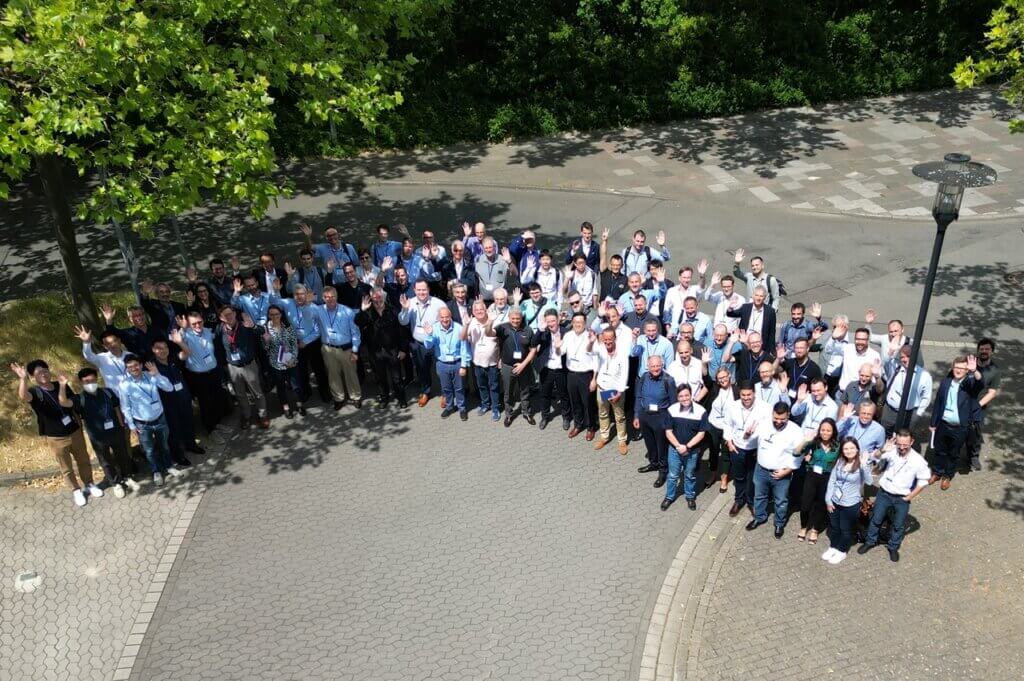
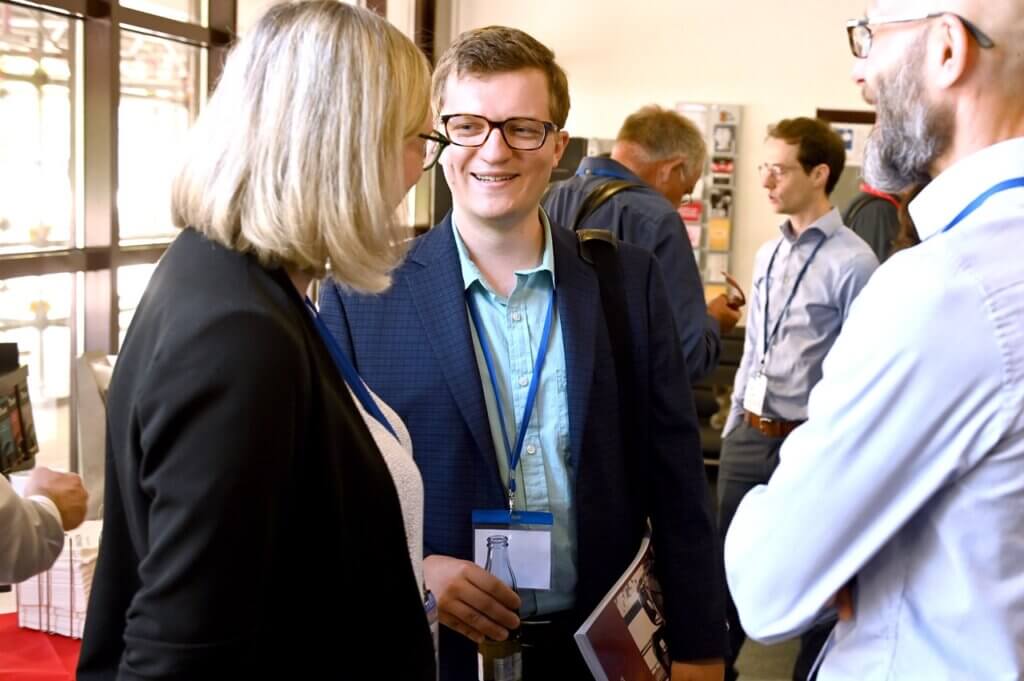
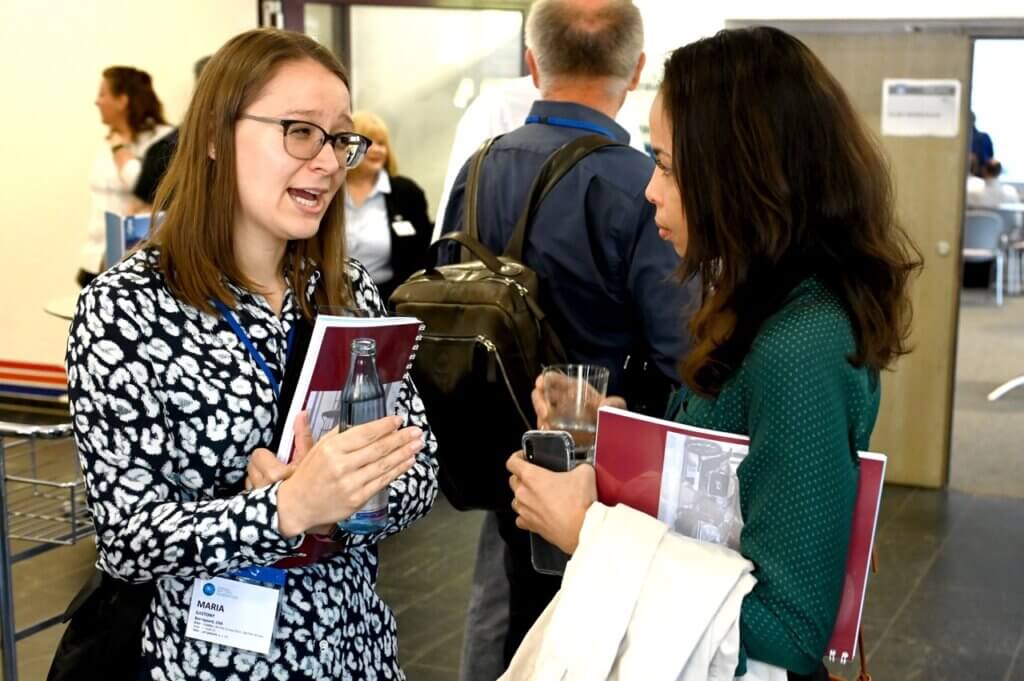
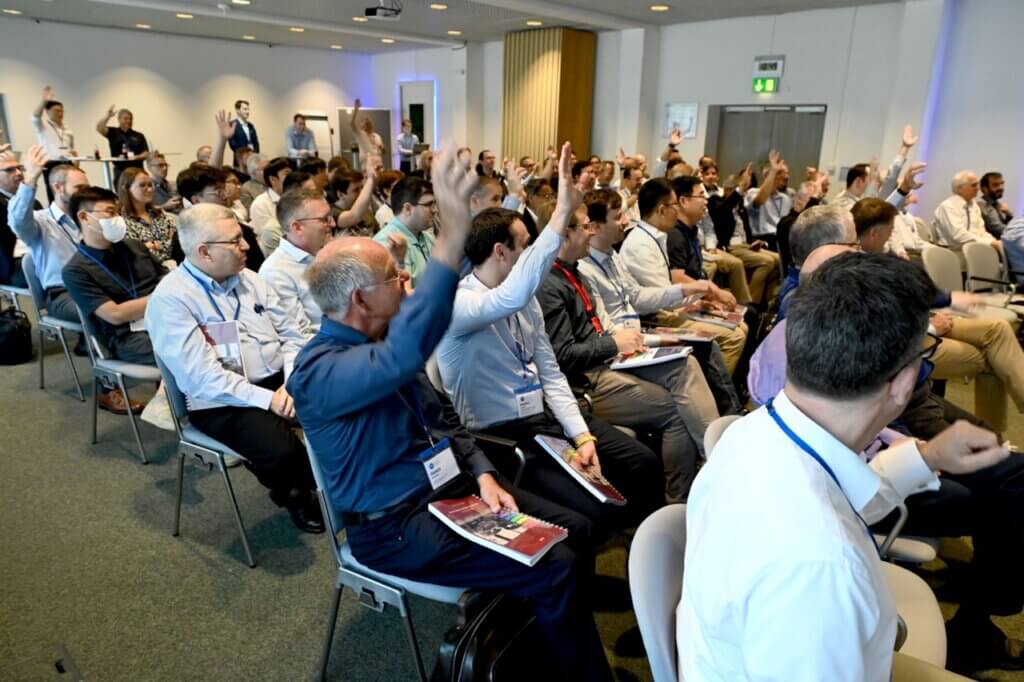
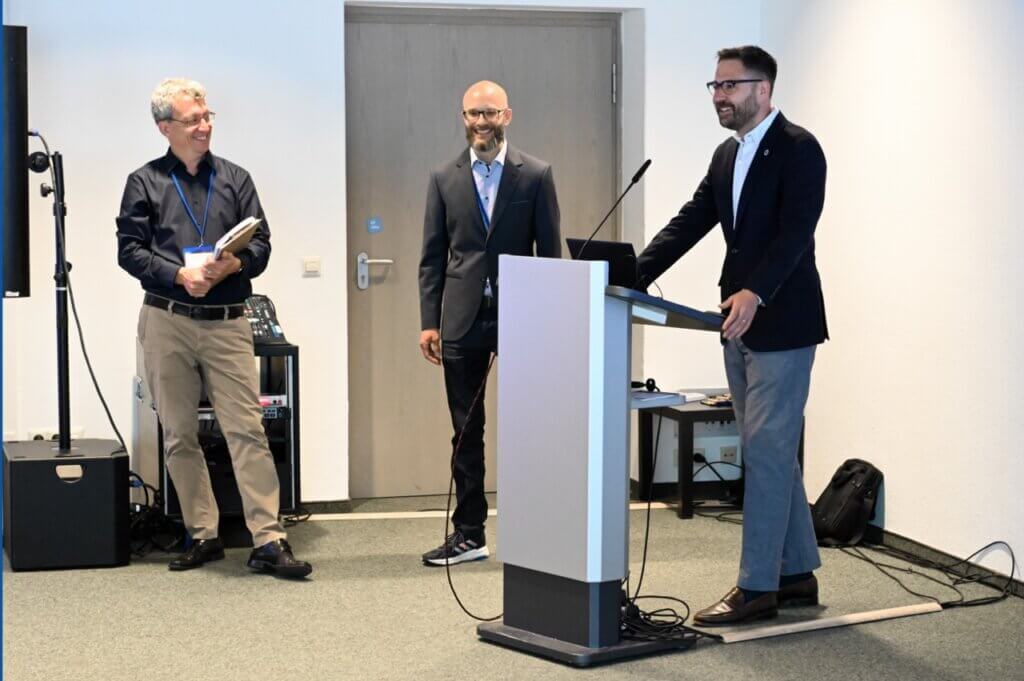
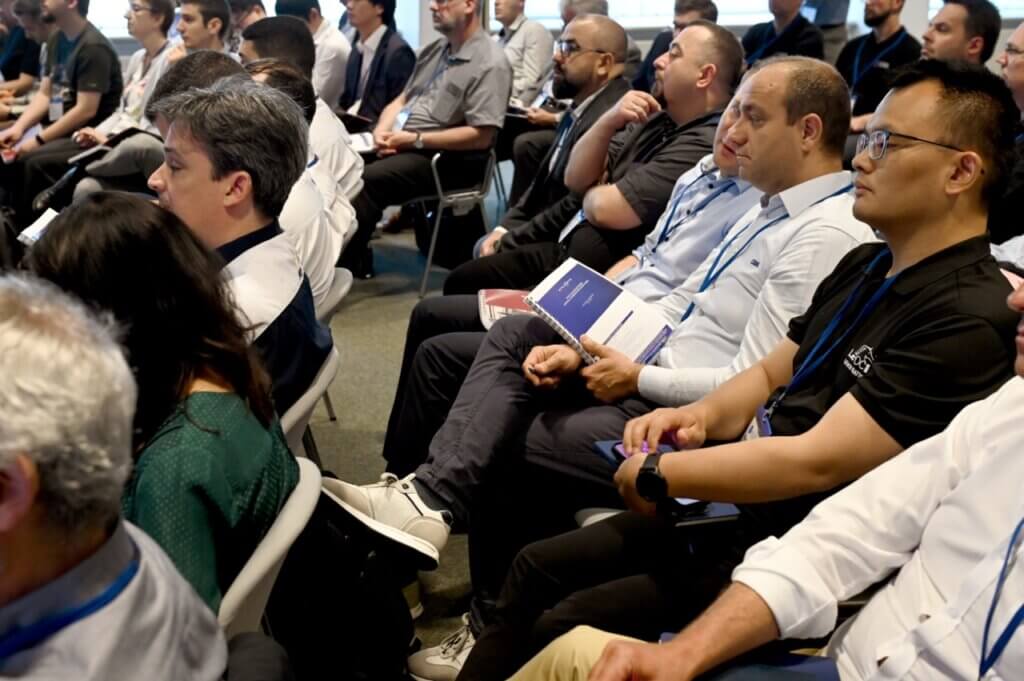
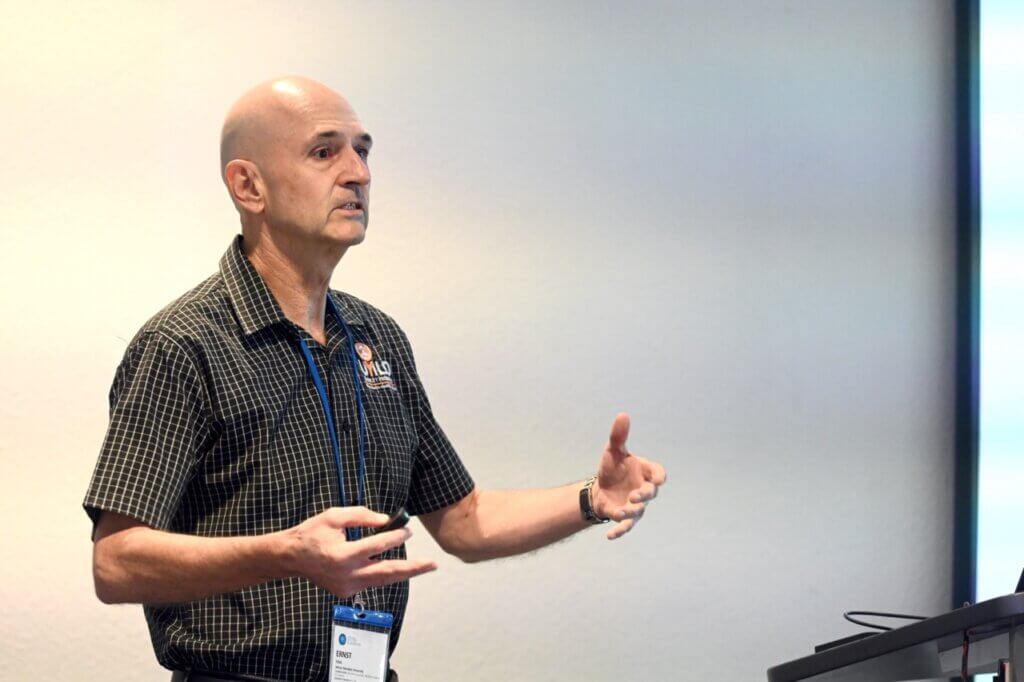
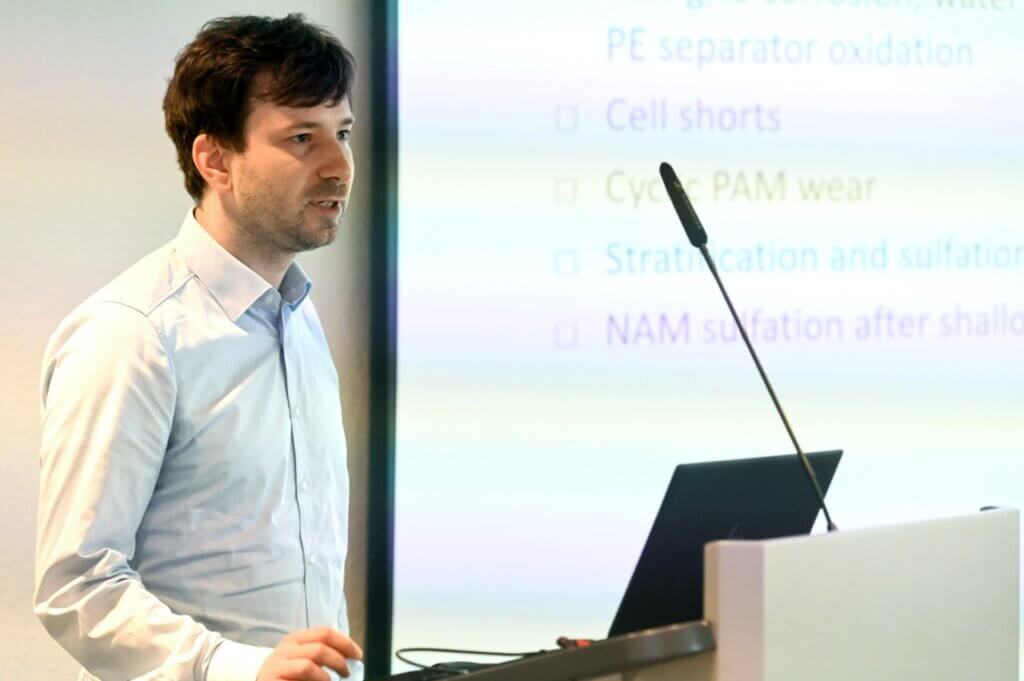
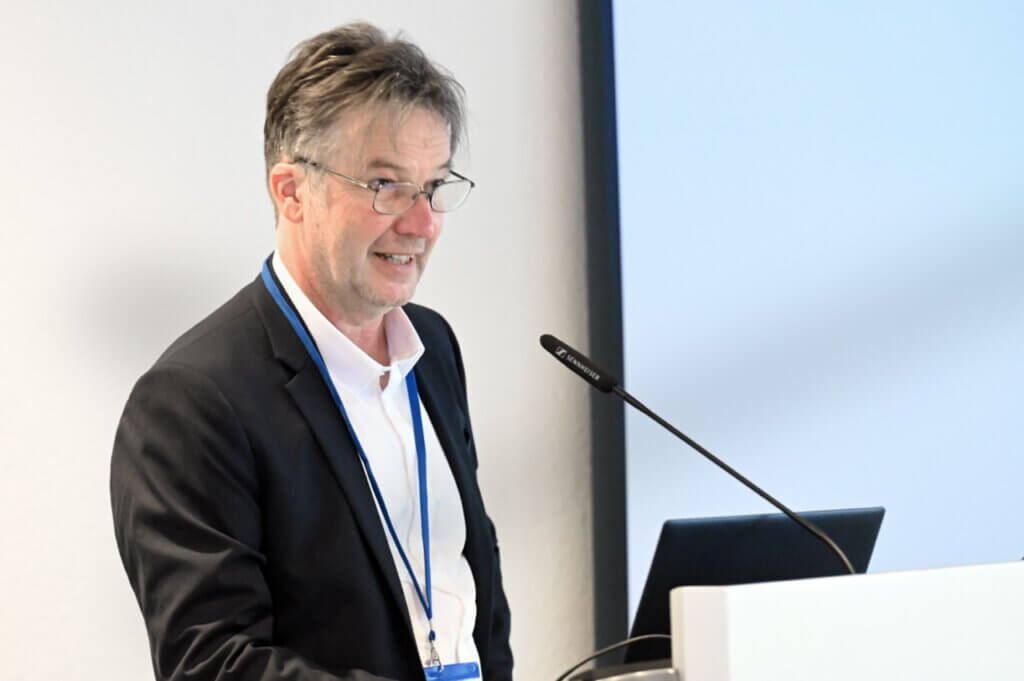
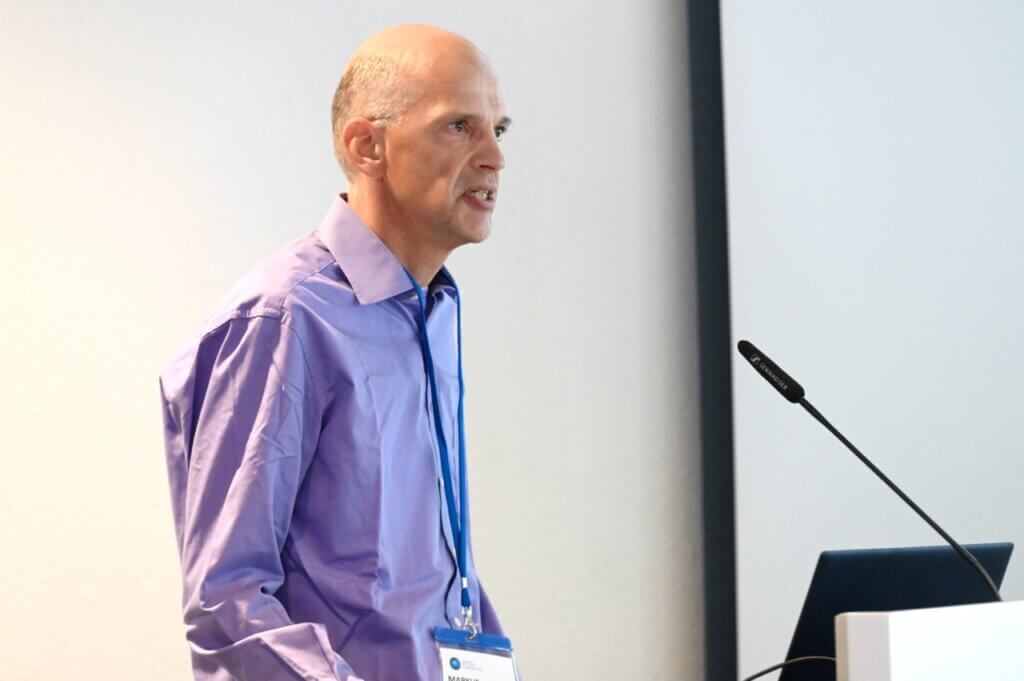
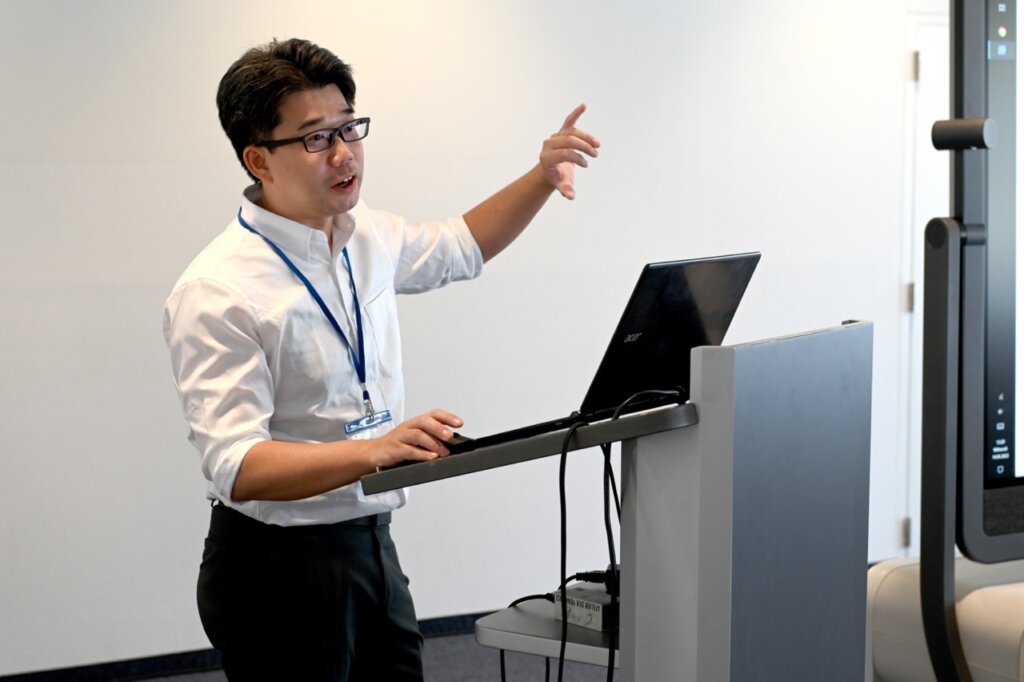
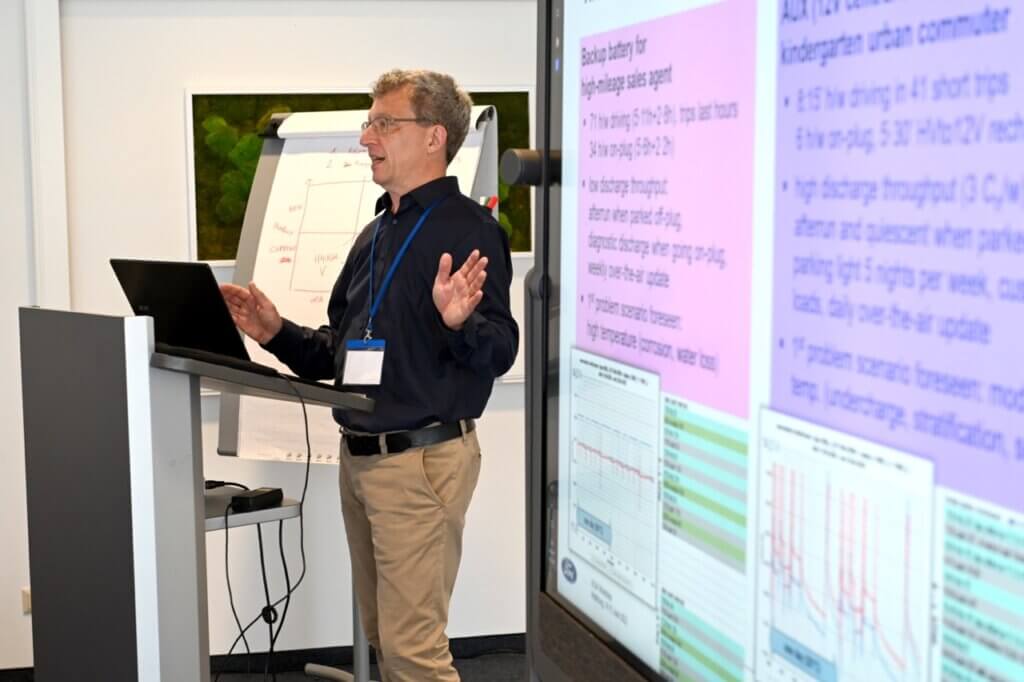
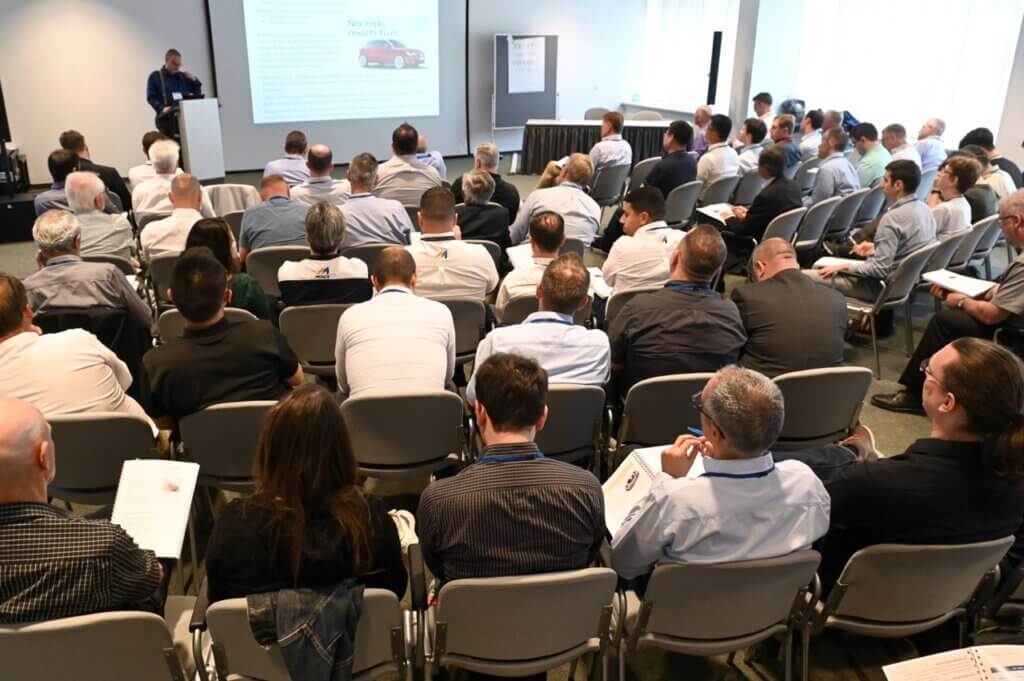
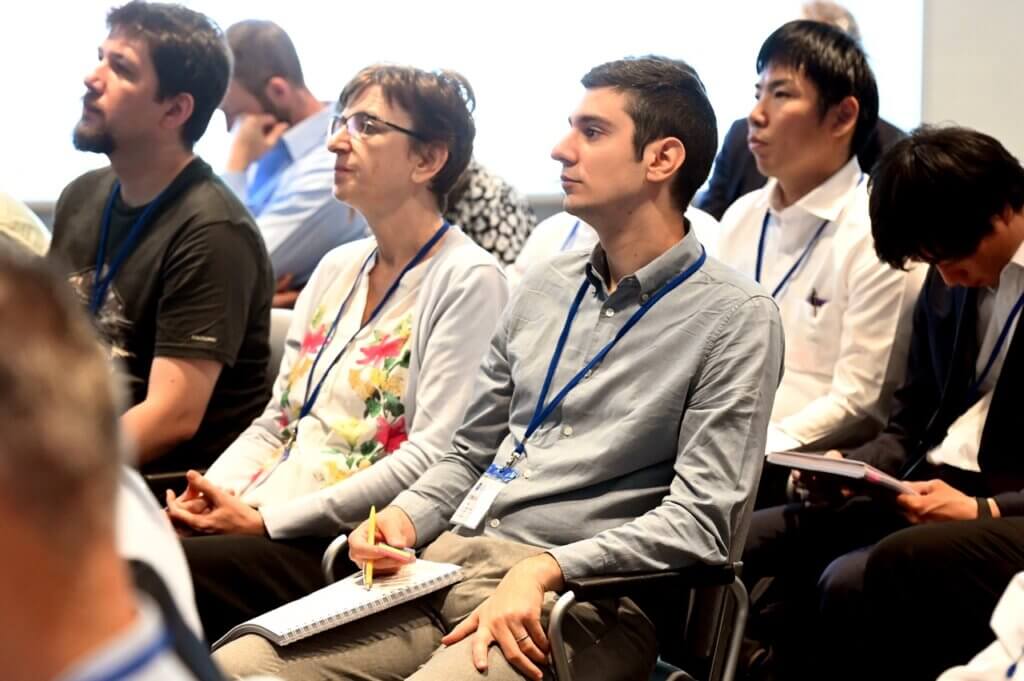
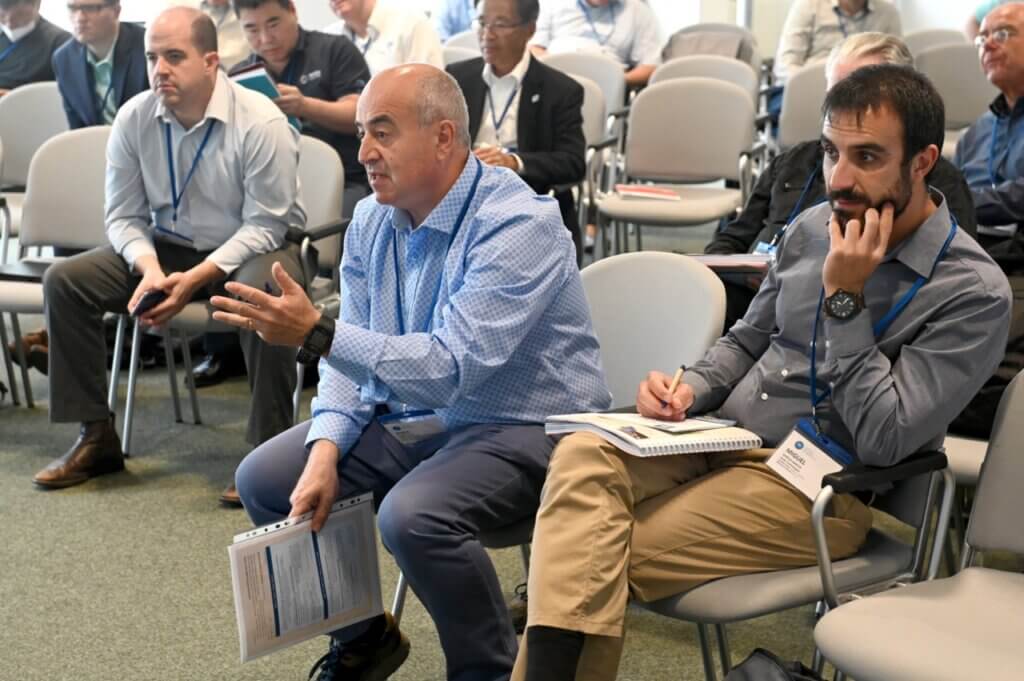
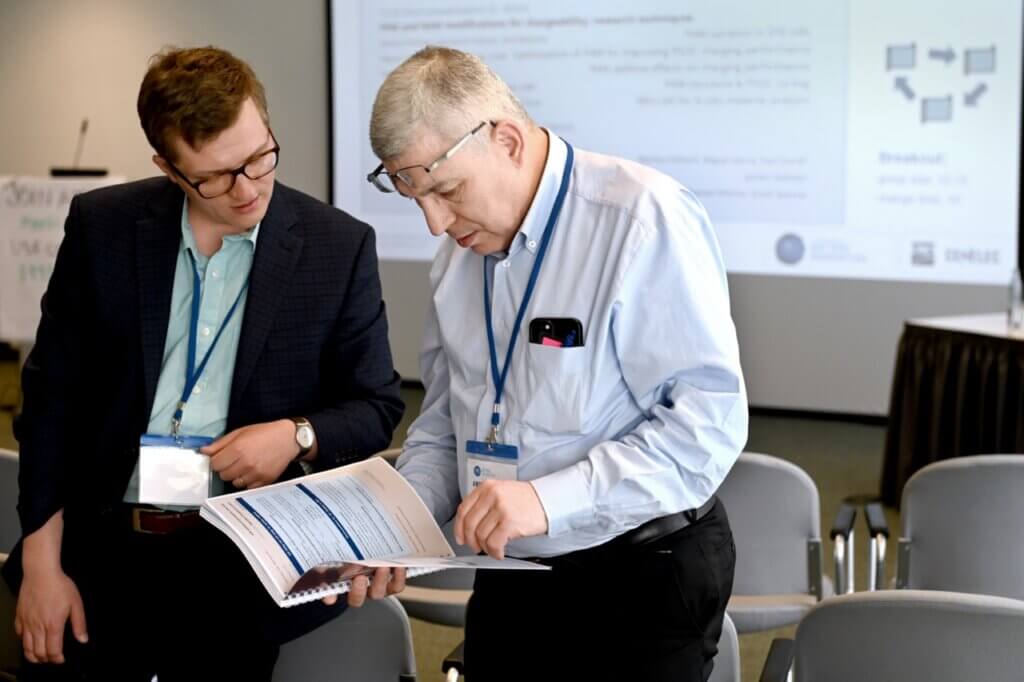
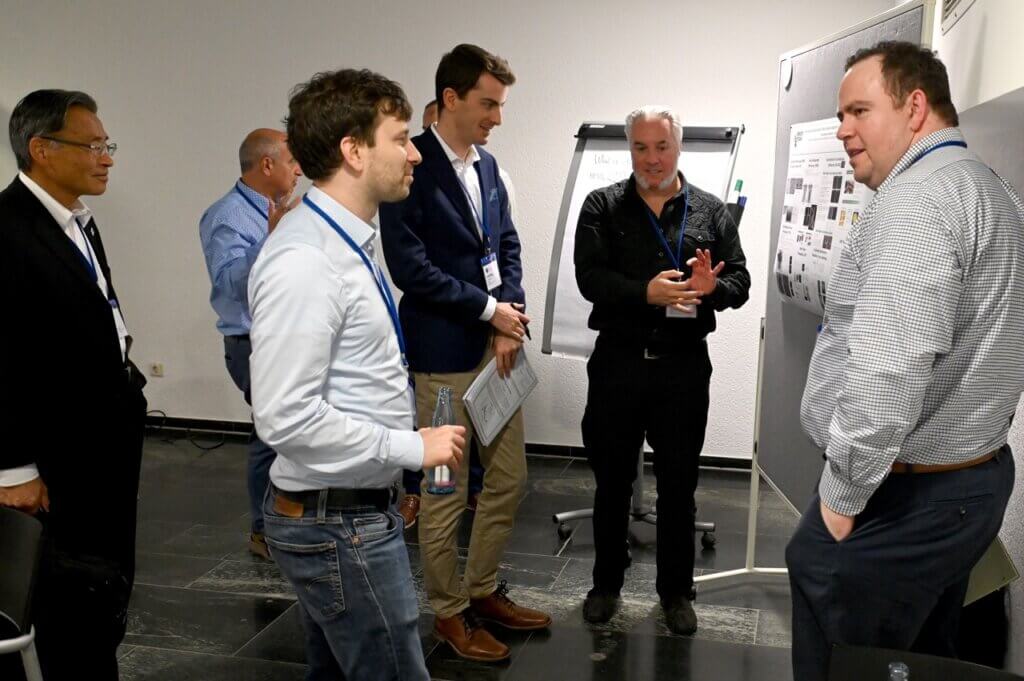
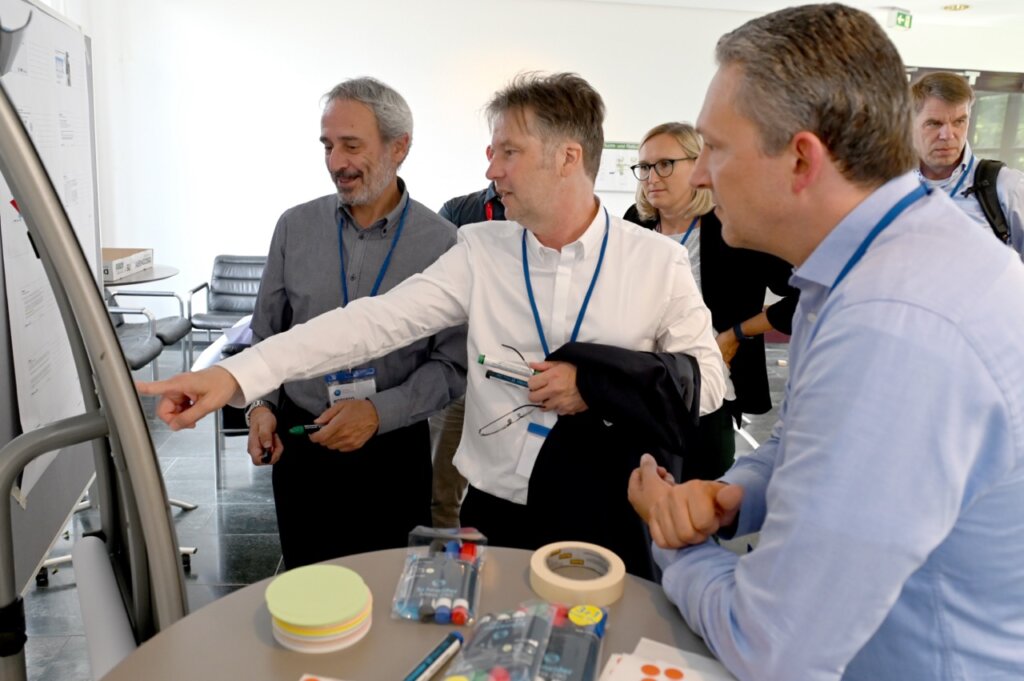
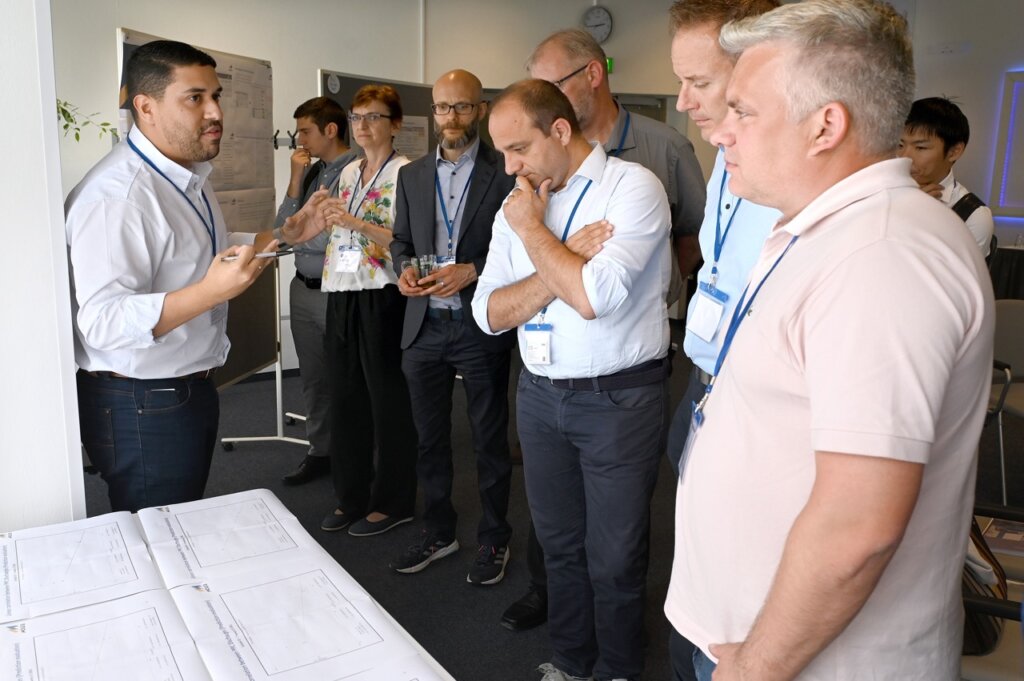
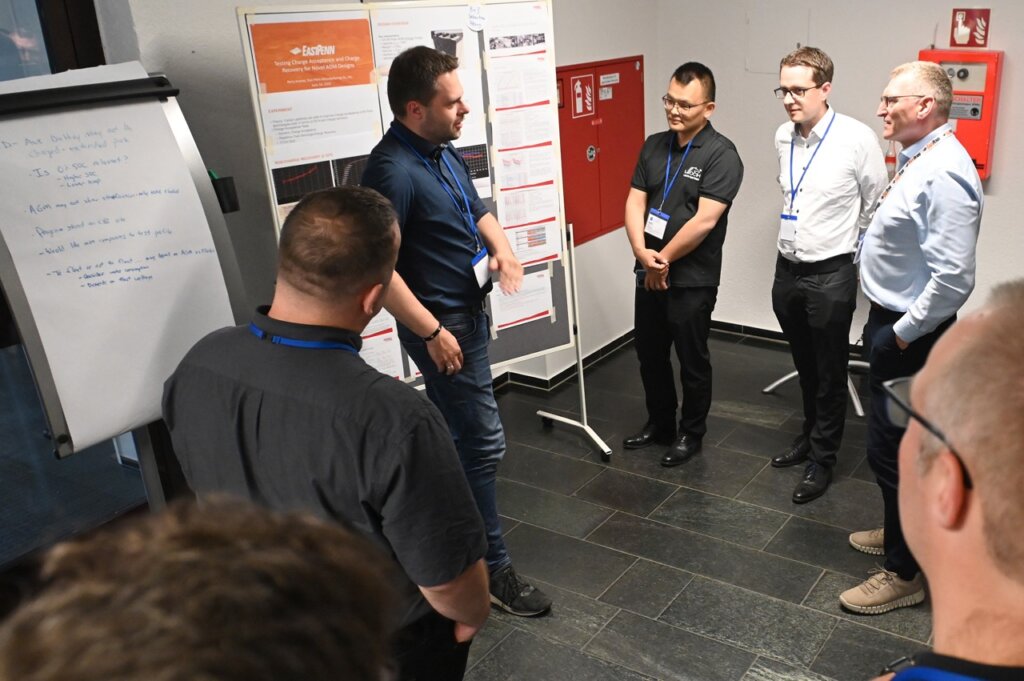
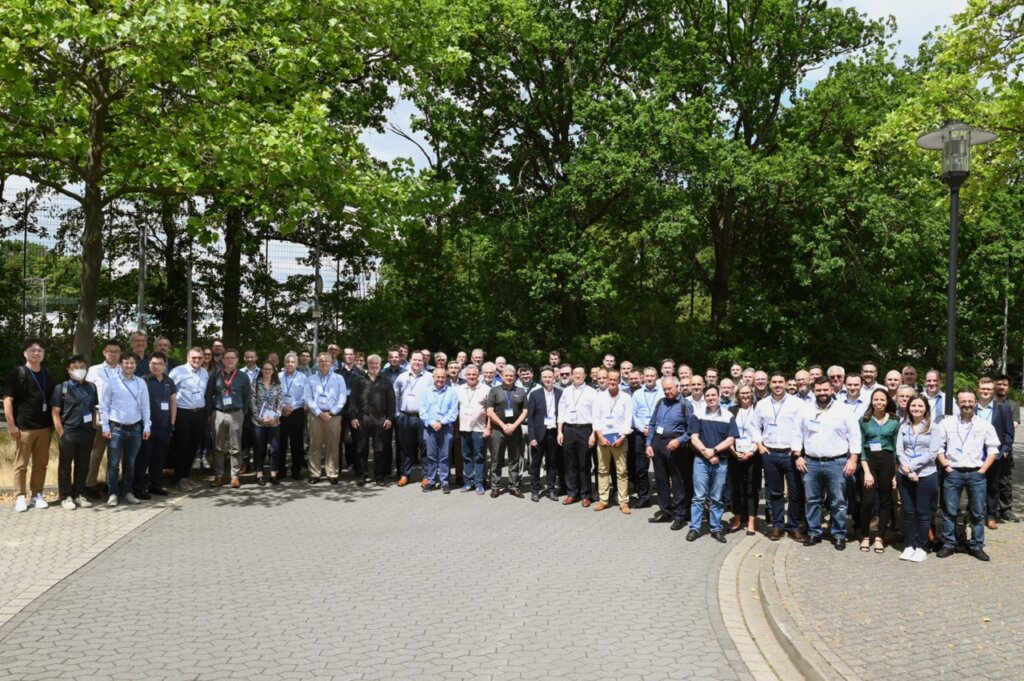
A solar and lead battery-powered tractor, that is being developed as a farming solution for Africa, was named a semifinalist for the Milken–Motsepe Prize in Green Energy. The competition rewards projects who expand access to reliable, affordable, and sustainable electricity in Africa.
AfTrak or Africa Tractor, is a prototype program funded by Innovate UK as part of its Energy Catalyst Round 9. The program was one of 20 teams selected to advance to the Semifinalist Round for a competition by the Milken Institute and the Motsepe Foundation. Semifinalists receive $20,000 for the continued development and testing of their designs, as well as complimentary access to a Stanford Online course to help build their businesses.
AfTrak was selected from over 160 entrants around the world, in over 36 countries.
This potentially revolutionary tractor design, featuring lead batteries, is an African farming project created in collaboration between the Consortium for Battery Innovation (CBI), UK- & Malawi-based charity Tiyeni, and Loughborough University.
“We are delighted to be selected as a semifinalist in this prestigious competition—a reflection of the inspiration and technical capabilities of the Loughborough and Tiyeni teams. It’s also a great indicator of CBI’s ambitions.” said Carl Telford, Senior R&I Manager at CBI.
Across large areas of Malawi, under the few inches of topsoil, there is a heavily compacted layer of rock-hard earth through which plants cannot penetrate. Tiyeni has created an innovative agricultural method called Deep Bed Farming (DBF). The tractor, being developed at Loughborough University, will be a low-cost, hand-operated, solution for farming in the difficult soil.

The proposed AfTrak project is a micro electric tractor capable of mechanizing land preparation in line with Tiyeni’s Deep Bed Farming to prepare soil to a depth of 400mm.
For this program, AfTrak aims to provide an affordable green energy solution in sub-Saharan Africa, utilize a solar array and lead battery system to power micro electric tractors for Deep Bed Farming, and create a self-sustaining model for decentralized energy access.
An independent panel of expert judges determined the 20 teams receiving funding. Moving forward in the competition involves semifinalist teams demonstrating the effectiveness of their ideas in field tests.
They will be evaluated for their ability to:
After the Semifinalist Round, judges will select five finalist teams to conduct another round of field tests in Africa. Then in May 2024, the judges will award a $1 million Grand Prize. A Runner-Up Prize of $250,000 will also be awarded.
The Milken Institute is a nonprofit, nonpartisan think tank focused on accelerating measurable progress. They bring together the best ideas and innovative resourcing to develop blueprints for tackling critical global issues.
The Milken–Motsepe Innovation Prize program is a series of multiyear, multimillion-dollar innovation competitions for technological solutions that accelerate progress toward the UN Sustainable Development Goals (SDGs).
One of the two innovation competitions in the program, the Milken–Motsepe Prize in Green Energy, aims to expand access to reliable, affordable, and sustainable electricity in Africa as an essential factor in achieving long-term economic growth and shared prosperity. The competition advances progress toward SDG 7 (ensuring access to affordable, reliable, sustainable, and modern energy for all).
The semi-finalists were announced on June 6, 2023.
More information:
NOTE: AfTrak is the second bid application to be awarded to CBI in the past year after LoCEL-H2, a sustainable microgrid project using lead batteries and a novel, lead-battery-enabled funded by the European Commission under the Horizon Europe program.
CBI is working jointly with Electric Applications Incorporated and C&D Technologies and Trojan Battery Company on a project to demonstrate the improved fast charging capability and increased total energy throughput of newly developed batteries.
“We’re looking to charge batteries faster for use in motive power applications and how it impacts AGM battery life,” said Shawn Peng, Senior Director of Energy Storage Research for C&D Technologies and Trojan Battery Company.
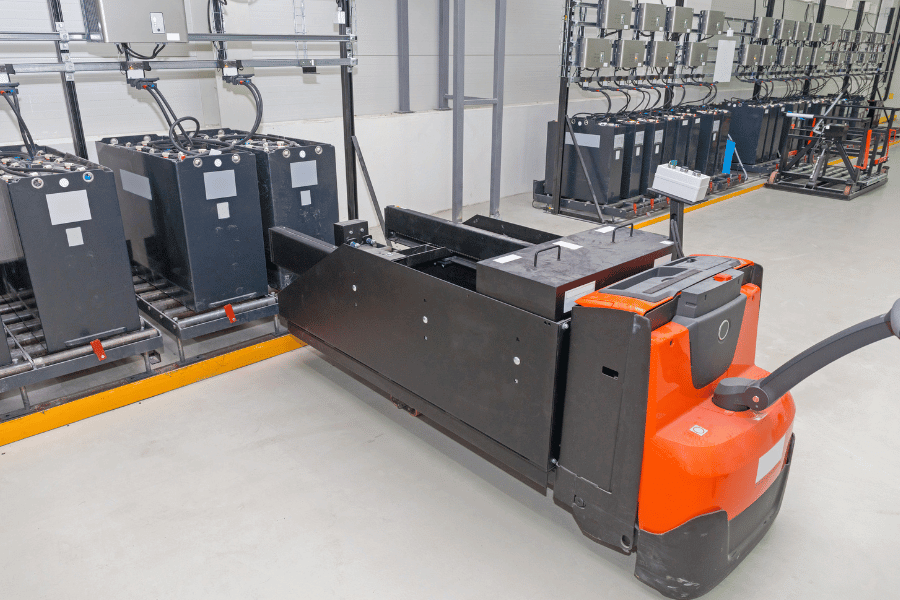
Peng explained that they are trying to determine the best approach and set of procedures for fast charge of a forklift – whether for a one-hour lunch break or overnight. This will help several companies more effectively utilize their motive and mobile fleets.
“We want to prove the best strategy for opportunity charging at 24/7 facilities, starting with a study on two different designs for a 2V battery to collect data and measure the KPIs.”
Specifically, the R&D department at C&D Technologies led by Peng, is initiating a 2V cell study to investigate and determine the proper charging current and voltage for a fast-charging protocol. The protocol will optimize the charging efficiency and reduce charging time through the life of batteries.
Then a third-party testing lab, Electric Applications Incorporated, will perform electrical testing of 8V batteries 48V packs using the optimized protocol. The 48V pack testing will be representative of what is used in motive power applications, like forklift traction batteries.
Peng added, “We want to see how far we can go with the technology to benefit the life and cost of lead acid batteries.”

CBI spoke to Marcus Young, an Associate Professor and Associate Department Chair for the Undergraduate Program at the University of North Texas (UNT) about a two-year project that kicked off in February 2023 to look at materials in low voltage (12V) batteries for electric vehicles in an effort to further improve performance of lead batteries.
Lead batteries are still used in virtually every car on the road-from combustion engine vehicles through to Electric vehicles. Working alongside UNT, East Penn Manufacturing Company, and ECOBAT, CBI will further study the 12V battery electrochemical processes for materials and duty cycles common for lead batteries used in electric vehicles. By understanding more of how these batteries function in different charge conditions, temperature, and climate, we can determine what changes will attain a longer life span and better performance.

Electric vehicles rely on lead batteries to provide safety functionality in the case of failure of the main propulsion battery. This application is referred to as low voltage or auxiliary battery functionality. The lead batteries used in low-voltage EV applications use advanced alloys with different metallic additives to achieve current levels of performance. The study will focus on two specific additives, Ba (barium) and Bi (bismuth), and how their grain structure and influences on corrosion rates and crystallization would affect grid performance in the conditions found in EVs Previous research has shown that grids with Ba additives have reduced oxide formation, while Bi facilitates faster recrystallization.
Using XRM – or X-ray microscopy, this project will investigate corrosion in batteries and look at the impact of Ba or Bi additives on battery life. The technique requires relatively thin samples to be used. Extremely thin pieces have been created and used on the nano scale, so that they can be x-rayed. As the x-ray penetrates through these panels, researchers will isolate areas of interest and study the impact of aging time to see a source(s) of potential problems.
Beyond lab-scale techniques, synchrotron experiments at the APS at Argonne National Laboratory will be used on large samples linking lab findings to real world lead battery products used in auxiliary applications.
“We’re making battery life better for everyone,” said Young. He explained that ultimately this research will impact daily users as the battery storage community creates faster, better, and more efficient sources.
Innovate UK Funding Malawi Trial of Low-Cost Tractor Featuring Lead Batteries and Solar Power for Deep Bed Farming
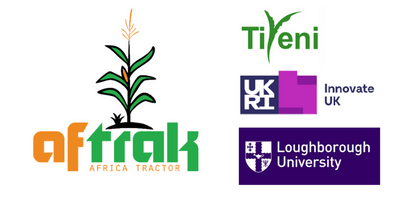
[LONDON, 20 April, 2023] AfTrak or Africa Tractor that will use solar and lead batteries, is both a prototype program and £270k project funded by Innovate UK as part of its Energy Catalyst Round 9 program, which officially kicked off in London today.
Innovate UK will fund a prototype and a sustainable business plan for a potentially revolutionary tractor design, featuring lead batteries. The UK program, which invests in innovative business ideas across all sectors, will support an African farming project created in collaboration between the Consortium for Battery Innovation (CBI), UK- & Malawi-based charity Tiyeni, and Loughborough University.
“The kick-off event exceeded expectations. We found it extremely valuable to network, not only with the Energy Catalyst team, but also with other innovators and stakeholders,” said AfTrak’s Project Manager, Dr. Carl Telford, a CBI’s senior research and innovation manager.
Across large areas of Malawi, under the few inches of topsoil, there is a heavily compacted layer of rock-hard earth through which plants cannot penetrate. Tiyeni has created an innovative agricultural method called Deep Bed Farming (DBF) through their extensive business experience and a network of agricultural advisers. The tractor, being developed at Loughborough University, will be a low-cost, hand-operated, solution for farming in this difficult soil.
Dr. Jonathan Wilson, a specialist in systems and mechanical engineering and leader of the Loughborough team notes, “We have a unique opportunity to take Tiyeni’s unique Deep Bed Farming technique and add Loughborough’s engineering & mechanization know-how to dramatically decrease upfront labor requirements.”
The proposed AfTrak system is a micro electric tractor capable of mechanizing land preparation in line with Tiyeni’s Deep Bed Farming to prepare the soil to a depth of 400mm.
Over 800 million people have no reliable access to electricity, primarily in sub-Saharan Africa, and rural regions of Asia. AfTrak also provides power for agricultural applications such as water irrigation and domestic applications such as phone charging, electric cooking, and lighting.
The AfTrak tractor will be trialed in Malawi by the Tiyeni team, with a focus on enabling an important agricultural technique, Deep Bed Farming.
Tiyeni’s Country Director, Isaac Chavula comments, “This is a breakthrough. Finally, I can see a solution through the AfTrak tractors to break the hardpan soil that has long challenged farmers. By adopting the Deep Bed Farming technique, farmers can now envision relief with the AfTrak tractors.”
In this initiative, AfTrak aims to:
Tiyeni Executive Director Alex Gerard added, “I am so excited that Innovate UK has funded our project to accelerate the end of food insecurity in Malawi. Combining our innovative Deep Bed Farming method with a sustainable solar tractor, we could speed up the support for millions of small-holder farmers.”
Telford added, “This is a perfect application and new opportunity area for utilizing lead batteries. Moreover, the anticipated outcomes are valuable. It’s an exciting time for renewable energy and lead battery storage, as this mechanization of the Deep Bed Farming technique could be a game changer.”
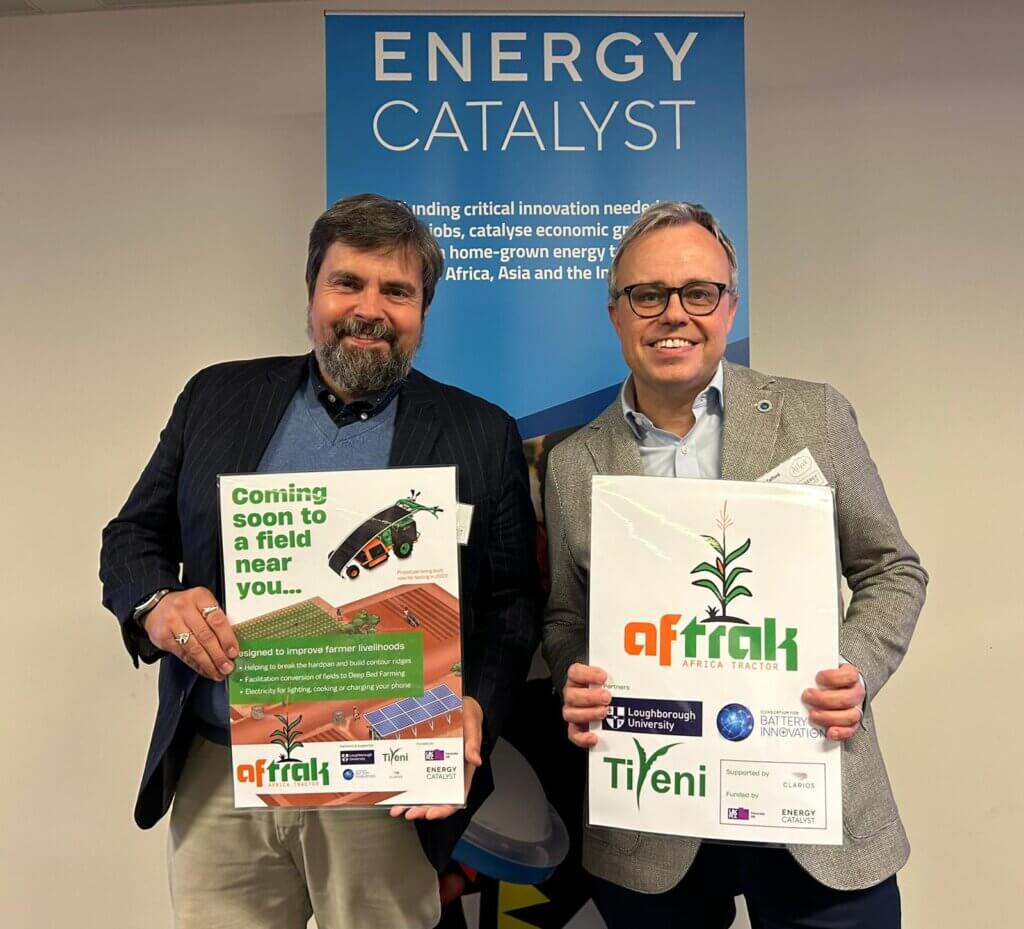
About Consortium for Battery Innovation
The Consortium for Battery Innovation (CBI) is the world’s only global pre-competitive research organization funding research into lead batteries for energy storage, motive, and automotive applications. For more than 25 years, with its global membership of battery manufacturers, industry suppliers, research institutes, and universities, CBI has delivered cutting-edge research pushing the boundaries of innovation in lead battery technology, setting the standard for advanced lead batteries and the next generation of energy storage. For more information, visit our website: batteryinnovation.org
AfTrak is the second bid application to be awarded to CBI in the past year after LoCEL-H2, a sustainable microgrid project using lead batteries and a novel, lead-battery-enabled funded by the European Commission under the Horizon Europe program.
About Loughborough University (LU)
The Wolfson School of Mechanical Electrical and Manufacturing Engineering is one of the biggest engineering schools of their kind in the UK with a research portfolio of around £52m. CREST (Centre for Renewable Energy Systems Technology) has a cohort of around 60 academics, researchers, and Ph.D. students and a good range of laboratory facilities for prototype manufacture and testing.
About Tiyeni UK (TU)
A UK based NGO who have funded the development of Deep Bed Farming (DBF) as a response to extreme food poverty within Malawi. The organization has grown year on year as support and demand for DBF has increased. Alex Gerard was appointed as a full-time Executive Director in 2021. Tiyeni’s board has extensive business experience and a network of agricultural advisers who have contributed to the development of DBF. Farmers adopting DBF can double their agricultural yields and all but eliminate requirements for expensive and environmentally damaging imported fertilizers.
Tiyeni Malawi (TM) is a Malawian company, funded by Tiyeni UK and operated at arm's length by a Malawian team, and led by an experienced Country Director, Isaac Monjo Chavula. Tiyeni continues to grow in size as DBF spreads across the country – especially since Malawi government approval. Historically the organization has focused on agriculture but is now diversifying into water management and carbon credits. Tiyeni is focused on ensuring all farmers in Malawi have access to training in DBF either through government extension workers, other NGOs, or through direct training for Tiyeni. The team is also developing the business model for smallholder deep bed farmers so they can leverage the other DBF benefits of carbon sequestration and water management.
The International Lead Association and Consortium for Battery Innovation have opened an office in Brussels to support the lead and lead battery value chains, and planned energy storage projects, as the EU strengthens its commitment to delivering net zero ambitions.
The decision to establish an EU base reinforces ILA’s long-term commitment to developing a sustainable lead value chain in Europe, as decision-makers focus on strengthening the EU’s strategic autonomy and embedding circular economy principles.
Dr Andy Bush, ILA’s Managing Director said: “The EU benefits from well-established lead and lead battery value chains and there is a need to nurture and develop the industry and the technologies we support on a much bigger scale to meet ambitious climate targets. While we have been working in Brussels for many years, our new office will act as a base for continued efforts to maximise support for the lead industry as well as continuing to engage in important regulatory discussions on a range of files.”
The move comes as the EU introduces new proposals designed to shore-up the supply of critical raw materials and boost low carbon industries in the shape of the Net-Zero Industry Act. Meanwhile, a proposal to include lead on the REACH authorisation list is being fiercely opposed by ILA, representing lead producers and downstream users who rely on lead to produce a wide range of economically and socially important products and applications.
The joint office will also act as a base for the Consortium for Battery Innovation’s energy storage work, with a focus on new projects working in collaboration with EU institutions, member companies and other partners. As lead batteries can be infinitely recycled, and are considered to be one of the top five most sustainable consumer products, CBI aims to support the work of the European Commission in strategically significant areas, such as the EU Industrial Strategy on energy autonomy and electric vehicles, and to play a pivotal role in the achievement of EU’s climate neutrality goals by 2050.
Dr Alistair Davidson, CBI Director, said the decision to open a Brussels office builds on the research group’s recent success winning a Horizon 2020 project to develop innovative microgrid technology for off-grid communities.
He said: “We are working with a wide range of partners in Europe to develop more energy storage projects which will help the EU meet net zero targets through innovative battery-based solutions. These include developing pre-competitive technical blueprints for applications such as EV charging stations and renewable energy storage facilities.”
Initially two CBI employees will be based in the Brussels office, on Avenue de Tervueren. Nicola Filizola joins as CBI Senior External Affairs Manager, and Dr. Athanasia-Maria Tompolidi as CBI Research and Innovation Manager.
In January, a few members of CBI’s team visited eastern Pennsylvania to tour part of East Penn Manufacturing’s facility which produces over 500 types of batteries, including a large number of lead battery designs. Indeed, East Penn produces gigawatt hours of batteries every year – and is a real-world, established gigafactory.
Norbert Maleschitz, East Penn’s Executive Vice President & Chief Operating Officer, shared his excitement about the future of lead batteries. With innovation as part of their DNA, he explained that East Penn is pushing its technology further through an ongoing investment into R&D and Engineering. As lead batteries’ role in meeting future energy demands grows, Maleschitz and East Penn support improvements in manufacturing because they are key for enhancing technical solutions to both customers and the industry.
Dr. Matt Raiford, CBI’s Senior Technical Manager, inquired about the projects and enhancements underway at East Penn. There are several activities focused on improving electrode design, material innovations, and overall battery designs. The results will be a key part in continued performance improvements for lead battery technology and vital for ensuring that these batteries can meet future energy storage requirements.
CBI also had the chance to discuss and view some ongoing project work at the Briedegam-Miksiewicz Innovation Center R & D Department. Dr. Carl Telford, CBI’s Senior Research and Innovation Manager, met with Perry Kramer, Director of Technology, Research and Development at the Center and was able to look at how they are working with New Zealand-based development partner, ArcActive, to fully take advantage of the development of this novel technology.
Perry explained how ArcActive Technology features a carbon felt that replaces the standard lead grid structure of the negative current collector, enabling significant increases in charge acceptance. A battery featuring this technology helps to lower emissions in micro hybrid vehicle applications, and also improves the charging characteristics of the traditional 12 V lead batteries used in electric vehicles (these ‘auxiliary’ batteries power a vehicle’s accessories and critical safety functions).
Perry shared an overview of another large project that is focused on increasing cycle life. Bi-polar battery technology offers the potential to increase cycle life by three times over standard Absorbed Glass Mat (AGM) products while also reducing weight. The applications of this technology could range from use in automotive to reserve power and motive power, as well as other energy storage applications.
Telford and the rest of the team were particularly interested in East Penn’s work related to future manufacturing processes for lead batteries. Manufacturing needs to be very precise and predictable to enable the construction of a commercially successful, reliable, and dependable lead-battery product. East Penn has a large capability in manufacturing engineering and automation. Further innovations in manufacturing will provide the right mechanisms for extending battery longevity in future applications.
Finally, the team toured East Penn’s smelter and recycling facility. Lead batteries are a fantastic example of a product designed for complete end of life recycling, and currently over 99% of lead batteries are collected and recycled in North America. Their facility recycles everything including the acid. The facility recycles 182 million pounds of lead on an annual basis. In addition, they have a process in place to remove nitrogen oxide exhaust or off-gases and use them to create other products that benefit an adjacent industry.
Overall, CBI greatly appreciated the tour of East Penn to learn how their facilities’ efforts and leadership truly make the lead battery such an important contributor to global energy storage and a model for a more circular economy.
Wolfsburg, Germany will be the host city for our next iteration of our successful, annual workshops focused on Advanced Lead Batteries. The Automotive Lead Battery Advancements (ALBA) 2023 Workshop, will be held on 14 June, from 11am-5.30pm and 15 June from 8.30am-3pm, and will include a networking dinner in the evening of the 14June.
This year’s ALBA will have plenary talks concentrating on auxiliary applications and on power-supply requirements in support of Functional Safety.
During parallel break-out sessions, the following topics will be addressed:
Download the draft ALBA workshop schedule.
CBI will also hold its European Technical Workshop on 13-14 June and Safety-relevant State of Function (SSOF) Workshop on 15-16 June. All events will take place at the Leonardo Hotel and CongressPark in Wolfsburg.
Click here to register.
Webinar Slides - password protected. Registrants - check your email!
We are looking forward to meeting you in person this summer in Germany!

Our members are vital for CBI’s ecosystem as they help us develop messages, interventions, roadmap, and our own call for projects. This helps CBI conduct pre-competitive research that benefits all CBI members, the battery industry in general and the wider research community.
As a large battery maker, Clarios are an invaluable member. Additionally, Clarios were instrumental in setting up and supporting the work of CBI’s Research and Innovation Manager, Dr Carl Telford, in developing public funding opportunities in Europe and deliver exciting, game-changing projects.
CBI team visited Clarios HQ in Hanover, Germany, to strengthen this collaboration and to learn more about their current R&D work.
« We have developed the Start-Stop technology in AGM to become the benchmark technology for premium cars with micro-hybrid functionalit. Innovation in process technology like the Clarios Power frame technology has been leading the way and is presently the standard in the industry. For the future, we see a lot of life left in Lead technology. We see further innovation potential in charge acceptance and cycle life to further improve the technology » (Dr Christian Rosenkranz - Vice President Industry and Governmental Relations EMEA at Clarios & Chairman at CBI)
Watch the first video from CBI's visit to Clarios:
The CBI team visited Castanheira do Ribatejo, in Portugal, to meet with Exide Technologies and to find out more about its facilities.
Exide operates two state-of-the-art solar installations at its battery production (in Castanheira do Ribatejo) and battery recycling facilities (in Azambuja), using lead batteries (see our case study here).
José Barreiros (Director Product Development Industrial EMEA at Exide) explained how it works in detail:
« We have a combined capacity of 4.5 MWp, with overall 11.250 solar panels installed. This is enough energy to supply more than 1.500 households. With these solar parks, we have reduced the carbon emission by more than 20% across both sites.
In our production plant, the PV installation is combined with our own battery energy storage system (BESS). It contains 70 inverters and 290 Sonnenschein Solar battery cells, with an available stored energy of around 500kWh. The battery storage system is part of a ‘Green Social Building’. It operates as an island for the factory workers, where the solar panels provide energy during the day and the batteries provide power at night ».
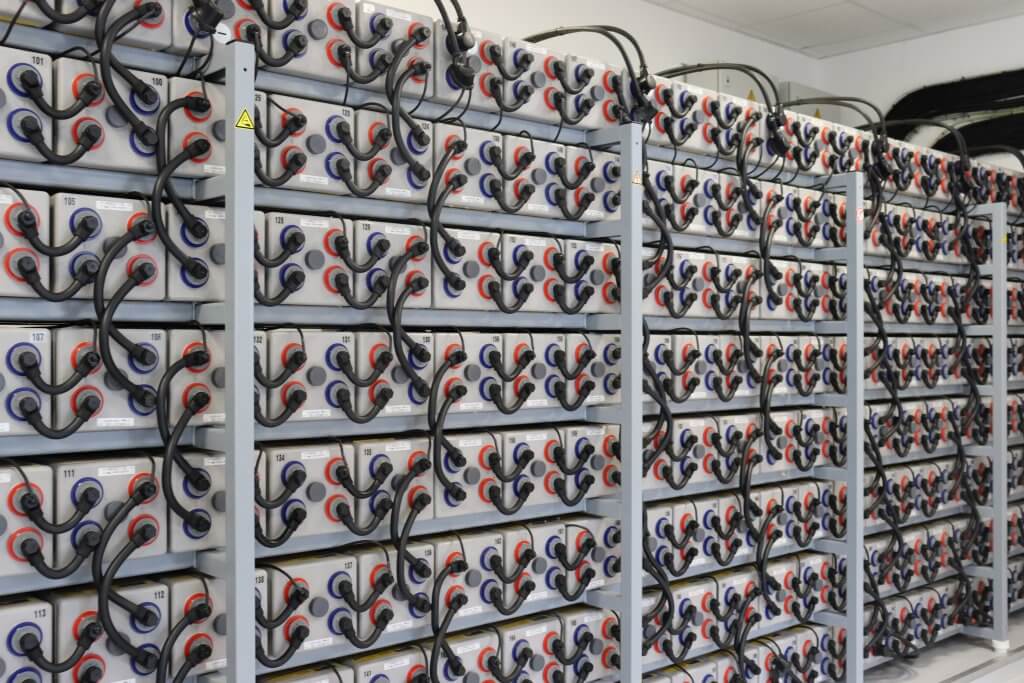
The type of lead batteries used in this Battey Energy Storage System (BESS) are Exide’s very own Sonnenschein Solar gel batteries. This battery range « has been used in complex, large-scale network power applications across the world for many decades », José continued:
« With their proven reliability, maintenance-free and first-class safety features, gel batteries offer a long service life and protection against deep discharge. Also, since lead batteries are fully recyclable at the end-of-life, our Sonnenschein Solar range provides added sustainability for renewable energy storage applications ».
For CBI, energy storage applications utilising battery technology is an increasingly important market-key to help governments around the world meet future electrification and decarbonisation targets and Exide’s Product Development Director agrees:
« As a global player of battery and energy systems, Exide Technologies is in prime position to inspire today’s and tomorrow’s generations with smart energy storage solutions, as we recognize the need to both preserve and energize the world. Exide Technologies offers smart energy storage solutions to support the transition from fossil energy to renewable energy sources. We focus on storage systems and solutions for greenhouse gas reduction and the optimization of TCO in energy-intensive industries.
Our energy storage solutions will enable businesses to become ‘greener’, more productive and in control of their energy usage and costs ».
Another benefit of this project is its unique and innovative Battery Management System (BMS) for lead batteries:
«Our installation is utilizing the battery management system to control the voltage of each cell and the temperature on each string, via four probes, assuring a tight control of the depth of discharge and charge on each string.
Taking into consideration that the battery operates on one cycle per day, this will allow deeper control of the state of health of the cells and act as soon as needed. It also predicts the available energy of the system depending on the power», concluded José.
This installation is one of many worldwide energy storage systems using lead batteries. If you’re interested in more projects like this one, please explore our Interactive Map.
They are the future of the lead battery industry: highly-educated, motivated and brimming with new ideas and ambition. CBI spoke to three talented scientists, new to the lead battery industry, to find out more about their perceptions of the workplace and to hear their suggestions about how the industry can continue to attract the brightest and the best.
Max Parker, a PhD Student at Warwick University (United Kingdom); Miguel Rodríguez Gómez, PhD Student at INMA (Spain) and Grace Rocha, a Scientist at ITEMM (Brazil). From industry’s first impressions, learning new areas for innovation and crucial for our future, to the industry’s urgent effort to attract more young talents, they are the voices of a new generation inside the lead battery industry and here’s how they feel about it.

CBI : Tell us a bit about when you first joined this industry. What were your expectations ?
Max : « Batteries are an exciting area with a lot of areas to look at and lots of different things to analyse. Before joining the industry I didn’t really know what made one battery better than the next, why this one can charge faster than the other or why this one lasts longer than the other. Lead batteries are interesting because they have been around for such a long time, but there is still so much more to look at, and still so much more to learn. »
Grace : « To be really honest I didn’t think very much about the whole Lead Battery industry. I just wanted to be part of a great industry with a great social impact, which everybody near around knows Moura does to the city and to the state. Now, I am truly surprised with how much I enjoy working on the field. I see that there is a excitingopportunity for progress learning and development in every area of lead battery technology. »
Miguel : « I had just finished my masters degree and I was looking for research into something related to the energy or climate crisis. Energy storage is essential to be able to cover the off-peak hours of renewable production, and to move away from fossil fuels (which also have rapidly diminishing reserves). So, I started to look for research lines related to batteries. The truth is that I knew almost nothing about lead batteries, I thought there were only in cars and little else, but when I learned a little more and discovered that they can be used for many things and above all that recycling is very high, I decided to go for it.”

CBI : And now that you’ve been working for the industry, what’s your current perception ?
Max : « I think that there are lots of challenges ahead for the world of lead batteries. I would like to see more innovation to meeting these challenges, especially in the energy storage sector, which will be a big part of the future of lead batteries. Innovation is constant, and constantly necessary, because the use cases of lead batteries are changing. We need to be providing the new and innovative batteries of not just today but also the future. »
Miguel : « There is still much to discover and improve, and I think that since the materials of the batteries are cheap and abundant (but also safe and resistant), it will be very important in the years to come. On the other hand I think that production is too focused on the automotive industry. There is less and less demand for cars worldwide and energy is becoming more and more expensive, so I am convinced that the future is energy storage and back up systems. »
CBI : What can you learn from working with professionals who have been in the industry for a long time? What do you learn from each other in your projects ?
Max : « Professionals with a lot of experience have a wealth of knowledge and, but it is up to them to pass that on. I started from zero knowledge and having an experienced professional to provide guidance would have been of great help to ensure that I wasn’t misunderstanding things. Since being involved with the CBI, it has enabled contact with battery experts within companies and other universities. Some of them can share knowledge that is not as well known or written about in technical literature. And this leads to better experiments, better understanding and better development. »
Grace : « One of my favorite things about my job is the opportunity to network with everybody in the global lead battery chain. I’ve noticed that there is so much contribution on the field. For example, every time I have a call with a supplier, a partner, a specialist, I learn something new. And I feel they are always willing to help, they are so welcoming to answer my questions (and I do have lots of questions !). The Lead battery is not a technology that you learn through on college here in Brazil. So everything I know so far, I’ve learned from their experience. I’m really glad to see how some of the ideas I’ve given actually worked and contributed with the development of the projects. »

CBI : What things would you like to happen in the industry to attract more talent ?
Miguel : « There are two main things to attract younger professionals. The first is to raise awareness of the lead battery industry, communicating its importance globally and showing that it is possible to have a fruitful career in it. The second is to communicate that it is a technology that can help with very important problems that especially (but not only) the younger generations are going to suffer, such as the climate crisis, the energy crisis and the resource crisis. For me personally, it is essential that 99% of the lead in batteries is recycled. I would not like to work with a polluting technology that ends up accumulating in landfills. I also believe that research lines focused on renewable energy storage and batteries for trains (which is the most efficient and less polluting transport, both for people and goods), should be encouraged. »
Max : « From my perspective in the world of academia, I would like to see more PhD funding, more internships, sponsorships and more university partnerships. Early career development and career paths can encourage people to join. Another option would be a summer job/internship/work experience in a battery company. Getting young people into the world of batteries requires investment in them, and guidance. With the right support and guidance a PhD student can produce some excellent research. But without the right funding they will go to do something else, or a PhD in another field. »
Grace : « I believe the answer is undergraduate students. Talking about the Brazil scenario, I would like to see the industry work more with universities. For example, investing in programs to develop new projects for undergraduate students. I think that would be a win/win situation : The students would have the opportunity to work on a real life problem and learn about the lead battery from experts ; and the company would have the opportunity to work with new researchers and a new university department. This is a great way for students to be more prepared before they join a lead battery company.
I think even quick programs like a “Battery Marathon”, something like a Hackathon, would make students curios about the area and starttheir development from college. Today, at ITEMM we are already making this approach. Recently we started the implementation of a research and innovation center in a technical college in the city, focused on developing young talent.»
CBI : Would you recommend the lead battery industry as a place to work for young scientists?
Miguel : « I recommend the lead battery industry to anyone interested in energy storage. It is a well-known technology but there is still a lot of room for improvement, and research is always interesting and fun. From my work I especially like the direct relationship with the industry, which is eager to generate more and more research projects. This year at ELBC, I have learned a lot and it has been a very rewarding experience to learn about the latest advances in research and also to see what the market trends are. »
Grace : « I do recommend. The more I work on the field the more I see there is still so much room for new ideas. It is a great time to be working in the battery field! Environmental care is one of the major concerns around the world, and batteries are key to this! One of the great things about the lead battery industry is that we are a safe technology, critical for energy storage, which helps reduce the global carbon footprint. Something people forget is that we are also an industry that has a true circular economy. »
Both Max and Miguel won this year’s CBI & EUROBAT Student Award, a great way to promote their work in the industry by bringing them to ELBC 2022 as speakers. In 2022, CBI also visited ITEMM in Brazil, where we had the chance to meet Grace and learn about her work at the Research and Development Department.
Interested about their work with CBI? Check out our blogs and videos:
This European research collaboration aims to optimise lead battery performance for micro-hybrids. Researchers from Fraunhofer ISC and Wroclaw University are investigating the effect of carbon surface chemistry on the battery performance, and the goal is to understand which kind of surface chemistry is beneficial for improved charging and discharging behaviour for lead batteries.
Research projects like this one are proving to be relevant for wider scientific topics, such as low-emission vehicles, electrification and decarbonisation, as well as for carbon additive research.
According to Expert Group Manager from Fraunhofer ISC, Jochen Settelein, to follow the energy transition, batteries play a central role and lead batteries are safe, highly recyclable, produced at a low cost and the entire value chain exists within single countries or regions. By undertaking research and innovation into the lead battery technology, researchers are finding their way to adapt this « well-established technology » to the needs and requirements of the current energy transition.
Through this specific project, CBI is bringing together leading European researchers, scientists, and institutions to work towards a common goal, achieving CBI’s Technical Roadmap goals for the automotive sector, such as improving DCA.
Watch full video about this project here:
A key goal of CBI’s Technical Roadmap to improve the DCA of lead batteries, a technical parameter highly relevant for the automotive industry which encompasses lower emission vehicles such as start-stop, micro-hybrids and electric vehicles.
The CBI-funded project "Best practice of cell testing for EFB regarding DCA and high-temperature durability" delivers a significant improvement of DCA while also delivering uncompromised water consumption and improved corrosion durability.
With project partners from across the European value chain – universities TU Berlin and Fraunhofer ISC, car company Ford and battery manufacturer Moll in– this project encompasses the diverse players involved in Europe’s innovative lead battery industry.
As the automotive industry continues to move towards decarbonisation and electrification, new functions are required to increase safety and comfort. “These trends impose growing demands on the energy storage devices used within automobiles. In order to take advantage of these opportunities and defend against competition from other technologies, the lead battery must continue to adapt and improve”, explains Sophia Bauknecht from TU Berlin.
This project in particular is essential for the growing start-stop and micro-hybrid market as “Dynamic Charge Acceptance (DCA) and water loss are critical factors for the efficiency and lifetime of start-stop batteries, and they need to be improved to stay competitive with other battery technologies”, says Prof. Dr Julia Kowal from TU Berlin.
“Changes in the material synthesis and preparation are needed for cost-efficient and faster material developments. Especially if it works to measure the DCA from a simple measurement of a reduced size cell, improvement of DCA can become much faster because only small cells are needed for material screening and then only the promising materials need to be scaled up to complete batteries”, she continued.
Lead batteries are a vital part of automotive applications, including SLI, start-stop and micro-hybrid applications. As the industry shifts towards electrification, this technology will continue to evolve and adapt in order to provide better safety and security features through secondary low-voltage EV batteries, EFB and AGM batteries.
Pre-competitive research projects underway through CBI’s Technical Program, like this one, not only help CBI to develop better practices for the industry, but also strengthen the collaborative work between automotive manufacturers and battery application specialists to continue the innovation push driven by CBI.
Watch Part II video of CBI's visit to TU Berlin
Interested in related topics ?
CBI Research and Innovation Manager Position
Location Durham, North Carolina preferred
Contract Initial contract 18 months
Hours 35 (full time)
Job Summary
The Consortium for Battery Innovation, a rapidly growing global battery research consortium, is seeking candidates for an 18-month position as CBI Research and Innovation to be based at its North American office in Durham, North Carolina.
The successful candidate will have excellent scientific knowledge, ideally including battery technologies, in addition to strong communications and interpersonal skills. The candidate is expected to efficiently manage a diverse portfolio of technical activities working independently.
Required Qualifications
Preferred Qualifications
Job Responsibilities
This role will involve regular North American, European and Asian travel.
Compensation
The salary and benefits package will be commensurate with education and experience.
About CBI
The Consortium for Battery Innovation is a global innovation hub which supports cutting-edge pre-competitive research and promotion of innovation in lead battery technology. The consortium includes more than 100 member companies and organizations worldwide, consisting of lead producers, battery manufacturers, battery users, materials suppliers and research institutions.
The candidate would be joining a vibrant and dedicated team, with offices in Brussels, North Carolina, and London. More information can be found here.
Application
Interested candidates should submit a CV and cover letter to info@batteryinnovation.org by October 16, 2022.
We are committed to equal opportunities and creating an inclusive environment for all our employees. We welcome applicants regardless of ethnic origin, national origin, gender, race, color, religious beliefs, disability, sexual orientation or age.
The Consortium for Battery Innovation, a rapidly growing global battery research consortium is looking to appoint an experienced communication manager to support our corporate communications programme, handling the full range of disciplines including external, digital and member/internal communications.
The role will report to the CBI Director, and is an opportunity to help deliver and influence a wide range of innovative communications projects and campaigns in Europe, the US, Asia and Africa. The post will be based from the CBI office in Durham, North Carolina.
Job Title Communications Manager
Location Durham, North Carolina preferred
Contract Initial contract 18 months
Hours 35 (full time)
Required Qualifications
Job Responsibilities
This role will involve regular North American travel and occasional European and Asian travel (15-25% time)
Compensation
The salary and benefits package will be commensurate with education and experience.
About CBI
The Consortium for Battery Innovation is a global innovation hub which supports cutting-edge pre-competitive research and promotion of innovation in lead battery technology. The consortium includes more than 100 member companies and organizations worldwide, consisting of lead producers, battery manufacturers, battery users, materials suppliers and research institutions.
The candidate would be joining a vibrant and dedicated team, with offices in North Carolina, and London. More information can be found here.
Application
Interested candidates should submit a CV and cover letter to info@batteryinnovation.org by October 21, 2022.
We are committed to equal opportunities and creating an inclusive environment for all our employees. We welcome applicants regardless of ethnic origin, national origin, gender, race, color, religious beliefs, disability, sexual orientation or age.
One of the highest priority goals set out in CBI’s Technical Roadmap is improving DCA –Dynamic Charge Acceptance for automotive lead batteries.
It’s a key area of work that CBI works with universities, research institutes, battery companies and car manufacturers around the world to tackle.
At TU Berlin, an ongoing research project has identified that on a battery level “single-pulse test for DCA and continuous overcharging for water consumption bear only weak correlation with results obtained under field conditions, particularly when most advanced (high DCA) battery technologies are addressed”, says Sophia Baucknecht, Graduate Research Scientist from TU Berlin.
As part of the research team made up of TU Berlin, Fraunhofer ISC, Ford and Moll, Sophia’s research aims for a better alignment and co-operation between car makers and battery application specialists.
With what aim? To establish best practice cell-testing for EFB regarding DCA and high-temperature durability.
These two metrics are vital for the enhanced performance of automotive lead batteries used across the global vehicle fleet, such as start-stop and micro-hybrids.
The research is increasing the efficiency of lead batteries by “finding out if lab-cell tests of DCA and water loss can be scaled up to a complete battery”, explains Prof. Dr Julia Kowal from TU Berlin.
If there’s higher efficiency and better charge acceptance, “less energy is lost during charging and braking and so the fuel consumption is reduced”, she continues. This is a critical step for automotive battery innovation towards decarbonisation and electrification for more fuel-efficient cars with a lower carbon footprint.
Watch the first video on CBI's visit to TU Berlin:
Interested in related topics?
The Global Lead Battery Innovation Conference and Expo (ELBC), co-organised for the first time by CBI, took place in Lyon, France (6-9 Sept).
As a warm-up to the main conference, CBI brought together lead battery industry experts from all over the world, to take part in:
On day one of ELBC, CBI’s Director (Dr Alistair Davison) set out a positive assessment of the opportunities for advanced lead batteries highlighting CBI’s roadmap, which charts a path to a new generation of batteries in a session dedicated to Markets and Trends.
And CBI technical experts, including Begüm Bozkaya, Technical Manager, outlined the CBI technical program with an insightful presentation focusing on improving energy storage systems and automotive batteries as key innovations in the industry.
To promote CBI’s Technical Roadmap and its work in driving innovation across the industry Dr Matthew Raiford, CBI’s Senior Technical Manager updated delegates. And in a major announcement, Dr Carl Telford impressed ELBC attendees with news of a 10 million Euro funding award for an innovative lead-battery powered microgrid project in Africa, brokered by CBI.
In his presentation entitled « Opportunities for Lead Batteries in Energy Storage Systems », Dr Telford spoke about the use of lead batteries for sustainable energy projects and presented for the first time this novel project funded by the European Commission that gathers lead batteries, renewables, and hydrogen.
As always at ELBC there were many networking opportunities, with delegates able to meet face to face for the first time in four years. The well-attended gala dinner took place at La Sucrière, and WGBI’s (Women in the Global Battery Industry) held its first meeting in Europe. This important initiative aims to bring more women to our industry and empower them through networking sessions, workshops, and mentoring opportunities.
CBI is very much looking forward to seeing all these fantastic attendees and delegates again at ELBC 2024 in Milan, Italy.
Watch the Event video:
The share of renewables for electricity generation by 2030 is expected to grow to 35%, and this global shift is relying on innovative technologies to harness this energy in clean, affordable and sustainable ways.
A big focus area for this shift is how to ensure that the clean energy transition fairly includes communities in parts of the world without reliable access to electricity or energy resources.
Responding to Europe’s Horizon call for funding proposals, a consortium of organizations spanning the energy, batteries, hydrogen academic and NGO sectors has joined together to develop a novel concept called LoCEL-H2.
Aiming to develop a sustainable, scalable, multi-vector energy solution to improve the lives of vulnerable communities, the project is based on renewables, battery storage and a novel hydrogen technology for cooking/fuel.
Low-cost, Circular, plug & play, off-grid Energy for remote Locations including Hydrogen, LoCEL-H2 is recognising the need for a fair energy transition across the globe and working to deploy pilots in two communities that have no access to reliable sources of energy.

This innovative concept includes battolyser hydrogen technology under development at Loughborough University, which will be used as cooking fuel for the communities where the modular off-grid energy solutions will be installed.
The future needs innovation. And it needs technologies to work together and complement each other to deliver innovative solutions for the clean energy transition. Bringing together different sectors, each with expertise in various technologies and energy solutions, LoCEL-H2 aims to ensure clean energy is paired with socioeconomic benefits for remote communities around the world.
See Press Release here.
Watch the first video about the project:
The global market for electrified vehicles is expanding. To support this growth, robust vehicle charging infrastructure will be required. Indeed, recent studies suggest that between two and three million public chargers will be required in the European Union through 2030.
As part of an initial four-project funding push in Europe, CBI and members are developing a project concept focusing on the use of lead batteries in electric vehicle (EV) charging applications, primarily as a buffer solution.
Rapid chargers can charge a standard BEV from 20% to 80% state of charge in approximately 30 minutes at a 50kW output power. However, they are restricted to areas where the supply can sustain a sudden 50kW load. In some cases, grid reinforcement will be required to enable installation rapid chargers and guarantee sufficient power is available.
One solution to this significant issue is to deploy battery buffers. Battery buffered EV charging does not require disruptive and expensive grid reinforcement.
There are also other benefits – it is possible to charge the batteries with renewable energy (for instance, solar or wind) to either provide primary power or augment an existing grid connection
CBI with our project partners will develop and deploy a lead-battery-buffered BEV charging solution for one or more specific scenarios, for instance sites in remote or limited-grid-capability locations.
Lead batteries offer some interesting technical advantages in applications where charger use can be infrequent. They are excellent at high state of charge (SOC). In comparison to other battery technologies, lead batteries are safe to use, as they contain water-based electrolyte, which does not present significant risks to customers or the environment.
Lead batteries also have the potential to reduce overall system overhead cost—by eliminating the need for balancing electronics, air conditioning & thermal management. In addition, the global lead battery industry is well positioned to capitalize, due to its sustainability & circularity, mature regulation, robust supply chain, and strong safety record.
We are in currently in discussion with vehicle OEMs, charging station operators, and out network of battery experts to bring this project to reality.

Dr Paul Everill, Chief Technology Officer at Black Diamond Structures LLC, joins the ALBA mini blog series to share insight into the “Mechanisms and morphology limiting charge acceptance’ breakout session.
++
Battery development based on iterative component variation testing is the lead industry’s modus operandi. The tactic, however, is considered by some to be “foraging in the dark” since a company must be prepared to accept many wrong turns before a goal is met. That company must further accept that the process will need repeated every few years as new components hit the market.
An efficient development plan includes a portion of fundamental research; an element of deep science that develops strong structure/function relationships more reliant on true understanding of the system rather than a transitory “1 + 1 = 3, I don’t know why, but I’ll take it for now” mentality.
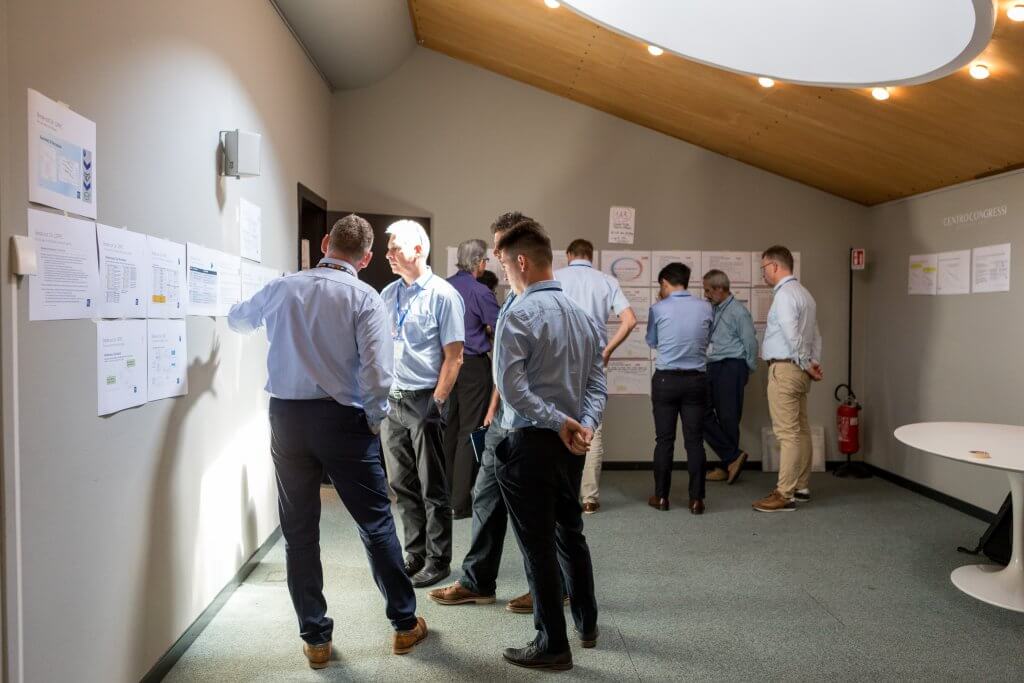
The Consortium for Battery Innovation encourages such understanding through precompetitive, collaborative research. One embodiment is the Automotive Lead Battery Advancement workshop (ALBA), conceived by Ford Motor Company’s Dr. Eckhard Karden, where some of the world’s leading battery scientists discuss lead’s deeper mechanistic and morphological questions:
Crucially, these topics are not academic novelties destined to be buried in the annals of an obscure journal. They are critical questions which, when answered, can direct battery developers to create the next generation of batteries smartly, “with the lights on”.

Interested in related topics? Read some more of CBI's blogs:
The Graphene Council organized the “Commercialization Conference” and invited CBI's Technical Manager, Begüm Bokaya to speak at the event.
Carbon additives like graphene can increase the cycle life and charge acceptance of advanced lead batteries, which are critical for energy storage and automotive applications.
Learn more about the event and carbon additives for lead batteries in the video from the event.
Do you know how to properly measure the cold crank amps (CCA) or dynamic charge acceptance (DCA) using bench-top cells?
I didn't until six years ago, not until the lead battery industry started a series of intensive workshops named DCA & Heat - now called the Automotive Lead Battery Advancements (ALBA) workshops.
The ALBA workshops serve as the key forum for developing know-how and advancing research in 12 V lead batteries for automotive applications. One of the most consistent topics of the breakout discussions for ALBA has been based around cell-level testing, how to properly perform high-throughput research in a laboratory using bench-top small lead battery cells.
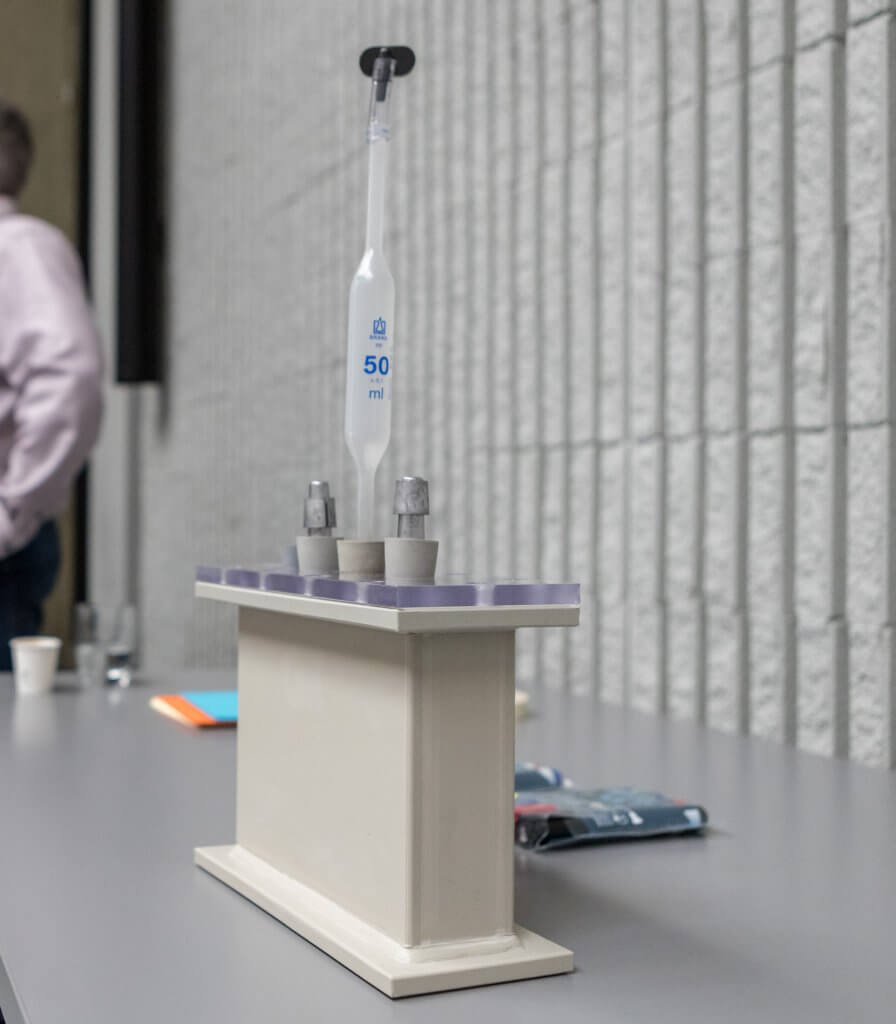
In the latest iteration of ALBA workshops held in Bergamo, Italy - organised by CBI in partnership with CENELEC and headed by Ford's Eckhard Karden - this specific breakout session on the evolution of cell testing and development was characterized by topics focused on:
Cell-level testing in laboratories is the fastest and highest throughput method for moving innovation in lead batteries, and this session pushed developments in DCA and high-temperature endurance, which are key performance indicators for micro-hybrid and auxiliary applications outlined in CBI's Technical Roadmap.
Keep an eye out for future blogs where colleagues from the global lead battery industry join CBI's blog to share insights from the other breakout sessions held during the ALBA workshops.

The role of battery energy storage in low and middle-income economies is increasingly important as a way to deliver clean, sustainable energy.
For many it means access to reliable power supporting everything from schools and education to cooking and refrigeration.
CBI is exploring opportunities to use lead batteries in energy storage systems such as microgrids, alongside a novel hydrogen-production technology (called The Battolyser) that also uses lead battery components.
Innovate UK invited CBI to visit Malawi, a country in Sub-Saharan East Africa, as part of its Energy Catalyst programme.
We joined start-ups, clean tech companies and connected with public and private energy organisations in Malawi, including the Malawi government, energy associations and the UK High Commission.
But, above all, we were able to learn first-hand the challenges and needs of local communities.
Designed to help companies find project partners who are applying for funding through Innovate-UK’s Energy Catalyst programme, the trip involved visiting existing microgrids and talking to local experts and communities.
CBI is now working with Loughborough University and two Malawi-based energy solutions providers to develop a strong bid for Energy Catalyst Round 9.
This £1 million project to develop an energy storage solution including electrical energy storage and renewable hydrogen, will be submitted in August 2022.

We are proud to have members highly committed to research and innovation, aiming to improve the role of lead batteries in applications for energy storage systems!
CBI visited Grupo Moura in Brazil to learn about the innovation underway happening there in battery technology and their research work building on the goals of CBI's Technical Roadmap.
Watch the project visit video below.
As Europe strives for carbon neutrality by 2050, batteries have become an essential part of the energy storage mix. Patrick Clerens, Secretary General of the European Association for Storage of Energy (EASE), shares a preview of his ELBC presentation taking place on Thursday 8 September.
The announcement made in July 2021 by the European Commission, aiming to make the EU carbon neutral by 2050 with a 55% emission reduction goal by 2030 raises several issues regarding the feasibility of such ambitious objectives. The subsequent rapid uptake of renewables requires a parallel deployment of energy storage solutions not only to provide critical grid services needed to integrate wind and solar, but also to cope with rising curtailment and to ensure energy security at moments of low renewables production. However, the current growth of energy storage solutions does not mirror that of renewables uptake today and urgently needs to be addressed.
A necessary solution to this is setting energy storage targets that go in hand with existing renewables targets in the broader frame of a European strategy for energy storage. Such targets would be in line with the EU best practices as climate targets already exist today in many sectors successfully driving the energy transition. Furthermore, energy storage targets are already in place in a number of regions including California in the USA and Greece and Spain in Europe.
Thus, EASE considers the implementation of targets at EU level to be a key driver for the boosted uptake of new storage solutions by fostering innovation and investment. Among the different storage solutions currently on the market, batteries can greatly benefit from this incentive as they provide grid services which are critical to integrating variable sources of energy like solar or wind but also play a key role in daily energy shifting for both front-of-meter and behind-the-meter applications.
A range of lithium-based batteries already provide critical grid services today in Europe and also bring an answer to the ever-growing need for daily energy shifting in the residential segment. The incredible demand for energy storage indicates other domestic battery technologies in the EU, such as lead batteries, could and should play an even greater role in the energy storage battery mix.
Finally, the case of flow batteries and other hybrid derivatives is particularly interesting as it allows for longer-duration storage, an extremely valuable application which minimises curtailment and can help meet inter-seasonal peak demand when renewable production is low.
In conclusion, energy storage targets have the potential to enable innovation and further accelerate uptake of batteries which remain a trusted, proven technology and an indispensable part of the energy transition.
CBI visited member company Advanced Battery Concepts, based in Clare, Michigan, to find out more about their innovative advanced bipolar batteries.
Active in the growing energy storage sector, ABC undertakes work focusing on advancing battery technologies to meet the technical needs of renewable energy such as wind and solar.
The facility in Clare, Michigan is where ABC do all of the engineering, equipment development and processes to make a better battery - an advanced bipolar lead battery. As the most recent winner of BCI's Innovation Award, ABC are being recognized for their work in contributing to advances in the global lead battery industry.
Advanced lead battery technologies are critical in the national and global shift to incorporating more renewables onto the grid and delivering affordable, reliable energy.
Working with researchers at the University of Warwick and Loughborough University, this project aims to gain more knowledge on the best use of lead batteries, particularly in the growing area of battery energy storage which is crucial to the greater adoption of low carbon generation.
In energy storage service batteries experience frequent charge and discharge cycles of varying depth. For a battery technology to be acceptable batteries must retain a substantial fraction of their initial charge storage capability over many cycles – hence the challenging target set by the CBI of 5,000 cycles.
Growing energy storage demand is driving increased need for batteries, and batteries with enhanced performance. CBI’s new Technical Roadmap is answering the call for better batteries by identifying key ways in which advanced lead batteries can maximize their performance for energy storage systems.
Lead batteries have the key benefits of safety and recyclability, and when you are talking about home storage units, fire safety becomes a huge concern. Lead batteries are far safer than many other chemistries and this project, using batteries with metal cases and ensuring that the correct operating window is maintained, adds extra confidence to the already excellent safety record of lead batteries.
The kind of collaborative research underway at the University of Warwick and Loughborough University is just what the lead battery industry needs to deliver higher-performing batteries and continue the innovation momentum of the technology.
Energy storage systems require safe, sustainable and reliable batteries, and lead batteries with higher cycle life and reduced system cost will be more attractive for all types of energy storage applications.
There are clear goals from the EU to decarbonize and decrease the reliance on fossil fuels. Understanding the fundamental contributors to lead battery failure at a molecular level will enable stronger cycling performance of lead batteries in all applications, such as microhybrid and energy storage applications. Batteries in these applications serve as the main tool to decarbonize the European utility grid and automotive fleet, the most important areas underpinning the EU Green Deal.
The main objective of this project is to analyze the different electrochemical processes and reactions that take place inside the battery electrodes during operation. To this end, CBI, INMA, and Exide Group are using, for the first time, in-operando neutron scattering techniques by placing real operating cells, built using the same components as in the factories, in a neutron instrument and collecting diffraction patterns and images from inside the cell, with both spatial and time resolutions, during the charge and discharge processes.
Also using neutrons because its penetration capacity in matter is much higher than that of other particles, as X-rays or electrons, used until now for battery analyses. In this way, it's possible to study real thick cells, about one centimeter in thickness, in real operating conditions.
This is an approach never used before in lead cells.
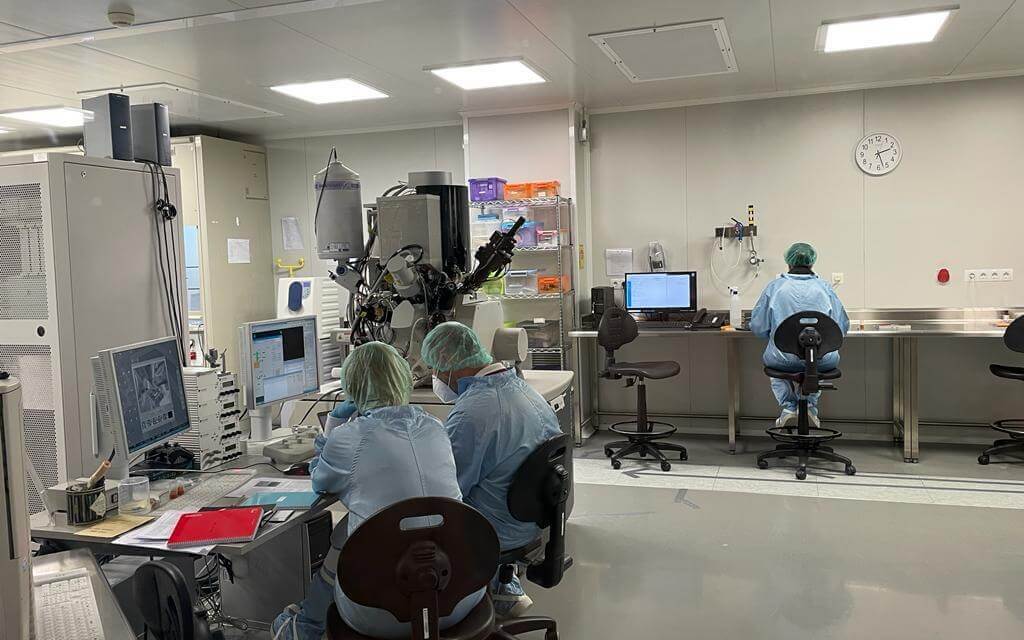
Learn more about this project through our project update video:
Every year since 1970 people all over the globe celebrate Earth Day to support the dialogue and actions taken towards the preservation of our planet, its environment, sustainability, and its future.
Today at CBI, we want to celebrate this day too by sharing some of the key ways in which the potential of our technology is being unlocked through research and innovation, to contribute to the goals of Earth Day.
Lead batteries are active in this space in two key ways: low-emission mobility and renewable energy storage.
One of our main research focuses at CBI is to expand the technology’s performance in the automotive industry, from start-stop technology to low voltage EV batteries.
We're working with leading research institutes, battery manufacturers, and car companies to drive forward this progress to improve dynamic charge acceptance (DCA). You can read more about these projects here.
Renewable energy storage also has a major role in the current energy transition across the globe, delivering clean, reliable power. Some of the recent examples we've added to our interactive map of energy storage projects, which showcases our members in all regions of the world providing advanced lead battery storage, are below:

This is just a snapshot of how the global lead battery industry is underpinning the clean energy transition in diverse sectors, from science and safari to manufacturing.
Innovation is key to sustainability. Technology progress is supported by fundamental scientific research into the chemistry, to help make better batteries, and CBI’s 2022 Request for Proposals is calling on industry, scientists, and researchers to join us on this innovation journey.
From energy storage systems using renewable energy to cutting-edge research developments, these are some of the highlights of our recognition of the importance of Earth Day, every day. As our mission to support the energy transition grows, CBI will continue to work with the global lead battery industry to ensure lead batteries are ready to meet future opportunities
Following this year’s International Women’s Day, we’ve interviewed some of the faces behind the communication strategies of our industry. People who work daily to demonstrate the effort of an industry towards climate goals, such as decarbonisation and electrification, while sharing messages of the industry’s work to achieve sustainable targets, science progress and innovation.
These are the professionals who are responsible for the communications of a long-standing industry, so essential in the digital world. They deal with a considerable amount of daily information and they’re able to transform the complex world of science to policymakers, business people and citizens in dynamic and understandable ways. And guess what? Many of them are women!
But why is it that the role of comms has become more important than ever? And what can these experts in the field tell us about the relevance of “sci-comms”?
According to Tammy Stankey, Director of Communications at The Doe Run Company, innovation in comunication is key in order to be modern and relevant, whilst for Fareha Lasker, Communications Manager at the International Lead Association, these are very exciting times to work for the lead and lead battery industry:
"The industry presents a dream messaging scenario — huge market demand combined with a key role for our technologies in the clean future of the planet means it’s a time of obvious and great opportunity. We know that the next 10 years will see unprecedented growth in demand for battery energy storage to support a clean energy future and that advanced lead batteries have a key role to play in applications which will enable rapid electrification of our economy and society".
The group agreed that it’s "essential" for investment in the industry’s comms departments, and as Niamh Owen-McLaughlin, Communications and Digital Manager at CBI, explained, it’s about telling a story of an experienced industry that has witnessed not only evolution but also "innovation, progress and research" and it’s also important to share the "importance of the technology" for the future :
"Without comms, a lot of our stakeholders would never hear the story of innovation that we have to tell, and would never think of advanced lead batteries as a technology which is used all over the world for clean energy storage, for vehicles, for low-emission vehicles and in so many more applications".
Tammy gave an example on how a strong comms department brings even more success to the industry :
"When I first became involved in the industry I was invited to sit on the Public Affairs and Marketing committee of what was then the ALABC (now CBI). As a communications professional it was obvious to me that our industry was suffering from a lack of visibility. Our committee pushed hard to have demonstration projects promoted at high-profile events such as The Battery Show. The greater visibility that these projects received, the more interest was created among companies to fund basic science research and demonstration projects. The effort is paying off, as we now see government agencies (such as the U.S. Department of Energy) proactively reaching out to our industry to identify the greatest opportunities for research and technology development to support the Energy Storage Grand Challenge".

But how is comms driving innovation in the industry?
"The more that we can communicate the innovation underway in lead batteries, driven by the efforts of the global lead battery industry, the more we can increase funding and opportunities for further research and development. We are showing that our technology is not one of the past but instead one that is currently used all over the world in so many diverse and critical applications, and that we’re confident through continued research that the innovation journey lead batteries are on has only just begun", Niamh continued.
Considering the amount of legislative and regulatory proposals in the pipeline around the world designed to improve and accelerate sustainable technologies, "by communicating the innovation in lead and lead batteries across many of these – from lead cables enabling wind power to lead batteries supporting EVs – we are ensuring our industries stand out among those. Communicators across our industry are successfully bringing together the right influencers across policymakers, regulators and industry to understand and appreciate that we are part of the innovative solutions to achieving their low carbon goals. In keeping us at the front of their minds, we’re ensuring we remain at the heart of the energy transition", completed Fareha.
Progress in the industry should also target goals of diversity within the workforce, as Lisa Dry, Vice President of Strategic Communications - Battery Council International and Essential Energy Everyday, explained :
"BCI’s leadership has recognized that the lead battery and recycling industry needs to reflect a more diverse and inclusive culture. One step in that direction is the new Women in the Global Battery Industry professional organization to help women in the industry grow their careers. Studies show that women are better employees than men in several categories including organizational development and coaching talent. At a time when the competition for employees is fierce, it’s critically important to help current employees reach their maximum potential."
There’s clearly a common desire to see more women working for the industry and reaching leadership positions, but to attract and retain bright minds we must be willing to reach out to a more diverse audience, something that the industry is very open to do:
"I have seen firsthand how open and welcoming the industry is to others and I have personally benefited from the comradery of the industry by getting involved. This has allowed me access to participate in various committees and even the executive committees of associations. I encourage other woman to look for opportunities to share their expertise and build their network in this industry", added Tammy.
Sci-comms is critical to demonstrate the innovation underway in our industry, and these communicators are responsible for sharing accurate messages in times where misinformation is a trend. This is our tribute to each and every professional behind a strategic comms role in the scientific field, where diversity is still not a reality.
Best practices of cell testing for EFB regarding DCA and high-temperature durability
Automotive
24 months
The automotive industry understands that advanced lead batteries have much improved dynamic charge acceptance (DCA), a key technical parameter for hybrid vehicles. However there have been concerns about side-effects caused by high DCA. Research has demonstrated that these side-effects are related to the way batteries are tested, and not how they actually perform in the car when on the road, in 'real-world' conditions.
This research project with Ford, TU Berlin, Fraunhofer ISC and Moll Batterien aims to create synergy between cell-level testing and ‘real-world’ field tests, to demonstrate that advanced lead batteries can meet all the OEM requirements for current and future micro-hybrids. This growing market is predicted to represent 80% of new cars in Europe by 2030, and provides higher fuel efficiency combined with reduced CO2 emissions in vehicles.
By improving cell-level test methods, this project will allow material developers and battery manufacturers to improve the performance of automotive lead batteries.
This collaboration involving Ford, a leading automotive company, means that the most innovative and highest-performing lead batteries will be available for future vehicles.
At Fraunhofer ISC, the work in the last six months involved weight loss and gas flow measurements on 2 V laboratory cells by applying different overcharge tests under various conditions. It is very crucial to determine accurate weight losses in small laboratory cells to perform high temperature tests, as these cells differentiate significantly from commercial automotive batteries.
At TU Berlin, 2 V laboratory cells containing different cell layouts were extracted from selected 12 V automotive batteries (EFB type) to perform DCA and water consumption tests. Both static overcharge test and new key life test (nKLT) were scaled down to 2 V cell-level. Important findings including correlation between charge balance and weight loss were concluded.
This project gives a comprehensive picture of water loss, corrosion and dynamic charge acceptance. These best practice cell-level evaluation methods can possibly be utilized by material developers and battery manufacturers to improve the performance of lead batteries. By doing this, a significant acceleration of R&D towards the challenging KPIs stated in the CBI technical roadmap can be facilitated.
Renewable energy is a cornerstone of Europe’s shift to a decarbonised future. And one of the technologies acting as a driving force for the increasing deployment of renewable energy projects is advanced lead batteries.
Batteries are key for storing energy generated through renewable sources such as wind and solar, a critical part of making this new energy mix more reliable. In Norway, electrification efforts are intensifying particularly around the use of renewables energy, and CBI member WaveTech Group, Inc. has recently announced their partnership with OneCo’s efforts to streamline the process.
Advanced lead batteries have been innovating in new ways in recent years, driven by the work of the global industry and CBI to ensure the technology continues to play a significant role in decarbonisation and electrification aims. Some of the key ways outlined in CBI’s Technical Roadmap specifically focused on the energy storage sector is for increased cycle life and energy efficiency for advanced lead batteries.
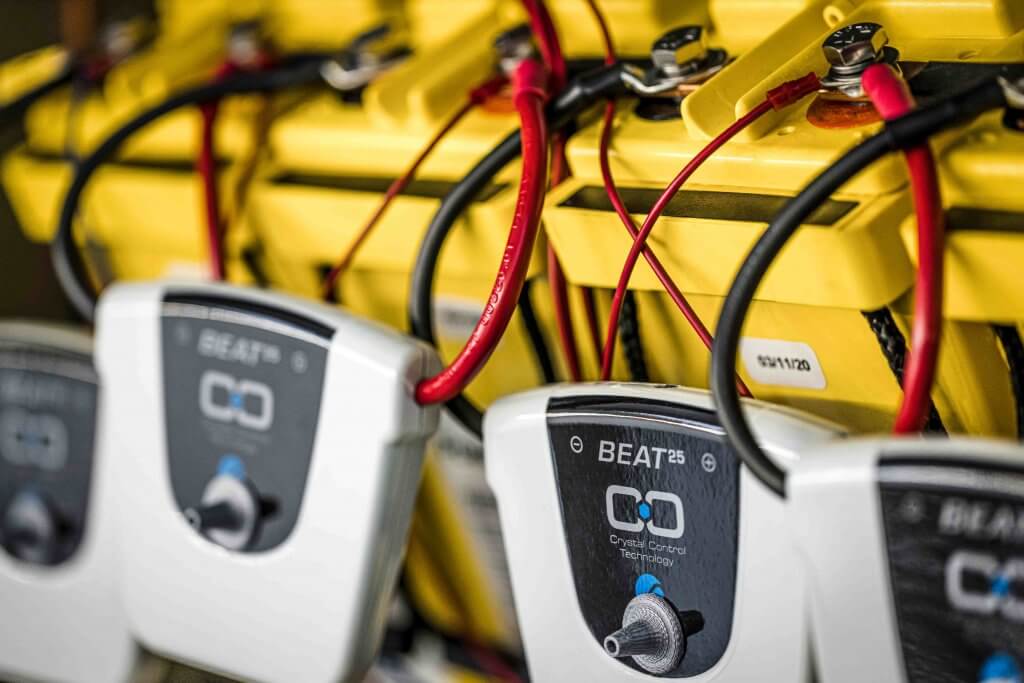
The partnership with OneCo is based on WaveTech’s unique solutions, offering Crystal Control Technology (CCT) for lead batteries resulting in enhanced performance and longer lifetime for use in the energy storage sector. The technology is based on applying a specifically modulated periodic signal during charge, and closely monitoring the state of charge and state of health of the battery. The innovation is used currently in the telecoms sector, where lead batteries globally represent the majority of battery demand. WaveTech’s R&D department is currently optimizing the technology for doubling the lifetime and tripling the energy throughput of the batteries for this and other stationary energy storage applications.
The benefits of Crystal Control Technology help WaveTech to charge the batteries faster and more efficiently. The power pulses sent to the battery enhance the mobility of ions in the electrolyte and optimize crystallization in the positive and negative plates of the battery. The surface of the plates remains active, sulfation is slowed down, and the highly porous microstructure of the lead and lead dioxide crystals formed in the active materials is kept sustainable. This results in a range of benefits including better battery power performance and longer life, reduction in charge energy consumption and hence lower CO2 footprint of battery operation.
For most EVs, low-voltage lead batteries (also known as auxiliary batteries) are a key component of the multi-battery system present in the vehicle. In combination with the high-voltage battery system, low-voltage EV lead batteries ensure the vehicle can function and provide power for critical safety features.
In 2021, a CBI blog on the critical role of lead batteries for EV safety was published by the World Economic Forum(WEF), demonstrating the importance of the technology for this application which is driving policy changes across Europe and the globe.
You can read about the various ways that 12 V lead batteries are powering critical safety functions on-board EVs here, but I want to look at some of the ways this market is proving so important for the global lead battery industry and how our industry is innovating to meet evolving technical demand.
Across Europe’s 27 member states, it is predicted that 50% of newly registered vehicles by 2030 will be plug-in hybrid EVs and full EVs, and the importance of lead batteries for these vehicles to provide safe and reliable baseline of power will only grow in significance.

As a battery technology, lead batteries provide a reliable storage device with an inherent safe chemistry and a sustainable closed-loop raw material cycle, with almost 100% recycled at end-of-life in Europe and North America. The unique benefits of the technology will be important to meet growing consumer expectations for safety, comfort and connectivity.
The advanced lead batteries used for these low-emission vehicles are continuing to innovate and develop based on the evolving needs of the market.
As more advanced driver assist sensor systems like lidar-, radar- and optical AI- systems are added to vehicles with the goal to enable autonomous vehicle functionality at level 3 and above, there will be an even greater reliance and predictability on the low-voltage battery.
An integrated part of the power train, the storage system needs to self-diagnose potential issues in the battery before they happen and anticipate required maintenance or replacement. The storage system also needs to provide emergency power critical for EV and autonomous vehicles and to be capable of communicating this capability to the drive train.
So the role of the lead battery in an EV is changing from an engine-starting application, to the new low-voltage storage systems for the specific duty cycle of an auxiliary battery system.
All of these elements are driving the innovation underway in low-voltage lead batteries to ensure the highest performing lead batteries are provided for the automotive industry.
Clarios, a global leader in advanced lead battery technology, has announced a smart AGM battery system which will sense, diagnose and communicate in real-time the condition of the battery in an electric vehicle. This functionality will be combined with the ability to support safety critical functions as well as anticipating required maintenance or replacement.
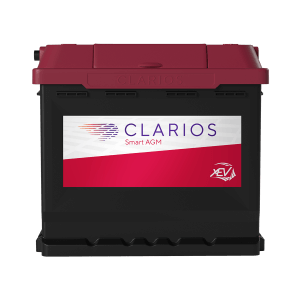
Clarios’ newest innovation is seizing the opportunities present in the growing global market for electric vehicles and is due to debut in the next two to three years.
This innovative battery is just one example of the way in which our industry is innovating to meet future market opportunities based on the global shift to a cleaner, low-carbon future.

By Dr Christian Rosenkranz, Chair of CBI and Vice President Industry and Governmental Relations EMEA at Clarios
As Europe stives for energy independence and a transition to a low-carbon future, the role of batteries underpinning this shift continues to grow in importance.
Following on from the wide-ranging innovation featured in part 1 of Europe’s innovation blog series, part 2 begins with insight into the collaborative “AddESun” project. Launched in 2017, researchers led by the Fraunhofer Institute and part funded by the German Federal Ministry of Education and Research, aim to safeguard the future of lead batteries.
With goals including more sustainable production, improved charging behaviour, longer service life and higher power density, the research focused on researching new additives and their effect on battery properties. Fundamental research such as this complements the work underway on the industry driven by CBI’s Technical Roadmap to ensure the role of lead battery technology in contributing to Europe’s strong battery industry.
Moving to the University of Brno in the Czech Republic, scientists have been active for many years in researching advanced lead batteries through additives, the influence of temperature on impedance changes and effects on lead electrodes.
Battery monitoring during operation is a key area of research underway within the lead battery industry, aiming to uncover new insights into the technology with the ultimate aim of enhancing various battery performance metrics such as state-of-charge and state-of-health to ensure longer service life.
Published last year, innovative work underway at the Bulgarian Academy of Sciences, led by Dr Boris Shirov and Dr Iliyan Popov, features a lead-air battery aiming to improve energy performance. The technology shows that the positive electrode in a conventional lead battery can be replaced with a gas diffusion electrode (GDE), increasing the specific energy of the system by up to 52%.
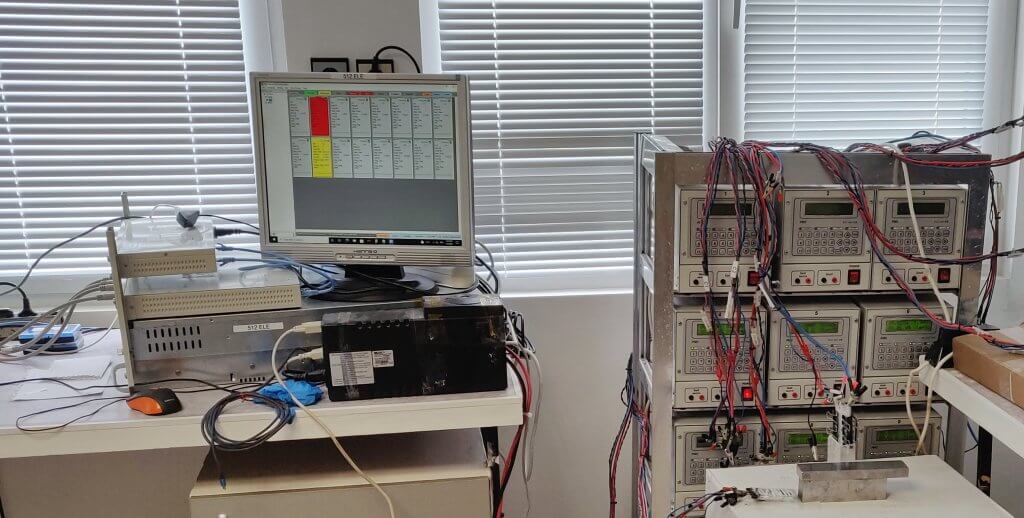
At the French research institute of CEA-Liten, a new non-destructive and non-intrusive characterization techniques was proposed by researchers for lead batteries. Consisting of installing two piezoelectric transducers on the surface of a battery and studying the transport of ultrasonic acoustic waves, the research obtained an accurate and direct estimation of the state of charge and could be used for better management of advanced lead batteries.
In the University of Southampton, the advancement of lead batteries has been a key topic for researchers, particularly focused on redox flow lead technology. Relevant to utility-scale energy storage and load levelling applications, this research demonstrates the continued need for innovation amongst all battery technologies to meet heightened demand for reliable energy storage.
With the aim to accelerate the transition to sustainability and decarbonisation, the FAAM Research Center, the R&D aim of Seri Industrial S.p.A. in Italy, this collaborative program focuses on the development of lead technologies, amongst other types of batteries.
A multi-disciplinary project led at Imperial College London looks to the end-of-life stage of lead batteries, focusing on the design of energy-reducing, economically competitive, electro-hydrometallurgical strategies for recycling. One of the biggest advantages of lead batteries is the end-of-life recycling rate of almost 100% in Europe, and Imperial’s work is focusing on new ways to enhance the sustainability of the process.
Lead battery research is far-reaching in Europe, both in scope and results. But there always remains room for more innovation, so keep an eye out for the release of CBI’s new Request for Proposals that will outline the areas of research we’re looking for to drive our next Technical Program.
In the words of the United Nations, both science progress and gender equality are fundamental achievements to reach the SDG Goals as part of the 2030 Agenda for Sustainable Development.
For this to become a reality, it is crucial to demonstrate the importance of having more women working in fields of science, and most of all to create conditions that empower and facilitate women to work in a sector traditionally dominated by men.
In 2015, the UN General Assembly declared February 11 as the “International Day of Women and Girls in Science”, as a way of fostering change in this field and turning these below stats around:
UN data from 2021
In this case, and like in any other sector, combining the strengths of all genders in the workplace can only create more space for better ideas, innovation, and progress in science.

Why is it so important to value women in science, but also in our industry in particular?
To better understand these issues and to see how they can be applied in our own industry, CBI spoke to four women who work in the global lead battery industry as researchers: Sibel Eserdağ (R&D Division Manager in Inci GS Yuasa), Sophia Bauknecht (Engineer at Technische Universität Berlin), Begüm Bozkaya (Technical Manager at CBI) and Maria Penafrancia Roma (Technical Collaboration Leader at Advanced Battery Concepts).
The idea was to show their perspectives, as women who work in mostly male environments, but more than that, to demonstrate why they are still working for the industry, why they believe their talent is crucial for it and why do they invite more women to join them in this challenging world.
According to the previously mentioned data, “women represent only 33.3% of all researchers” but considering the technological growth and the urge for progress and innovation in science and research, our group of four women agreed that is absolutely “crucial” to have more female researchers. Not only because of gender equality issues, but also due to the fact that it can bring more diversity of thinking which can only enrich the working groups, their talents and potential to do better things for the industry.
Sophia shared her thought:“that only with a higher number of female researchers it is possible to fully use the existing innovation and talent potential within a research area” and Maria noted that an “increased number of female researchers worldwide means that women with equal or even better capabilities are being given more opportunities now than in the past”. This will hopefully have a significant impact on other areas of the world, she continued: “this will mean that low and middle-income countries will see more women working on scientific and technological issues that can uplift their quality of life. Diversity and statistics will always lead to more revolutionary ideas that can change the world”.
What do women bring to science and to our industry?
According to Begüm, in many research areas “women face new challenges to meet the goals and targets in all levels of science”. Therefore, there’s a common “need” to provide a broader range of understanding and creativity:
“Encouraging the participation of women is essential, as men and women bring different perspectives to research and innovation. The diverse research groups in both academic and industry should combine various skills and abilities”.
But let’s be clear, “women can generate the same ideas and deliver similar results as any other gender in the room”, continues Maria. However, “there is a dearth of examples of this happening in the lead battery industry right now”. As Sibel highlights “like men, women bring their passion, patience, hard work and energy to the science and industry. But the important thing that women bring to science and industry is “diversity”:
“The lead battery industry seems to be a male-dominant industry from the outside however, it is proven by many articles and researches that diversity leads to innovation, so for innovation, industry and science we need more gender-balanced workforce.”
One thing is for sure, there’s a lot of admiration amongst women within the industry as they bring not only the obvious empowerment to each other, but also their perspectives, different backgrounds, skills and visions that add “a considerable value” to the industry, according to Sophia.
So, what advice would you give to a young female researcher starting/considering a career in the lead battery industry now?
We could not end this article without mentioning and promoting other women who are relevant references for our interviewees such as Dr. Kathryn R. Bullock, “whose vision, research and leadership led to revolutionary changes in the lead battery industry. She was a giant among men and the only female recognized by the Gaston Plante Award Committee in its 32 years of existence” (mentioned Maria) and Dr. Julia Kowal, a professor at TU Berlin who is “highly engaged in many committees to represent women in every aspect. She is carrying this additional workload to support other women in their academic career” (stated Sophia).
It's February 2022 when the “International Day of Women and Girls in Science” happens and CBI would like to celebrate every talent who is aiming to be a part of this exciting future for research and innovation, especially in the lead battery industry!
A 2021 White Paper commissioned by CBI indicates that using lead batteries for high-rate DC to DC electric vehicle charging will be technically and commercially viable. This project has caught the attention of the State of Missouri, Missouri Gas & Electric and the Missouri University of Science & Technology. Their plan is to install several prototype systems in local Missouri gasoline stations. An RFP has been issued to for companies willing to design and build these first prototypes.
Fueling these plans is the need to provide accessible charging for EV buyers. The US auto industry has determined that a “hypothetical barrier” stands in the way of increased EV sales. The industry believes that greater EV adoption depends on an improved charging infrastructure in order to alleviate car-buyers' drive-range anxiety. And unlike the network of “super charging stations that Tesla had the foresight to install all around the world, other EVs are lacking in their ability for fast-charging. A Tesla super charger can take a discharged Tesla to about 80% state-of-charge (SoC) in less than 30 minutes. This “super charging” ability gives the Tesla driver a secure feeling when embarking on a long trip.
Other EV drivers are relegated to using lower power charging stations at hotels and parking structures, but these lower power chargers can take upwards of 4 hours to get the vehicle battery to 80% SoC. Not a good situation.
In a recent announcement, California governor Gavin Newsom is not only proposing that every new car sold in California by 2035 be electric or zero emission but is also supporting legislature that new homes be equipped with EV charging capabilities. The article by Plastics Today also quotes a Reuters report that fast chargers are very expensive and typically cost ~$100,000. Such systems are also expensive to operate due to high cost of electric power and demand charges.

CBI has written about the critical role of advanced lead batteries for the electric vehicle revolution by powering safety features on-board EVs. The potential for the technology to be the battery powering EV charging stations is another significant opportunity.
The time is ripe in California, and indeed the rest of the world, to adopt and install High-Rate lead battery-backed DC to DC charging systems as proposed by the CBI White Paper. As countries and their auto industries scramble to expand their BEV charging infrastructures and advance electrification and decarbonization agendas, lead battery industry has a huge opportunity to play a key role in this charging infrastructure expansion.
The window of opportunity for lead battery manufacturers to form partnerships, design prototypes and submit proposals to be a part of this electrification expansion is open now. Change is coming and our industry should be part of it!

By Dr George Brilmyer, Batt-Tek Consulting, LLC and member of CBI's Expert Panel
The shift to a low carbon future is heavily invested in both renewable energy and low-emission vehicles such as EVs. And in an exciting partnership announced by CBI member Advanced Battery Concepts, they’re bringing both solar energy and EV charging together.
Chosen to supply their innovative, bipolar lead batteries for GreenCore’s charging plazas across the US, ABC will manufacture and supply the energy storage systems using their patented GreenSeal® technology for an estimated 10,000 Solar EV Charging Plazas by the end of the decade.
Enabling GreenCore to harness solar energy generated on site, ABC’s lead storage batteries provide faster recharge, higher power and increased cycle life compared to conventional storage batteries. Combined with high recycling rates and domestic manufacturing, the technology is tapping into the greater demand for domestic energy independence in the US.
As the growth of the EV market continues, with global sales increasing by 39% in 2020 alone, the demand for reliable, renewable, and widespread fast-charging infrastructure is booming.
Read more about the exciting partnership between ABC and GreenCore here. Originally published by Advanced Battery Concepts, LLC.
From CBI-funded projects to university collaborations, advanced lead batteries are a technology embodying Europe’s drive for innovative technologies to deliver ambitious decarbonisation and electrification targets.
Creating synergy between academia and industry through battery research has been a cornerstone of CBI’s technical programs. In a project underway at Fraunhofer ISC, they’re working with Ford’s Research and Innovation Center, TU Berlin and Moll Batterien to improve regenerative braking performance in hybrid cars.
This critical market, including micro-hybrids which are predicted to represent over 80% of new vehicles in Europe by 2030, relies on advanced lead batteries to deliver greater fuel efficiency and reduced carbon emissions. Specifically targeting Dynamic Charge Acceptance (DCA), the research is ensuring the most advanced lead batteries are used in vehicles, to support the transition to a low-carbon future.
In another project with Fraunhofer ISC partnering with Poland-based Wroclaw University, a research team is using tailor-made carbons and utilizing advanced physical and electrochemical techniques to study key performance indicators for lead battery technology. Specifically for micro-hybrid vehicles, this research is an important step in responding to market demand from Europe’s automotive sector.
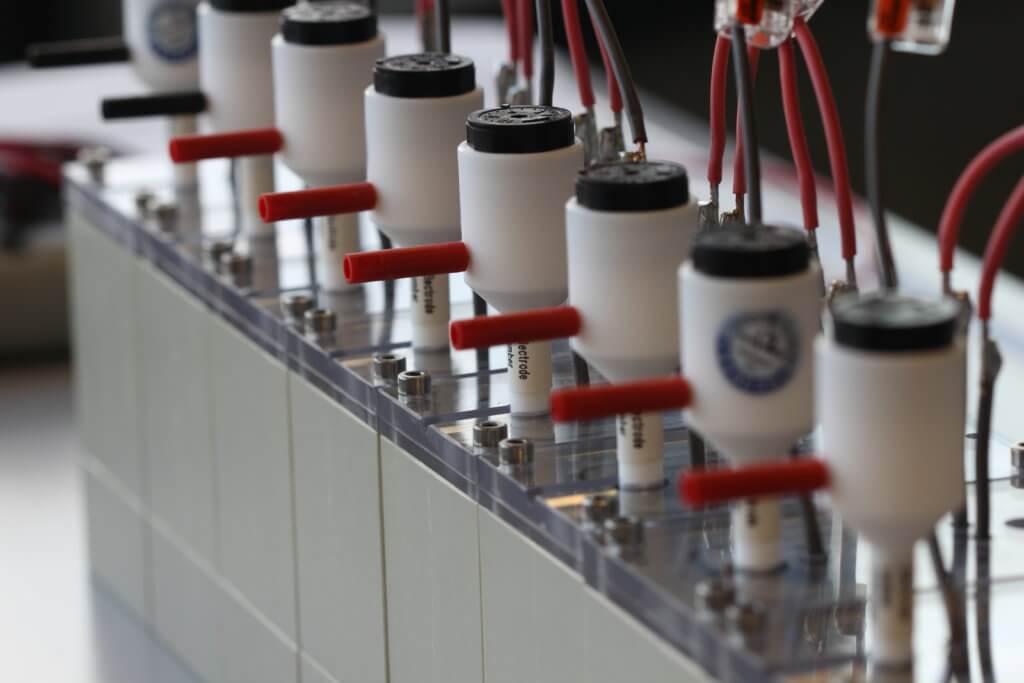
Transitioning now to the buzz words ‘energy storage’, CBI’s latest technical research program funded a suite of projects dedicated to the driving innovation in advanced lead batteries for this growing market. As the world shifts to cleaner sources of energy and the need for more reliable grids, battery energy storage research is essential.
In an ongoing project with Spanish research institute INMA and battery manufacturer Exide, high-tech neutron diffraction techniques are being used by scientists to gain a deeper understanding of the charge/discharge processes occurring in a lead battery. In a first-of-its-kind approach used to study the technology, the research will improve energy efficiency and the Partial State-of-Charge (PSoC) cycle life of batteries for energy storage systems (ESS).
Tapping directly into the new goals set out in CBI’s Technical Roadmap, this energy storage research is paving the way for advanced lead batteries to enhance their performance for renewable and utility energy storage.
A new university research partnership between the University of Warwick and Loughborough University will show how advanced lead batteries can support electricity grid energy storage and important low-carbon systems facilitated by renewable solar and wind energy.
Funded under CBI’s 2021 research program, the university collaboration is developing more advanced levels of modelling and prediction of lead battery behaviour for utility grid storage. The aim is to facilitate better battery management and higher uptake of lead batteries to support the energy grid.
This is just a snapshot of the innovation underway across Europe, all focused on advanced lead batteries. Europe’s climate change goals are driving enhanced research for battery technologies, and CBI with the EU lead battery industry and other university and research institutes partners are striving to ensure lead batteries remain one of the central players in this shift to a low-carbon future.
Stayed tuned for Part 2!
As the US shifts to greater levels of energy security, the role of batteries becomes ever-more important to underpin this transition. Used in a wide range of applications from vehicles to renewable energy, advanced lead batteries offer an advantage through the high rates of domestic manufacture and recycling. Combined with a big industry push for research and innovation into the technology outlined in CBI’s Technical Roadmap - to deliver enhanced performance across key technical parameters such as cycle life, energy efficiency and dynamic charge acceptance - advanced lead batteries are critical for powering the future.
CBI member Stryten Energy joins CBI’s guest blog to share insight into the unique blend of extensive domestic manufacturing infrastructure and unparalleled sustainability that advanced lead batteries have to offer.
Lead Batteries Will Help Power the Future
Renewable energy has many benefits, such as energy security through diversification of energy supply and reduced reliance on imported fuel. Energy generated by wind, solar and hydropower doesn’t produce greenhouse gas emissions, helping reduce air pollution.
As we consider the significant benefits of renewable energy, we also have to consider the current limitations. The sun may shine and the wind may blow today, but the next day may be overcast and calm. Continuous availability is the key, and reliable energy storage with advanced battery technology is the answer.
Proven History
Lead batteries have been in use for over 160 years. Their reliability has made them the most commonly used rechargeable battery technology for numerous applications.
Because of their relatively large power-to-weight ratio, lead batteries are preferred for starting, lighting and ignition (SLI) applications. Advanced lead batteries such as Enhanced Flooded Batteries (EFB) and Absorbed Glass Mat (AGM) enable start-stop technology in today’s vehicles and provide the additional power required by advanced safety features and modern conveniences.
In electric vehicle (EV) applications, lithium batteries are used as the propulsion source for the vehicle, replacing gasoline. However, almost every auto also carries a lead battery to power critical safety functions such as power steering and braking systems. Components like the lights, entertainment system and heating/cooling system also run on a 12-volt system, powered by lead batteries.
Lead batteries are also widely used for backup power supplies for microgrids, residential solar, telecommunications and utilities, for network operation centers and data centers, and even as backup power on nuclear submarines.
Domestic Manufacturing
Compared to newer battery technologies, lead batteries are inexpensive to manufacture. According to the Department of Energy, lead batteries have a lower capital cost of $260 per kilowatt hour (kWh) compared to lithium at $271 per kWh. Lead batteries also require three times less energy to produce. Lithium needs 450 kWh per 1 kWh, while lead is 150 kWh per 1 kWh. In other words, the energy generated to produce a lithium battery likely costs more due to its energy density.
Another important consideration is sourcing. While the U.S. is one of the leading producers of lead in the world, most of the lead and alloy materials necessary for manufacturing lead batteries come from recycling. Lead batteries manufactured in the U.S. typically contain more than 80 percent recycled material. Because of this domestic sourcing, lead battery manufacturers have a reliable supply chain minimally impacted by foreign trade disruptions.
Domestic manufacturing related to lead batteries has a significant impact on the economy. The U.S. lead battery industry enables more than 92,000 jobs. The salaries for these manufacturing workers are 28 percent higher than many other private industry sectors. Overall, the lead battery industry contributes $2.4 billion in government revenue, $6 billion in labor income, $10.9 billion in gross domestic product and $26.3 billion in total economic output to the national economy.
Looking Ahead
Major battery manufacturers and suppliers collaborate with researchers to reach the full potential of lead batteries and enhance battery performance efficiency. Battery life has increased 30 to 35 percent in the last 20 years. Lead batteries have a lifespan of up to 18 years, and some have demonstrated lives up to 30 years in standby applications.
A current goal is to reduce the weight of the batteries while increasing energy density. By doing so, lead batteries will become much more competitive with lithium. Research led by The Consortium for Battery Innovation is aimed at increasing the cycle life of lead batteries from 1,000 to 5,000, compared to lithium batteries at around 2,500 to 4,000.
Safety and sustainability are two important aspects as we consider the future of lead batteries. For the telecommunications and uninterruptible power supply (UPS) markets, the lower shipping costs of lead batteries will be an advantage. Lithium is considered a Class 9 Hazardous Material because it can overheat and ignite under certain conditions. Once ignited, the fire can be difficult to extinguish. For that same reason, lead is also preferable for energy storage in areas where the use of lithium batteries is restricted by fire marshals.
Lead batteries also have the advantage of a well-established recycling process. The recycling rate for lead batteries in the U.S. is 99 percent. Nearly 100 percent of lead can be recycled and infinitely reused with any loss of future performance capacity. By comparison, lithium batteries have a recycling rate of about 5 percent.
Conclusion
The transition from fossil fuels to clean energy will take time, much like we have seen with the automotive industry’s move toward electric vehicles. But there is also considerable opportunity. The renewable energy industry is becoming a major employer in the U.S, and the median hourly pay for these jobs is about 25 percent higher than the national average. By reaching a majority renewable energy grid, nearly 1 million direct development, construction, installation, operations, manufacturing, and supply chain jobs will be created.
While some companies are focused solely on newer technologies as a replacement for lead batteries, we believe that a wide variety of battery technologies are necessary to ensure that the power generated by wind, sun and water is readily available. Advanced lead batteries also have a role in the growing demand for energy storage solutions. Lead batteries offer a unique blend of extensive domestic manufacturing infrastructure and unparalleled sustainability.

Originally published by Stryten Energy
As part of CBI’s technical team, we’ve recently welcomed Begüm Bozkaya. With a BSc degree in Chemistry from the Middle East Technical University and an MSc degree in Materials Science from the Technical University of Munich, she gained extensive knowledge on the effects of carbon additives on negative plates for lead batteries, after using this as a Ph.D. research topic.
After working on several industrial projects for the past 6 years, Begüm joined CBI to gain a broader perspective on lead battery research as her role involves directly working with CBI’s global members from different companies and stages of the supply chain. She will be managing all of CBI’s European Technical projects as well as supporting CBI’s standards program.
According to her, CBI is doing what no one else in the industry is by “combining the knowledge from the industry and research institutes and collecting them in a non-competitive environment”. This means it’s possible to pool knowledge from a range of battery experts in order to advance lead battery technology for all applications, from energy storage systems to automotive.
As part of CBI’s team based in Europe, it is also important to look at the role of EU industry-research-academia partnerships in driving innovation. “We need to strongly defend the place of lead batteries. This is a well-established technology: we are cost-effective, recyclable, we have innovative research initiatives underway, and we’re committed to contributing to a cleaner future in the energy sector, especially to facilitate decarbonisation and support climate goals. It is vital that the EU includes all batteries in their future work plans”.
In that sense, the work developed by CBI through its Technical Roadmap has been essential to collect relevant information for lead battery applications and to help educate the audience regarding the future of this technology that has an enormous potential:
“If we can open new research topics and innovative ideas that can cover what we have in the roadmap, I’m sure lead batteries can still be considered a key player in the efforts to decarbonise, and developed further as a result. Research is the key point.”

When mentioning the new year and the developments that we can expect from advanced lead batteries, Bozkaya said that bipolar or advanced PbC batteries “can bring new research topics” for the industry and that these are “great candidates for EU initiatives”:
“There’s a bright future for advanced lead batteries and a lot of great research projects being developed as a result of CBI’s work, so I believe that in the near future we will be able to show even more how committed the industry is to Europe’s climate goals and, therefore be more involved with EU initiatives through lead battery research projects”.
For more information on CBI’s innovative technical program, click here.
2021 has been a highly successful year for CBI, with expansion across our research projects, membership, and team. CBI launched a new Technical Roadmap for lead battery innovation, secured substantial government funding for lead battery research and added several new projects to its core research program. There was also a significant increase in activities to improve the awareness of lead battery performance and innovation to stakeholders including end-users.
This year we welcomed 3 new staff members, strengthening our global team with additions for both Communications and Technical Program. Joana Coimbra, based in Brussels, has been a welcome addition in supporting the communications work underway in Europe. Dr Carl Telford, Research and Innovation Manager and Begüm Bozkaya, Technical Manager, joined later in the year and are working to support CBI’s extensive research program and drive for government and stakeholder funding.
These important appointments came during a busy time where CBI launched its new Technical Roadmap, dedicated to advanced lead battery innovation and research.
With the launch of new projects this year focused on energy storage, a significantly growing market for lead batteries and of critical importance on a global stage, CBI’s new Technical Roadmap built on the goals and targets set out during our launch in 2019.
The new Roadmap is extensive and covers every application space for lead batteries and demonstrates the key pathways for innovation and development for the technology to continue solidifying its path to deliver on the world’s electrification and decarbonization goals.
CBI didn’t just grow in team members this year. We welcomed 9 new members including Hyundai’s North American Technical Center, Stryten Manufacturing, Inbatec GmbH, Sorfin Yoshimura and ENTEK International.
Through the work of CBI in demonstrating the critical role of advanced lead batteries and the vast innovation potential for the technology, these are key drivers for our membership increase across the globe and we’re proud to work with our diverse members and partners to demonstrate the benefits of working with CBI.
With the end of the year came the return of some in-person events, with the team visiting Lyon, Brussels, San Diego and Phoenix for conferences and expos, and our North American Technical Workshop held in Raleigh, North Carolina
But one of the biggest events back on the schedule for next year, and co-organised by CBI with ILA, will be ELBC, the global lead battery innovation conference. Taking place next year on 6-9 September, this event will be the premier technical conference dedicated to lead battery innovation, bringing together 1000+ attendees from across the world.
With a world-class technical program, featuring experts and topics relevant to every part of the lead battery application space and value chain, look out for the launch of our Call for Papers, expo reservations and sponsorship opportunities early next year.
We see a strong future for advanced lead batteries. The work of our members is critical in this and we’re proud to support their work through our technical and communications initiatives. Next year will no doubt be even busier than this year, so keep an eye out for our new research Request for Proposals, updated lead battery market data and energy storage case studies, just to name a few.
CBI is pleased to announce the latest member to join the research consortium, ENTEK International.
For more than 30 years, ENTEK has been an innovator and leading world-wide designer and producer of highly reliable microporous polyethylene battery separators for lead batteries.
CBI is excited to work together with ENTEK and our global membership to accelerate the future of global energy storage.
For more information, read ENTEK's press release.
The ESA Annual Energy Storage Conference and Expo (ESACon21) took place last week from December 1 – 3 in Phoenix, Arizona with manufacturers, storage developers, investors, policymakers and many others from the energy sector gathered to discuss the latest trends and developments within this industry.
With the current US climate goals centered on reducing 50% of carbon emissions by 2030, the focus relies on the economy’s decarbonisation and sustainability creating opportunities for innovation and sustainable growth.
This was a great occasion for CBI to share its work towards innovation for advanced lead batteries, but also to discuss the future role of this technology in energy storage as the demand for batteries will only increase, according to the latest data from the US Department of Energy. This growth will offer significant opportunities for advanced lead batteries to provide battery energy storage on a mass-market scale and to help achieve climate goals.
Advanced lead batteries are already a critical technology used in a range of energy storage applications. From supporting smart grids and remote area power supplies to ESS for residential, commercial, and industrial applications, the high safety and reliability profile of the technology means there’s also great potential for transmission and distribution reserves and investment deferral with smaller systems.

CBI’s case studies, available on our interactive map, demonstrate this technology’s value and effectiveness across the globe. For instance, in Nigeria, local communities now have access to electricity thanks to solar microgrid installations powered by advanced lead batteries. In New York City a building’s power infrastructure is more reliable and better prepared for extreme weather events while reducing its carbon footprint, after being provided with a solar + storage solution using this technology. In Pennsylvania, lead batteries are being used for scale services to balance and smooth USA’s largest energy grid.
By sharing a range of these case studies and the Technical Roadmap, CBI was able to share with ESACon21 attendees the fantastic work and effort made by the global industry towards innovation, as well as the significant benefits of this technology for energy storage systems.
Watch our event video:
Beamline meets battery: scientists collaborate to study advanced batteries using neutron diffraction
Energy storage systems (ESS)
24 months
The project aims to gain a deeper understanding of the charge/discharge processes occurring in a lead battery using neutron-scattering experiments, to directly enhance the performance of ESS lead batteries.
This is a new approach which has never been used before to study lead batteries.
If successful, it will be able to be extended to explore other parts and processes of lead batteries.
Exide Technologies, INMA.
INMA have designed the first prototypes of a new lead battery, specifically intended for neutron experiments.
A range of characterization work and feasibility studies have been undertaken to optimize the prototype of neutron-scattering work.
The next step of the project is to conduct extensive neutron diffraction work to probe the fundamentals of lead batteries.
Using neutron diffraction and tomography, the growth and dissolution mechanisms of different active material species will be studied and evaluated under charge regimes relevant for ESS.
The new understanding is expected to improve the energy efficiency and the Partial State-of-Charge (PSoC) cycle life of batteries for ESS:
- This encompasses renewable energy applications such as wind and solar ESS, which typically require excellent PSoC performance.
The research underway ties directly into the new research goals of CBI’s Technical Roadmap, where improving cycle life and energy efficiency have been identified as a key priority research goals for ESS lead batteries.
Power Technology, a leading energy publication, includes CBI on shortlist for Sector Excellence Awards – Batteries & Storage

For the first time, CBI has been nominated for a 2021 Excellence Award, announced by a leading global energy publication, Power Technology.
Included in the Batteries & Storage shortlist as part of the Sector Excellence category, CBI’s work in battery research and innovation has placed us alongside other battery and storage leaders such as Tesla, Hitachi and Engie.
With our recently launched Technical Roadmap, CBI is a driving force for global innovation for advanced lead batteries, a critical technology underpinning the global shift to greater levels of decarbonization and electrification.
Recognizing the soaring demand for battery energy storage worldwide – from use in clean energy projects to e-mobility – CBI is paving the way for the next generation of advanced lead batteries through our scientific research program.
Find out more about our work here, and about this year’s Power Technology Excellence Awards.
The 4th edition of EASE’s Energy Storage Global Conference took place last week (19 – 21 October) in Brussels and online. With the support of the European Commission, the event provided three days of talks and discussions around the future of energy storage, its current market, policy frameworks and the latest trends in technology.
For the opening session, Maroš Šefčovič, Vice-President of the European Commission for Interinstitutional Relations and Foresight, spoke about the key role of energy storage and batteries to achieve climate neutrality by 2050, while highlighting its increasing demand to answer the new targets for renewable energy and carbon emission standards.
Šefčovič mentioned the importance of innovation and competition to keep investing in current technologies, improving performance and using advanced materials: “Europe must invest, not only in improving existing solutions but also in developing next generation breakthrough technologies”.
EASE’s President, David Post, also predicted battery storage of 7.7TWh by 2030 and highlighted the importance of supporting all technologies.
The last day of the conference was focused on discovering the latest cutting-edge energy storage technologies and CBI’s Research and Innovation Manager, Dr Carl Telford, spoke in a session dedicated to “Electrochemical and Electrical Energy Storage”, presenting the work that CBI has been developing through research and innovation for advanced lead batteries.
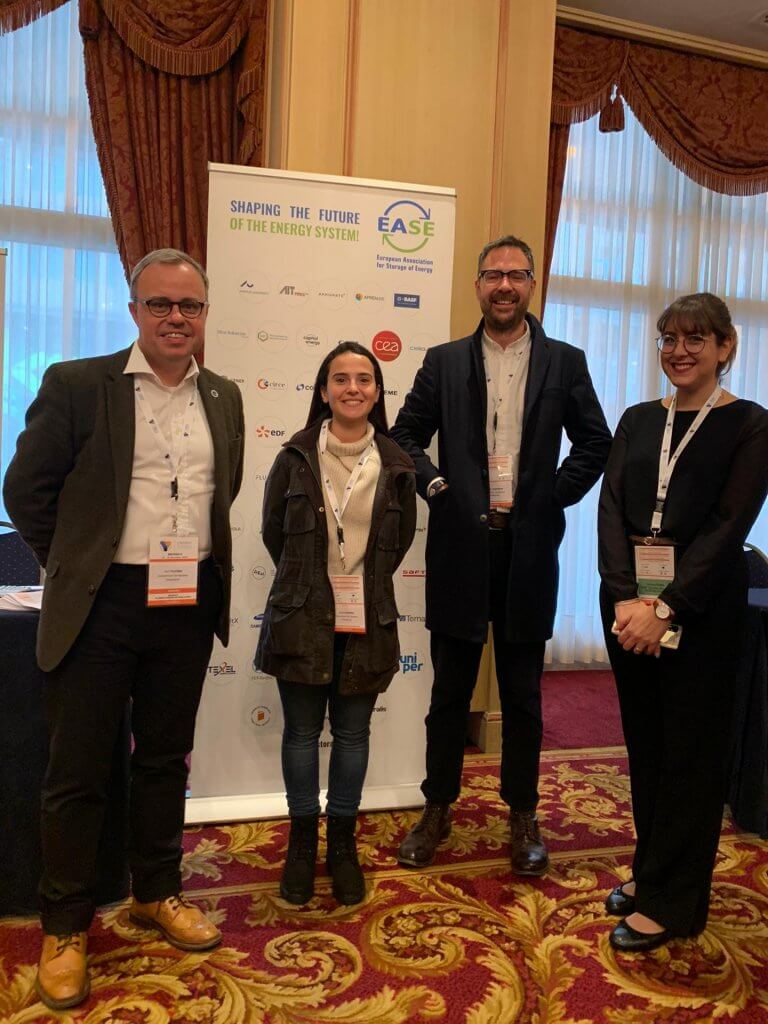
CBI's 2021 Technical Roadmap was presented to illustrate how constant performance improvement and technological advances can create limitless opportunities for the lead battery industry to help achieve global electrification and decarbonization targets.
While navigating through Europe’s funding landscape and showcasing European energy storage case studies using lead batteries (with Exide Group and Systems Sunlight SA), Dr Telford explained the challenges that the industry might face when applying through a “very complex” funding system, but also concluded with an optimistic note on the amount of opportunities that exist for energy storage and batteries in terms of public funding, proving that these are indeed necessary for the future:
“When considering the EU’s high-level goals, the speed of action required to mitigate the climate crisis, it is crucial that all energy storage solutions are not only available for deployment, but also encouraged”.

During a two-day workshop sponsored by CBI, a group of experts from car manufacturers, sensor and software suppliers and battery companies met to discuss future safety-relevant applications of automotive batteries. Whenever safe operation of a vehicle relies on 12V power supply, for example in steering, braking, driver-assistance or autonomous-driving functions, battery diagnostics is essential for Functional Safety (FuSa). The workshop focused on physical verification methods for Safety State-of-Function (SSOF) battery diagnostics.
Following a series of virtual meetings in the last several months, the in-person meeting held in Paris on 5-7 October began by identifying several key focus areas:
Over the past six months, members of the SSOF group have shared their perspective on the industry allowing for a common perspective on the current state-of-the-art for 12V auxiliary batteries not only in conventional vehicles, but also in battery-electric vehicles.
The use of lead batteries in electric vehicles is a key application with significant future opportunities, as identified by the recently launched CBI Technical Roadmap.
A major step in this collaborative effort, the meeting in Paris represented a milestone in recovery from the restrictions imposed by Covid-19. For all of the participants, it was the first time they had met in person outside their own organizations since lockdowns were imposed, and the first time many had met each other in person.
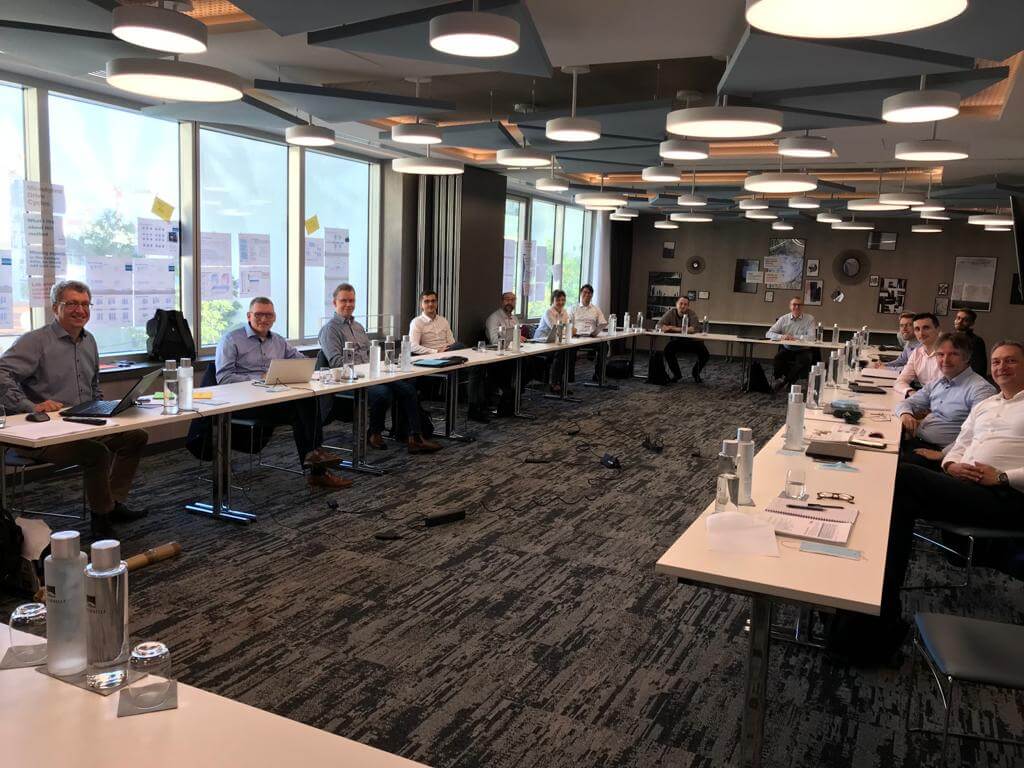
The meeting was chaired by Dr Eckhard Karden of Ford and attended by 18 experts from car manufacturers, sensor and software suppliers to the car manufacturers, and battery companies, with others joining virtually. So far, subject matter experts from 4 car manufacturers, 4 electronics suppliers, and 6 battery companies have been actively contributing to the group.
The purpose of this working group is to facilitate pre-competitive collaboration to harmonize the diagnostics for 12 V lead battery systems. This work is relevant for both for 12V main batteries which provide safety critical functions for vehicles and for auxiliary batteries (also known as low-voltage EV batteries) which provide secure power supplies for all types of vehicles including hybrid and pure electric vehicles.
The in-person meeting helped accelerate the continued harmonization effort, allowing for productive planning for key topics. The discussions covered the methods of diagnosis and the relevant fault conditions that need to be considered in order to ensure the battery is always able to meet the required duty cycle in a critical incident.
Furthermore, it was considered that an industry-wide database should be created with measured raw data from batteries in different conditions and with different ages for use in SSOF verification.
The workshop was successful in bringing together an important group to ensure batteries and the associated diagnostics are correctly specified for these automotive applications.
Interested in finding out more about CBI’s work in the automotive sector?

Read our guest blog featured on the World Economic Forum (WEF), covering the essential role of lead batteries for the safety of the world's electric vehicles (EVs).
CBI's Chairman, Dr Christian Rosenkranz from Clarios, shared his thoughts on low-voltage EV batteries with a special focus on Europe, as a critical technology for Europe's Green Deal ambitions.
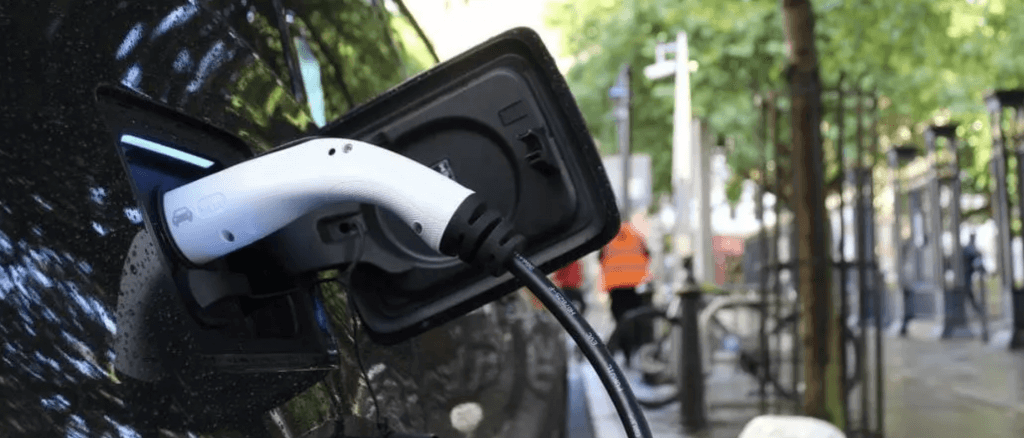
On October 4, CBI brought together a digital panel to discuss the critical role of batteries for Europe’s sustainable transition. As part of Europe's Sustainable Energy Week, supported by the EU Commission, the virtual event provided an open discussion around the importance of a level playing field amongst technologies in Europe and featured European case studies where advanced lead batteries are providing reliable, recyclable and safe energy storage.
CBI’s Research and Innovation Manager, Dr Carl Telford, opened the event by showcasing our recently launched Technical Roadmap, to illustrate that “sustainable economies need batteries”. If policy makers want to solve the problems of climate change and pollution, while moving from a linear to a circular economy, then industries will “need a proper deployment of battery technologies and energy storage”, and this is where Europe’s lead battery industry plays a key role.
From Exide Europe, Holger Fricke, Director Basic Research R&D EMEA, presented the benefits of Exide’s “on-site solar installation in Portugal”, that combines lead battery energy storage with renewable energy. Carbon emissions were reduced by more than 20% and energy management was improved, turning this case study into a real-world example of decarbonisation, with the installation facilities now being used as a showcase.
Peter Stevenson, Senior Technical Co-ordinator at GS Yuasa, joined the event to discuss the importance of hybrid solutions for Europe’s sustainable energy future. Using an example of the “world’s first container of dual chemistry energy storage system”, he highlighted the “complementarity and flexibility” between lead and lithium battery technologies.
While moderating the panel, Patrick Clerens, Secretary-General at EASE, reflected on the need of a level playing field between different technologies and stated that “no one can pick a technology winner”. Europe needs more batteries and new battery technologies, including hybrid ones, and through this it is possible to have “the best of both worlds”.

There are already some EU industrial and research initiatives going on to demonstrate how batteries can work together to reach the energy demands, such as the European Battery Alliance, Batteries Europe, Batteries 2030+ or IPCEI's. However, it remains important to share the message that a wide array of energy storage and battery technologies are needed to address the flexibility requirements and support the energy transition and the EU green goals, including lead batteries.
By the end of the discussion, it was clear that other industries can learn from the lead battery experience since it’s a well-established industry that represents a major example of circularity in Europe. Through research and innovation, enhancing the performance of lead-based technologies will be essential for Europe’s sustainable energy future and create further opportunities for synergies with other chemistries.
Watch the video of the event:
Download the presentations from the event below:
For the first time at the Batteries Event, held in September 2021 and organized by Avicenne Energy, there was a dedicated session for lead batteries. This is another major step for the industry demonstrating how this technology continues to evolve and is key to the current discussions within the energy sector.
Co-organized by CBI and EUROBAT, the session ‘Driving sustainable growth through LEAD BATTERY innovation’ brought up significant topics such as decarbonisation, circular economy and the work of the lead industry to upgrade and innovate for current applications such as clean energy and e-mobility.
Opening the session was EUROBAT’s Director Communications & Stewardship, Gert Meylemans, who noted that both lead and lithium will still be the dominant chemistries in the next decade.
Focusing on the numbers, lead-based technology will remain almost exclusively the preferred technology for 12V automotive applications, while continuing to be the dominant technology for UPS applications (Uninterruptible Power Supply) providing 90% of global demand and increasing by 5.5 GWh by 2030.
Our very own Research and Innovation Manager Dr Carl Telford introduced our recently launched Technical Roadmap to the audience and explored the funding opportunities for the industry within the EU.
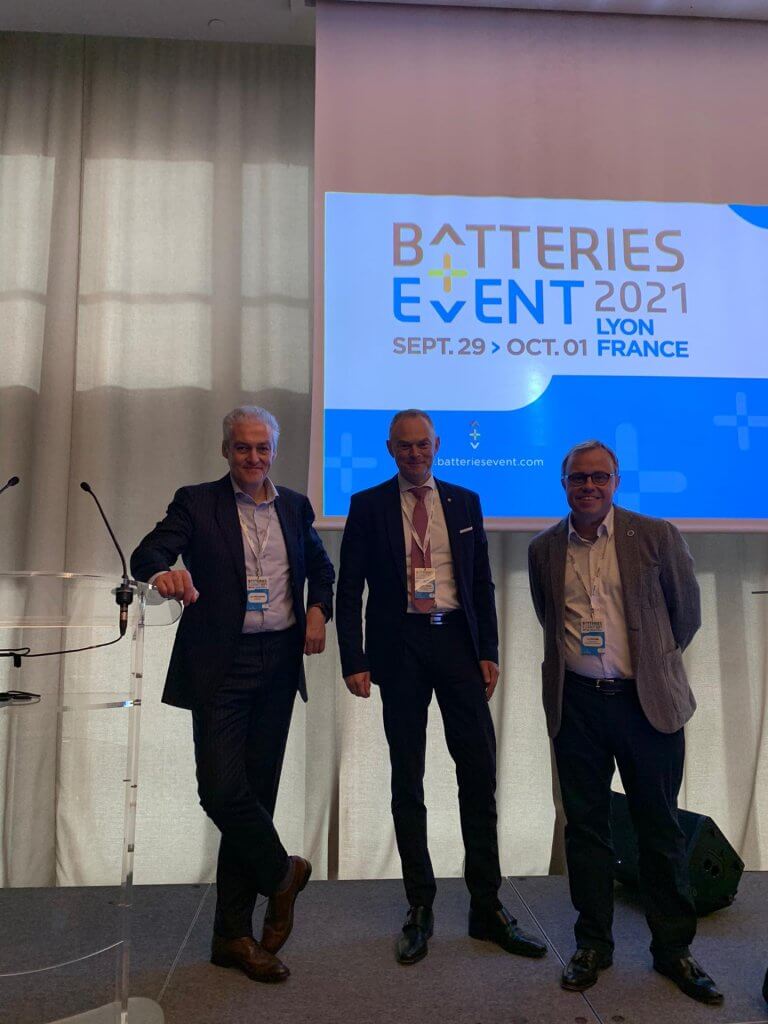
CBI’s new Technical Roadmap is an expansive document setting out key research priorities for the industry for all applications using lead batteries. With a special section dedicated to energy storage systems solutions where lead batteries play a major role – from utility and renewable energy storage projects to hybrid solutions – the opportunities to enhance lead batteries through research and innovation have huge potential.
Dr Christian Rosenkranz from Clarios (also CBI’s Chairman) explored both CBI and EUROBAT Roadmaps, highlighting the “strong innovation potential of all battery technologies” and their contribution to the EU Green Deal, Fit-for-55 and net-zero pollution goals, as they:
To conclude this fantastic session, Dr Bernhard Riegel from HOPPECKE explored the innovation potential of electrochemical storage systems for industrial applications, an “ongoing process” for established technologies. High recyclability, low investment cost and low safety requirements were pointed out as the main advantages of the lead-based technology for the upcoming years.
The Batteries Event 2021 has ended but our work is now more exciting than ever with all the future opportunities for the technology and the innovation to come, driven by CBI’s Technical Roadmap.
On September 15, the EU Commission’s President made a State of the Union speech highly focused on the future: from investing in 5G, to improving research and innovation and making sure that Europe will reach the EU Green Deal goals. Ursula Von der Leyen pointed out some of the key aspects that rule our work at CBI and our dialogue with our members and companies from the industry.
Through NextGenerationEU, the Commission is committed to “invest in 5G and digital skills” as the demand for faster and more efficient networks increases, along with the explosion of AI, EVs and many other real-time autonomous applications.
“To ensure uninterrupted access to these services, telecoms and data centre back-up demand will increase exponentially” and this is where lead batteries have an important role. As the main option for the “uninterruptible power supply (UPS) energy storage needed for data centres and network rooms” representing 90% of global demand, lead batteries are a critical player for Europe’s digital transition.
But let’s not forget about the role of this technology for hospital back-up applications, incredibly relevant during the COVID-19 pandemic, by “ensuring uninterrupted power supplies”. In Italy and in the UK, FIAMM’s provided safe and reliable lead batteries to support hospital power.
Another wish from Von der Leyen is to achieve “European tech sovereignty”, which also includes the ability to supply the entire value chain in many highly demanded technologies, such as EVs, hybrid vehicles or renewable energy storage systems. CBI recognizes that all batteries are needed to give Europe the faculty to attain green goals and, as we invest in research and innovation for advanced lead batteries and work with world-class institutes, we are here to say that this technology is a critical player in the green transition by offering “high-performance, reliability, safety and a sustainability profile including almost 100% recycling at end-of-life in Europe”.
We are demonstrating that lead batteries can make EVs safer, that our members are involved in clean energy storage projects contributing to decarbonization and that this technology is a great team player when collaborating with other batteries and using the best of both chemistries for a more efficient outcome.
As the urge for a fair green transition and a cleaner energy society increases, CBI believes that the actions to reach 2030 goals must be taken now and that the potential and opportunities for advanced lead batteries are limitless:

This year is set to be the Year of Rail in Europe and the EU is also currently celebrating its Mobility Week.
In fact, there are many reasons to keep investing and improving this sustainable, innovative and fast transport mode. Not only does it add value from an economic perspective by contributing to the EU Green goals for 2050 while creating jobs and growth (note that: only in 2015, the rail sector employed directly 577,000 people according to an EU Commission's report ), but it also has a social impact by connecting people from all member states through seamless rail networks and reducing distance when it comes to commuting.
Therefore, thinking about the future of Europe’s Rail industry also leads to the future of its sustainability in our society - possible to develop through research and innovation.
In a recent article by Dr. Bernhard Riegel, Director of Research Development at battery systems provider for train operating companies, HOPPECKE Batterien GmbH & Co. KG, he notes that lead batteries are still the most widely used technology in Central Europe for supplying power to the onboard electrical systems of trains.

In the article featured on Charge the Future, Dr. Riegel discusses the unique blend of benefits offering by lead batteries for rail applications. At moderate temperatures they combine low maintenance requirements, reliability and low lifecycle costs. In many European trains, lead batteries are used to protect onboard power supply systems. Whether they provide emergency power supply for passenger cars, start the diesel engine for diesel locomotives or are used for direct drive, lead batteries play an essential role for rail.
CBI’s « rail road » to keep supporting research and innovation for lead batteries in order to significantly contribute to the EU green goals and future climate objectives of our planet, is linked to the knowledge that lead batteries have a tremendous potential to innovate and be used in many different applications in a highly sustainable, economic and safer way.
Dr. Riegel, also highlighted the growth potential of lead batteries in this and other sectors, from providing uninterrupted power to hospitals and back-up to telecoms and stabilise grids, to backing up renewable energy supplies and supporting hybrid and electric vehicles.
As we celebrate the EU’s mobility week, we recognize the many ways lead batteries are powering low-emission mobility and contribute to Europe’s low carbon future.
Wim De Vos, CEO of Campine, joins CBI's guest blog to share his thoughts about the importance of lead batteries and research to reach the EU's green goals.
We are currently in times where many raw materials are scarce and logistics from other parts of the globe are expensive. The only battery technology material that gives Europe security is lead.
When discussing Europe’s energy transition goals - involving the electrification of vehicles and generating more energy from renewable solar and wind power - we cannot avoid talking about batteries. Demand for all types of batteries during the next decades is growing rapidly as we are using more and more electric devices, including electric vehicles (EVs), and increasing the level of energy storage for utilities and renewable projects.
Europe will need metals to produce all these different batteries, however, many of them are becoming scarce and more expensive to import, with the cost of container shipping from Asia to Europe increasing by 4x compared to 2020.
In the end, we will have to make sure that we have enough materials to fuel both battery production, and our path towards a greener society. So where do lead batteries fit in to providing the solution?
Lead remains the main battery technology for automotive applications, such as start-stop and micro-hybrid vehicles. Lithium-ion batteries are the primary batteries for EVs, increasing the demand for the metals needed to produce these, but lead continues to play a critical role as low-voltage EV batteries. When it comes to choosing the best technology to achieve the EU’s decarbonisation goals, there is a clear role for all battery technologies to play their part based on their strengths, such as weight, cost, and the performance of the battery.
Nevertheless, if we focus on sustainability and circular economy goals, lead is the only battery technology that is truly “circular”. A new lead battery in Europe is made using 80% recycled content, with nearly 100% of lead batteries collected and recycled at end-of-life. This circularity is far ahead of other battery technologies.
To really consider sustainability, we need to look at the complete supply chain.

The importance of research and innovation
To make sure that the clean energy transition is achieved, Europe should use as many lead batteries as possible, and increase investment in research and innovation for this technology.
The lead battery has been the mainstream technology for many years and for the past two decades a lot of things have changed for the industry, especially with the rise of alternative chemistries like lithium.
CBI has been an important driver for industry research and innovation, to continue the development and advancement of lead battery technology to meet the demands of the EU’s green transition and need for batteries, underpinned by a mature and circular industrial base.
Therefore, it’s extremely vital to invest money, time, people and “brains” into the work of CBI to develop advanced lead batteries that can compete in the evolving market, by being cost-effective, more efficient, more sustainable and, especially by contributing to the circular model.

National labs remain a critical player through which the U.S. lead battery industry is leading the way in battery innovation. Through the first-of-its-kind Lead Battery Research Science Program (LBSRP) at ANL, this program has been a key catalyst for improving understanding of lead battery technology.
For over five years, a complement of scientists from the Chemical Sciences and Engineering Division (CSE), Materials Science Division (MSD) and Advanced Photo Source (APS) have been actively studying lead battery fundamental processes governing DCA, lead sulfate mechanistics, and failure modes under representative duty cycles.
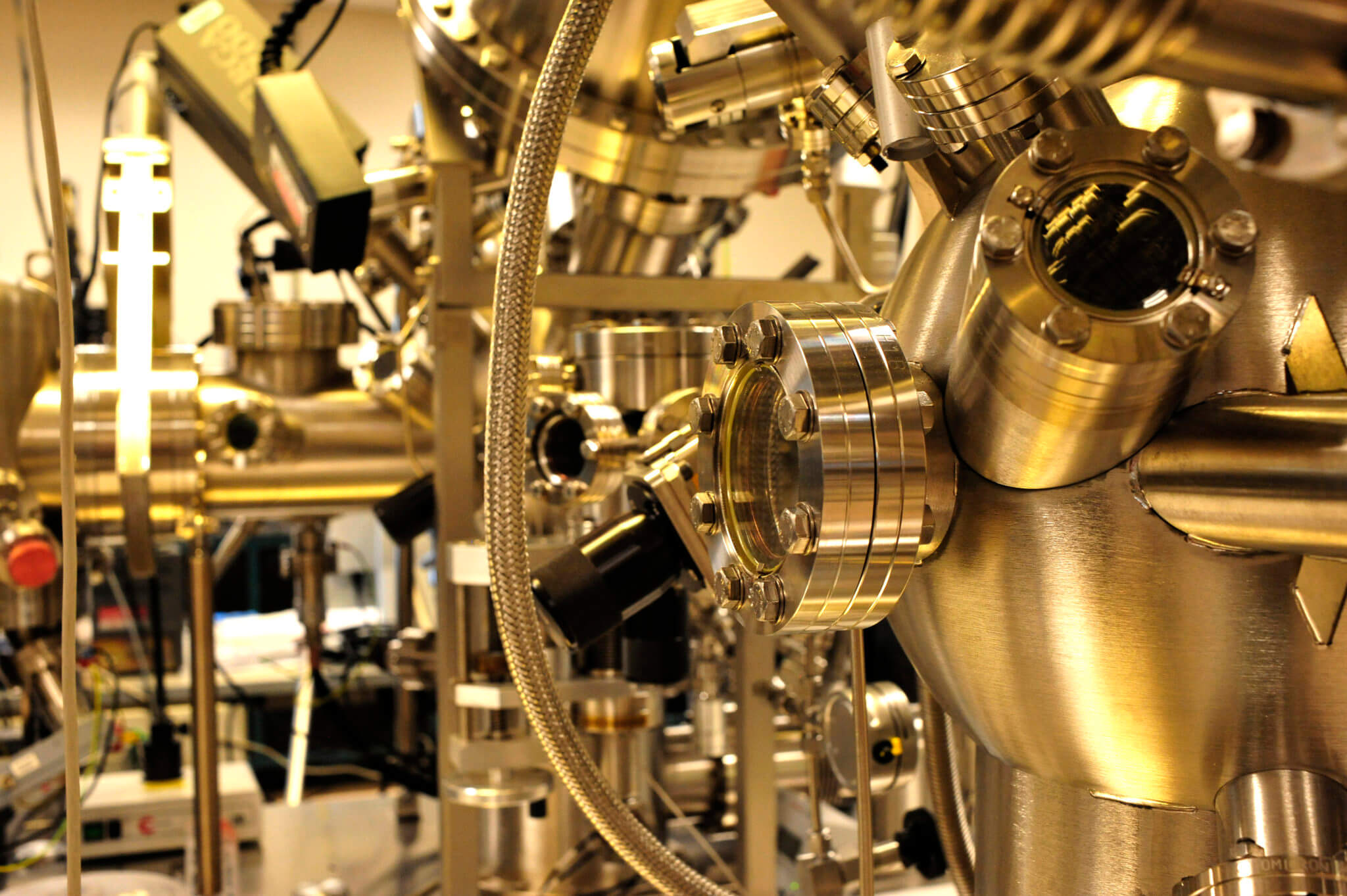
The research program, which involves 90% of the North American lead battery industry, has capitalized on the scientific excellence of both the industry and the national lab structure, demonstrating a great model of how productive these collaborations can be and the opportunities to engage with government labs to deliver next-generation batteries.
Under the umbrella of the U.S. Department of Energy (DOE), several different testing and application-specific efforts are underway at different national laboratories. At the Pacific Northwest National Laboratory (PNNL) there are twin testing efforts underway: one focused on the safety and reliability of batteries in energy storage systems (ESS) applications and another testing innovative new battery type performance.
In both projects, advanced lead batteries using bipolar configurations, novel electrodes and other innovations are currently being studied.
In addition, a PNNL team is currently studying a new electrolyte system in conjunction with lead-based electrodes, probing how alternative electrolyte chemistries can maximize the inherent electrochemistry in acidic lead systems.
In Golden, Colorado, the National Renewable Energy Laboratory (NREL) is conducting novel testing and evaluation for five different lead battery systems in behind-the-meter storage (BTMS) for EV fast-charging.
The spectrum of advanced lead batteries tested in this study are serving as a benchmark group with the ongoing data collection paving the way for demonstrating how these systems would be used in the future.
Specifically geared towards EV fast-charging demand reduction, this unique application is presenting exciting future opportunities for lead batteries to play a pivotal role in the transition to e-mobility.
The role of universities and national labs are critical for the cutting-edge research underway in advanced lead batteries. These partnerships open up future market opportunities for the technology to be a central player in the move to a low carbon future with higher levels of electrification.

There is an innovation wave underway in lead battery technology. In universities and national laboratories across the U.S., research projects are opening up new pathways for understanding and enhancing the performance of lead batteries.
As the current administration moves steadily towards a low-carbon future, through ambitious programs accelerating new energy storage technology development, and demonstrated through the pledge to cut carbon emissions in half by 2030, lead batteries have a vital role to play.
In a CBI project with UCLA, in-situ TEM of lead battery electrodes is depicting expansion and growth processes of the active material via real-time imaging. This kind of scientific insight is shedding new light into failure modes of lead batteries, working towards providing a deeper understanding for how to optimize the battery for grid energy storage and low-emission vehicles.

In Minnesota’s University of St. Thomas, pioneering research is underway into microgrids utilizing lead batteries. A critical application in the shift to reliable and renewable energy, microgrids are booming in demand across the U.S. and further afield.
With studies taking place in the dedicated St. Thomas Center for Microgrid Research, the microgrid features a 125 kW/396 kWh lead battery system, a 48 kW solar array and the capability to emulate different electrical sources or loads using state-of-the-art electrical power research equipment. With its connection to the grid, the facility is helping to both develop technology and train new engineers to shape the future of energy.
Battery improvement from a systems level is being studied by the CALCE Battery Team at the University of Maryland, focusing on lead batteries utilizing a complement of modelling techniques and battery management research. The aim is to improve the lifetime of lead batteries and other forms of electrochemical storage, a key technical parameter for utility, renewable energy storage and automotive applications.
A cross-disciplinary team at Columbia University are studying smart charging algorithms and machine learning methodologies in lead battery packs. This kind of research is invaluable, and the improvements are being applied directly through a CBI research collaboration with Electric Applications Incorporated (EAI) using novel charge control methods to maximize lead battery string life.
Over the last three decades, CBI’s research program has focused on many different components in lead battery electrodes, including expanders, which are vital for performance. In the newest project to be launched between U.S.-based research teams and the lead battery industry is a collaborative effort with the University of Toledo and Argonne National Laboratory (ANL).
Organized by the American Battery Research Group in an effort geared towards maximizing energy throughput and charge acceptance in lead battery electrodes, it will involve designing, producing and testing new organic expander molecules.
Universities are just one of the scientific sectors to be focusing their research efforts of advancing lead batteries for the evolving technical demand of booming industries such as energy storage and low-emission mobility.
Our next blog in the innovation series will feature the pioneering scientific research underway in collaboration with U.S. national laboratories.

When the French inventor Gaston Plante discovered in 1869 that two lead plates immersed in sulfuric acid solution can reversibly store electricity, he probably did not imagine that he had given the world one of the most widely used and stable battery systems.
Today, 160 years later, the lead battery dominates more than 60% of the market for secondary power sources, with a market worth more than $30 billion annually.
Globally, there is a huge infrastructure and economy that supports the production and development of lead batteries including thousands of jobs and factories around the world.
What are the reasons for the success of the lead battery? First of all, it is safe, the terminal voltage is relatively high and it can deliver high power at discharge high currents. Another advantage is the low cost of production and the low total cost of ownership and operation. Last but not least, the lead battery is the most recycled consumer product globally. More than 97% of the components of the used lead batteries are reused, making this electrochemical system an integral part of the circular economy.
But innovation is necessary all technologies. And for lead batteries, an area of development is to tackle the low specific energy of the system.
Our research team at the Institute of Electrochemistry and Energy Systems at the Bulgarian Academy of Sciences (IEES-BAS) is exploring how to improve the energy and environmental performance of lead batteries. By enhancing these aspects, the lead battery will continue to be a core technology for the decarbonization aims of governments across the globe.

In a recently published paper by our research team at IEES-BAS, we look at the possibility to design a lead-air electrochemical system. The purpose of the study was to prove that the positive electrode in a conventional lead battery can be replaced with a gas diffusion electrode (GDE).
The main advantages of this approach are that the GDE increases the specific energy of the system by up to 52% while reducing the amount of lead used, thus making the battery lighter and more cost-effective.
Another advantage which makes the adoption of the new system easier is that the negative electrode is the same as the one used in conventional lead batteries. This means that the main current generation reactions remain the same.
Research and innovation are integral to the lead battery industry, and our work on this system will continue in order to improve the stability and reversibility of the GDE. We believe that this new reincarnation of the lead battery will open new possibilities for lead batteries to remain an important part of the energy storage landscape as well as to remain a leader in the circular economy.


The much-anticipated “Fit for 55” package released by the European Commission is the latest in a set of ambitious targets designed to ensure Europe achieves carbon-neutrality by 2050.
In a move designed to accelerate the reduction of greenhouse gas emissions, the package aims for a 55% reduction by 2030 through interconnected policies including those targeting energy and transport.
That’s where batteries come in. This is a unique opportunity for batteries to play a significant role in one of the most ambitious decarbonisation frameworks in the world.
The shift to focusing on more renewable energy generation and the grid resiliency and flexibility required as a result presents a chance for advanced lead batteries to directly support these energy needs.
To tackle climate change, energy storage is needed yesterday, not just by 2030. With existing supply chain and mature manufacturing capability, lead batteries can be deployed in large numbers, fast and sustainably.
Research underway led by CBI in Europe is already driving innovation in the technology directly focused on this area: plugging-in renewables and facilitating grid storage. With some of the leading universities in Europe and with partnerships in the US, this research will feed in to the next-generation advanced lead batteries needed to support Europe’s climate-neutral future.

With the ever-increasing move to hybrids and electric vehicles, advanced lead batteries continue to provide an essential on-board element for Europe’s e-mobility fleet. They’re also live and online across Europe providing reliable, sustainable energy for installations spanning community microgrids, solar farms for manufacturing plants, and utility grid frequency regulation.
A message that needs to resound in Europe is that all batteries will be critical for this shift. With different advantages for different applications, battery technologies are vast and diverse. And advanced lead batteries are one of the critical players offering high-performance, reliability, safety and a sustainability profile including almost 100% recycling at end-of-life in Europe.
Combining these attributes with the dedication to innovation from the European, and indeed the global lead battery industry, is setting this technology apart.
From enhancing cycle life, an essential parameter for renewable and utility energy storage, to improving dynamic charge acceptance, a vital part of what makes hybrid and electric vehicles cleaner, is where the industry is focusing their efforts for lead battery improvements.
The lead battery will be a significant player in enabling the EU Green Deal by making climate and circularity targets a reality, supported by research, innovation and collaboration across Europe to ensure the future has all the batteries it needs to succeed in the green transition.

With the energy storage landscape at a turning point in the U.S., the lead battery industry is stepping up to the challenge to meet the call by the Department of Energy (DOE) to accelerate the development and utilization of next-generation energy storage technologies.
This effort, part of a series of programs focused on energy storage innovation for utility services, is offering a unique opportunity for the lead battery industry to double down on research efforts to continue enhancing technology performance to support domestic energy storage demand.
The industry is already a step ahead with its domestic manufacturing and recycling capability – a $26.3 billion industry with battery end-of-life recycling rates of 99% - but innovation remains a driving force for lead batteries as future energy demand continues to soar.
The effort announced by the DOE represents a renewed focus on energy storage research and development and the Lead Battery Grand Challenge innovation roadmap, developed by CBI and Battery Council International (BCI), is answering the call.
Offering the opportunity for the lead battery industry to collaborate with the scientific excellence of the DOE, through national labs partnerships and research collaborations, our industry aims to deliver innovative, next-generation lead batteries for key energy storage markets.

From residential and commercial demand reduction to load response for solar generation, the opportunities are vast for lead batteries to provide a unique blend of benefits – safety, recyclability, reliability and sustainability – whilst delving into the untapped potential of the technology through specific research areas.
Increasing total energy throughput related to cycle life is a key area of improvement identified for lead batteries, building on existing efforts underway by CBI to enhance battery performance, such as the existing Argonne National Laboratory project.
Alongside other innovative developments such as new battery architectures used in next-generation bipolar lead batteries, the research areas identified in the Lead Battery Grand Challenge are poising the industry for collaborative projects with DOE stakeholders.
As the future of energy calls for high-performing, sustainable technologies, lead batteries are set to play to a critical role in delivering a technology vital to achieving the technoeconomic and decarbonization goals for the U.S. energy grid.
Download the Lead Battery Grand Challenge innovation roadmap.

As the most widely used battery technology globally, lead batteries are used extensively in a number of applications, including data centers. CBI has invited FIAMM to join our guest blog to share their insight into the critical role of lead batteries for the growing data center market – with demand for the technology predicted to grow by 5 GWh by 2030 - and their key advantages in terms of safety, reliability, cost and recyclability.
Lead batteries are the most widely used of all the battery chemistry families today. Worldwide there are around $35 billion produced every year. They are used extensively from engine starting in cars and trucks, powering industrial equipment, and for providing critical backup power in many applications – including data centers.
A debate is taking place in the market about the role of the latest battery chemistry, lithium, and how it compares to lead. The argument is valid and one that is important for the customer to understand. Each system has its merits.
At FIAMM, an international producer of batteries for industrial and automotive, and part of the global Japanese Showa Denko Group, we have chosen to maintain our focus on lead.
Like most major international battery producers, we continually research new technologies in our effort to provide value for our customers. We evaluated Lithium as a battery chemistry and concluded that we want to keep lead as our core chemistry. This is why.
A modern lead battery is the culmination of years of experience. In the data center world, FIAMM makes batteries that provide the vital link to protect power continuity. We have supplied thousands of applications, supplying big-name customers across the world.
Every data center power requirement is unique. Our experience indicates that valve regulated, maintenance free lead batteries will continue to be the major choice for years to come.
A modern UPS system in a data center is complex. There are many factors to be considered, such as its location in the world, power quality and the unique nature of the application itself. FIAMM approaches each project as unique. We examine all the factors that the customer requests and advise on best practices, such as layout and how to improve an environment that maximizes the life of the system. There are no standard off-the-shelf solutions.

Data centers are energy-hungry and, without power, they fail. The quality of their service is critical. A major push in the data center industry, at the moment, is to ensure that data centers use ‘greener’ power. The industry is setting an impressive record and some of the major operators already operate on 100 percent renewable energy.
All FIAMM batteries are recyclable. Lead, which is to say that the core of the battery can be reclaimed, reprocessed, and recycled. This fits well with the growing concern to protect and re-use precious resources. In Europe, in particular, there is a major push towards products that fit a circular economy. Lead batteries meet this requirement well as they can be 99 percent recycled. All lead batteries have a residual end-of-life value…usually between ten and 15 percent of the initial cost.
Lead batteries are also safe and offer good life. Like all products, they must be used within the guidelines provided by producers. FIAMM batteries operate in a temperature range of 25-30 Celsius.
In the end, the deciding factor often comes down to money. The focus is on operating costs and payback. FIAMM batteries fit well on these criteria. Lead batteries cost considerably less than a lithium solution. An equivalent lithium solution can cost 300 percent more than lead. This represents a significant premium. Furthermore, there is still no effective solution for recycling lithium batteries, and disposal can be costly.
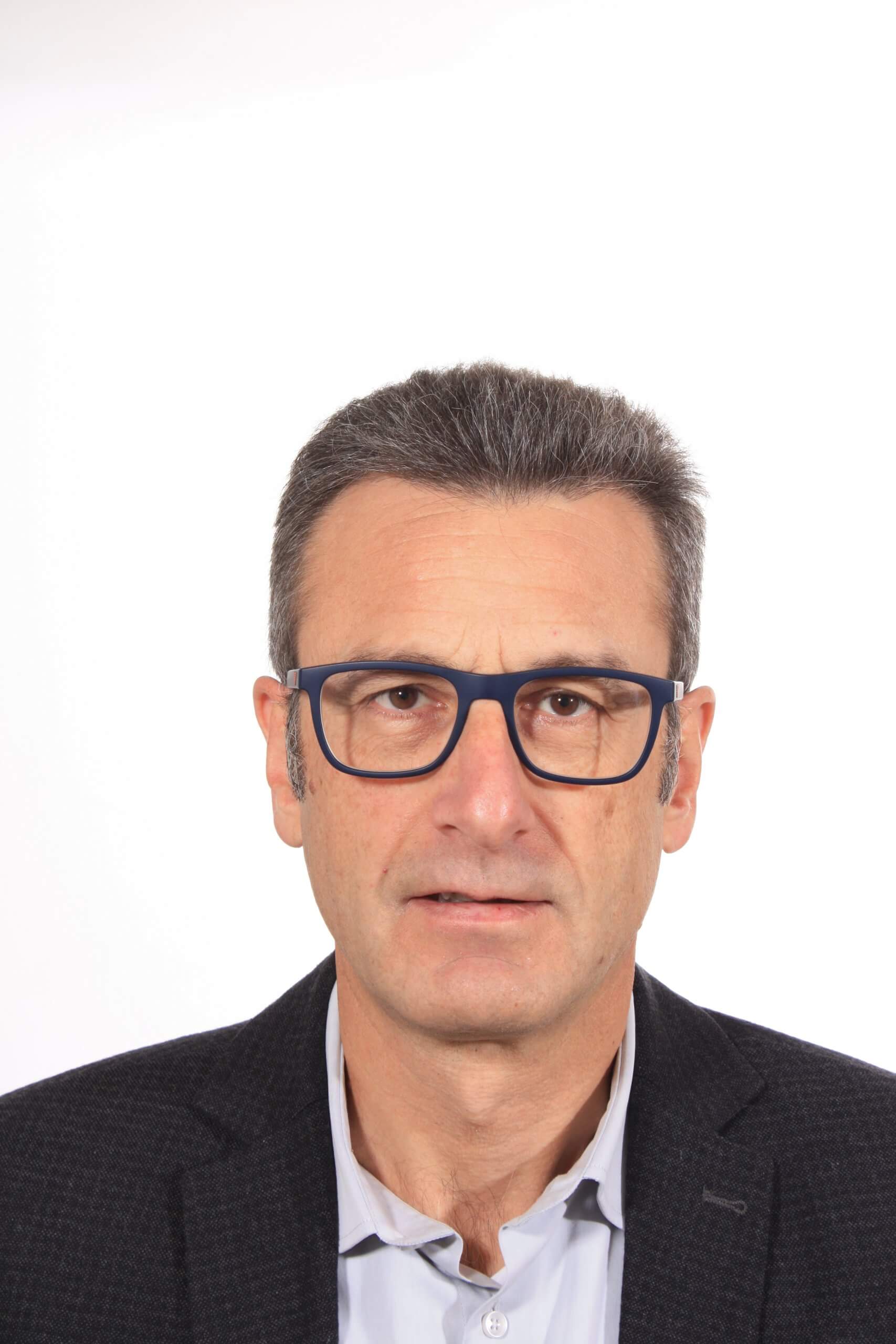
Article originally posted on Data Center Dynamics.
Pairing renewable energy with a dual-chemistry battery energy storage system is the latest innovative project underway by GS Yuasa. Based at their Ebbw Vale factory in Wales, the installation featuring nearly 3,000 solar panels and a combined lead and lithium battery system is forming part of Wales' first dual-chemistry energy centre. Part funded by the European Regional Development Fund (ERDF), the unique integrated energy centre is showcasing the benefits of using complementary battery technologies to drive Europe's green energy ambitions.
The installation of nearly 3,000 solar panels, forming part of Wales’ first dual-chemistry energy centre has been successfully completed at GS Yuasa’s Ebbw Vale factory.
The battery manufacturer announced their partnership with the innovative renewable energy company, Infinite, late last year. Both Infinite and GS Yuasa, along with their partners Albion Capital, are set to launch their first Energy Centre at the Rassau industrial estate in South Wales.
The combination of wind turbines, solar photovoltaics and battery storage will provide reliable, cost efficient and greener power directly to the customer.
Work at the site is moving on apace with the first phase of the unique integrated energy centre – the installation of a 1MWh rooftop solar system at GS Yuasa’s factory, already completed. Approval has also been granted for the building of a wind turbine which will supply electricity directly to the site. The Energy Centre will be linked to an energy storage scheme with its ADEPT battery container bringing together the use of GS Yuasa’s lead acid and lithium batteries, thus offering optimum efficiency and flexibility when managing power across a micro-grid.

Andrew Crossman, Director, Infinite says: “The GSCS Energy Centre represents a step-change in the de-centralised distribution of low carbon and renewable energy. The Rassau scheme aims to share the benefits of multi technology generation within the immediate community, providing discounted renewable power and reducing the CO2 emissions in the area.”
Shaun Gardner, Managing Director, GS Yuasa Manufacturing UK Ltd added: “The project brings a number of benefits to our Ebbw Vale factory and the wider Rassau industrial estate. The unique combination of our lithium and lead-acid batteries, the latter of which are produced on site in South Wales, allows for the storage of greener energy, generated by either solar or wind, to be used at a later date.”
The centre is part of the Generation Storage Consumption Supply project (GSCS) and is one of up to seven local energy centre schemes in South and West Wales to be grant funded by The European Regional Development Fund (ERDF). Match funding of £5.5m has been provided by Infinite’s funding partner, Albion Community Power. The total CAPEX for the schemes is £14.4m with £8.9m provided by the ERDF.
Welsh Government Minister for Climate Change, Julie James said: “Climate Change is at the heart of our decision making and we are committed to accelerating the transition to a low carbon energy system in Wales. The GSCS Energy Centre, alongside the other EU funded local energy schemes, will play an important role in driving action towards our ambition for a more sustainable future for Wales, by providing the benefits of cost-effective, more reliable green energy to local businesses and communities across South and West Wales.”
Marco Yu, Investment Director, Albion Community Power, says: “Albion has over 20 years’ experience funding sustainable energy projects across the UK. We backed the Infinite team in the early stages of its growth and are thrilled to be part of its latest pioneering, multi-technology projects that are leading the way in helping local businesses to decarbonise and reduce energy cost while alleviating the electricity load of the electricity grid network.”

Battery innovation is what drives us at CBI. And it’s what unites our members based across the globe.
The last decade has seen a boom in innovation in advanced lead batteries, using novel design and new architectures to enhance the performance of traditional lead batteries for a range of applications.
Progressing from benchtop prototypes to mature products, these novel advanced lead batteries are poised for the mass market.
The unique electrodes offered by New Zealand’s ArcActive and the different bipolar technologies offered by US-based Advanced Battery Concepts (ABC) and Gridtential are just some of the examples of recent lead battery innovation.
For these developments to be stemming from our member companies is encouraging for CBI and helps us to showcase our core messages about the innovation underway in lead batteries, directly feeding into the needs of society for high-performing, reliable and sustainable lead batteries.
Beginning as a garage start-up, ABC is based in Clare, Michigan and quickly developed into a state-of-the-art manufacturing and development center. ABC's GreenSeal® bipolar technology, which delivers increased performance, more efficient charging, longer life and reduced weight, is now licensed by seven battery manufacturing companies located across the world in the US, Europe, India and China.
The technology touts the highest energy density (65 Wh per kg) on the market and GreenSeal® batteries also provide high power and charge acceptance. As ABC’s Chief Operating Officer, Mike Everett, said at the European Lead Battery Conference in 2020, they plan to add a medium volume production line, able to build 250,000 GreenSeal batteries annually to their facility. ABC has also been awarded a contract with the Defense Logistics Agency to develop advanced lead batteries for US military vehicles.
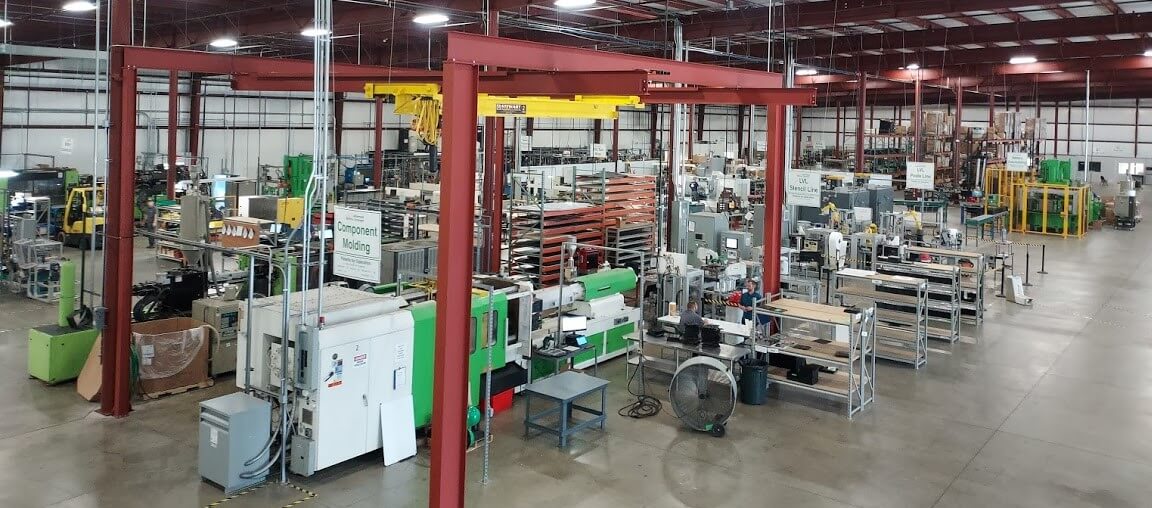
Founded in 2007, ArcActive is based in Christchurch, New Zealand and recently won the BCI Innovation Award for their AACarbon™ technology. Their novel carbon felt electrodes have demonstrated unparalleled recharge capability with some of the highest dynamic charge acceptance (DCA) values recorded for any advanced lead battery.
At the Advanced Automotive Battery Conference in 2020 and during BCI’s 2020 Virtual Convention, ArcActive’s presentations showed DCA values of +1.4 A/Ah at the 12 V level and close to 9 A/Ah at the 48 V level.
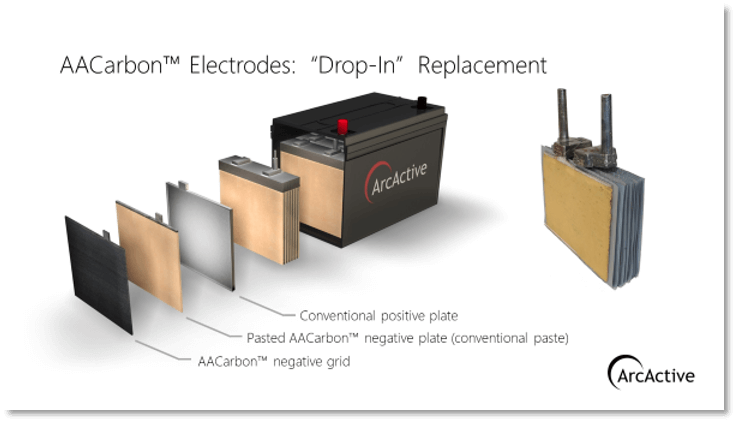
DCA is one of the critical work areas for CBI’s research to ensure lead batteries continue to innovate in their area to meet evolving technical demand in the increasingly hybridised automotive market.
ArcActive’s DCA performance is quickly approaching CBI’s research goal of 2.0 A/Ah and they have developed a suite of manufacturing equipment to translate their electrode technology directly into AGM and EFB products.
Since 2010, Gridtential has made major strides in developing their flagship Silicon Joule® technology. The innovative silicon wafer substrate combined with the bipolar technology has helped to enhance lead batteries across almost every performance metric.
The Silicon Joule technology provides improvements in energy density, power density, recharge efficiency, and cycle life, especially at deep depth of discharge (DOD).

The silicon wafer electrodes utilize common semiconductor high-throughput manufacturing processes to generate high quality battery current collectors. Silicon Joule batteries can be manufactured leveraging existing production equipment, so they're ready today to meet the worldwide demand for safe and sustainable energy storage.
With 12 battery partners, Gridtential have just announced a series of groundbreaking AGM reference batteries produced on East Penn Manufacturing’s prototype line, beginning with a single-block 24V lead battery optimized for deep-cycle applications.
Combined with a CBI research project looking to develop plug-and-play systems for the solar residential market, Gridtential is a leading player for lead battery innovation.
This is just a snapshot of the innovation underway in the global lead battery industry. Combining the expertise of industry partners with universities and research institutes is the basis for CBI’s research program to deliver the next generation of advanced lead batteries.
Find out how we’re propelling innovation with a range of ground-breaking research projects here.
Each year that EU Green Week is celebrated, Europe gets closer to its ambitious goal of being the first climate-neutral continent.
As a key action of the EU Green Deal, this strive towards climate neutrality by 2050 will be underpinned by many technologies and the transition of industries to low carbon practices.
And this is where advanced lead batteries come in. As a battery technology engaged in delivering clean energy projects and enabling the electric vehicle revolution, Europe’s lead battery value chain is also supported by an industry which is a model for the circular economy.
This combination of sustainability principles, where the industry recycles almost 100% of its batteries in Europe to produce new batteries with 80% recycled material, sets advanced lead batteries apart.
As we enter EU Green Week, we hear from Exide in Portugal who have slashed their carbon emissions at their manufacturing and recycling plants by an average of 20% through the innovative use of solar energy and advanced lead batteries.
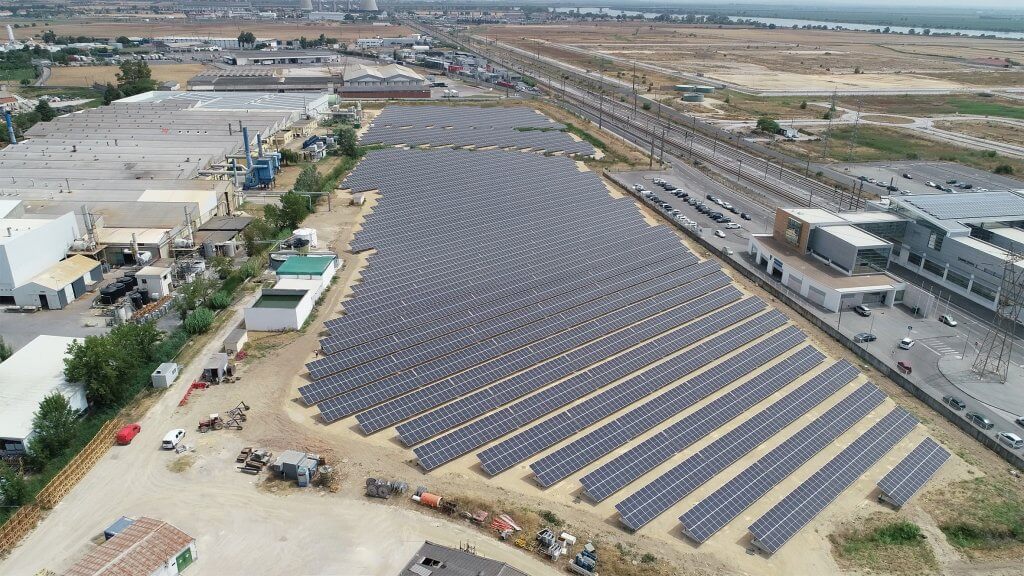
We’ll be taking a look at the range of European energy storage projects, from small-scale community microgrids bringing 24-hour power for the first time, to large-scale frequency regulation installations delivering reliable and flexible power to regional electricity grids. All powered by advanced lead batteries.
The clean energy initiatives ushered in by the EU Green Deal will need all energy storage technologies to step up to the plate. Batteries will be a central part of Europe’s transition to a low-carbon future as more and more societies, industries and consumers turn to batteries for affordable, clean and renewable energy.
And the Consortium for Battery Innovation (CBI) has recognised this need and the continued demand for innovation in batteries to meet the evolving technical requirements of storage systems, and to explore the potential for other applications.
That’s why a large portion of our technical program is dedicated to energy storage. With European projects bringing together universities and battery manufacturers to tackle the highest priority developments for the technology, CBI is driving innovation in lead batteries to ensure performance enhancements are continually increasing. All whilst maintaining the circular economy successes of the technology.
The other central pillar upon which the EU is aiming for a climate-neutral 2050 is low-emission mobility. The role of the established lead battery which ushered in emission-reducing start-stop vehicles continues to be important for the increasing electrification of vehicles. As a critical on-board component of virtually all EVs, powering essential safety features, lead batteries are enabling the shift to an e-mobility future.
This EU Green Week, find out more about the interesting and innovative ways advanced lead batteries are powering the transition to a greener future for Europe.
Dr Christian Rosenkranz, Chair of CBI and Vice President Industry and Governmental Relations EMEA at Clarios, sets out how lead batteries supporting safety systems in electric vehicles are integral to low-carbon mobility.
Europe is at a critical crossroads in its ambitious goals of achieving a climate-neutral EU by 2050. With initiatives driven through the EU Green Deal to decarbonize Europe, one of the central ways in which this will be achieved is through low-emission mobility.
Electric vehicles are at the forefront of discussions around Europe’s low-emission vehicle fleet and the future of the automotive industry.
Batteries are critical for electric vehicles, but not just the ones you hear most often about: lithium-ion batteries. The other critical on-board component for electric vehicles, and indeed the range of lower emission vehicles such hybrid vehicles, are 12V lead auxiliary batteries.
These auxiliary batteries play an essential function for hybrid and electric vehicles and lead batteries offer a number of key strengths in this application in comparison to other technologies.
The 12V auxiliary lead battery provides back up power for safety relevant features such as power steering and brake boosting. But they’re also essential for a vehicle’s comfort features such as radio and sound systems.
In the event of the failure of the high-voltage propulsion lithium-ion battery, the auxiliary lead battery takes over and powers the safety features of the vehicle to enable the car to safety pull over.
As a technology, lead batteries are highly safe and reliable, and it is vital that the safest technology is used in this application.
Current European investments in batteries has focused on the development of new battery technologies that can provide increasing system voltage levels of up to 800V. But this ignores the established 12V lead battery which is backed by an industry with 90 GWh installed production capacity located in Europe.
This mature industry, which collects lead batteries at end-of-life at rates of almost 100% in Europe, is one of the leading examples of circular economy in Europe.
From a production and supply standpoint, lead batteries are domestically produced in Europe for all of the target markets. This independence from global supply structures exists due to the established and well-maintained recycling industry, where almost 80% of material in a new lead battery comes from recycling.
With recent lifecycle analysis of the environmental impact of a vehicle over its lifetime, lead batteries as a technology were shown to have a lower impact compared to other technologies.
Backed by a strong reliability and affordability profile, lead batteries also have wide operational temperature windows compared to li-ion batteries, which intrinsically enhances the operational robustness of the entire system.
The safety record of lead batteries sets it apart from other chemistries and makes it an invaluable technology for Europe’s future low-emission mobility sector.
Through a long history of co-operation with the automotive industry, both the performance and the geometrical dimensions of the 12V lead battery are designed according to well established industry standards. This makes the automotive integration easy for the layout of new xEV platforms.
We are in the age of the battery, and recognition should be given to the essential role different chemistries will play for Europe’s green ambitions. Recognizing and utilizing the strengths of 12V lead batteries, based on their performance, sustainability and safety profiles, will ensure Europe is a leader in the shift to an electric vehicle future.

Celebrating more than 50 years since its creation, Earth Day 2021 is being recognised with events held by 1 billion people in 193 countries. The message of environmental protection has a strong resonance in today’s world where decarbonization and electrification are high on societal agendas.
One of the most significant ways in which a focus on restoring our Earth has been driving action across the global is the shift to clean energy. Through the use of renewables, through sustainable and green technologies, through energy storage.
The rocketing growth of energy storage across different regions and in different applications, from small-scale rural electrification projects to large-scale installations supporting power grids, is underpinning the global shift to a clean energy future.
As one of the energy storage technologies supporting this shift, lead batteries are used in diverse projects around the world to deliver reliable, affordable and sustainable energy.
From the world’s highest solar farm in Tibet, to a rooftop solar project in New York, to rural electrification in Sierra Leone, lead batteries are at the centre of the transition to a clean energy future for different communities across the globe.
Browse our interactive map for some highlights of lead batteries in action and check out our case studies page for a deep dive into the role of advanced battery storage in delivering a low carbon future.
Visualizing the dynamics of carbon-enhanced negative electrodes
Automotive sector and utility grid energy storage
18 months
The objective of the project is to determine the fundamental mechanisms by which carbon additives improve lead battery performance using innovative techniques not used before in lead battery research:
UCLA
Dual-chemistry projects are becoming increasingly common as demand for batteries is booming.
The world’s low-emission vehicle fleet is one of the prime examples of where different battery chemistries complement each other: virtually every electric vehicle has an auxiliary lead battery used for powering emergency functions if the primary lithium-ion battery fails.
We’re also witnessing the increasing use of dual-chemistry energy storage projects which combine the strengths different battery chemistry. From projects providing frequency regulation to stabilise electrical grids to electric vehicle charging projects, growing demand for battery energy storage means every chemistry has a significant role to play.
And now, in a pioneering research project underway at Argonne National Laboratory, the use of lead is being trialled for a new electrode design for the lithium-ion battery.
As a low-cost and plentiful metal, infinitely recyclable without losing beneficial properties, lead is offering exciting implications for designing low-cost, high-performance, sustainable lithium-ion batteries for the hybrid and all-electric vehicle market.
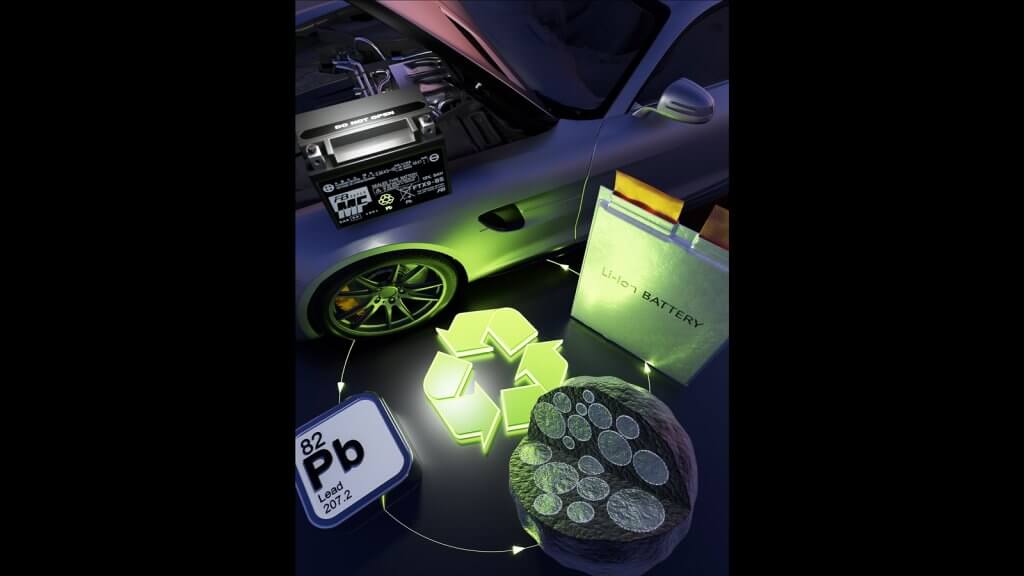
The research team have developed a simple, low-cost method for fabricating the lead anode used, which is made of lead nanoparticles embedded in a carbon matrix and enclosed by a think lead oxide shell.
Laboratory tests have already demonstrated the new lead-based anode can attain twice the energy storage capacity of current graphite anodes, with stable performance during cycling possible.
This exciting development to provide higher-performing lithium-ion traction batteries for low-emission vehicles by using lead would be underpinned by a successful home-grown lead battery value chain already based in the US.
The Consortium for Battery Innovation is driving forward innovation in advanced lead batteries to meet future technical demands for clean mobility and clean energy storage.
Read about the full research underway in a collaboration between Argonne, Northwestern University, Brookhaven National Laboratory and the Ulsan National Institute of Science and Technology (UNIST) here.
+++
'Getting the lead in' - Read Argonne's press release on the innovative project here.
18 March 2021 marks Global Recycling Day and we're proud to work in an industry which is a gold standard for circular economy principles, with almost 100% of lead batteries recycled at end-of-life.
Check out our short video and visit our sustainability page for more insights into how advanced lead batteries are ticking the boxes for a sustainable battery technology.
Location Brussels, Belgium preferred
Contract Initial contract 18 months
Hours 35 (full time)
Job Summary
The Consortium for Battery Innovation (CBI), a rapidly growing global battery research consortium, is seeking candidates for an 18-month position as CBI Communications Officer to be based in Brussels, Belgium.
Candidates must be educated to a relevant degree level (e.g. marketing, public relations, journalism or other degree requiring strong writing skills). With at least three years’ experience, preferably operating in Brussels, candidates will demonstrate their ability work with a complex and diverse portfolio of communications activities.
Candidates must demonstrate the ability to summarize technical and scientific information and communicate material effectively to a range of different audiences, both within the Consortium’s membership and externally, and across different channels. A good understanding and experience of working with European institutions will be a significant advantage.
Required Qualifications and Professional Capability
Preferred Qualifications and Skills
Job Responsibilities
This role will involve regular European travel.
Compensation
The salary and benefits package will be commensurate with education and experience.
About CBI
The Consortium for Battery Innovation is a global innovation hub which supports cutting-edge pre-competitive research and promotion of innovation in lead battery technology. The consortium includes more than 100 member companies and organizations worldwide, consisting of lead producers, battery manufacturers, battery users, materials suppliers and research institutions.
The candidate would be joining a vibrant and dedicated team, with staff in Brussels, North Carolina and London. More information can be found here: https://batteryinnovation.org/
Application
Interested candidates should submit a résumé and cover letter to Dr Alistair Davidson, director of CBI, (alistair.davidson@batteryinnovation.org) by Friday 12th March 2021.
We are committed to equal opportunities and creating an inclusive environment for all our employees. We welcome applicants regardless of ethnic origin, national origin, gender, race, color, religious beliefs, disability, sexual orientation or age.
The word battery is buzzword today. The diverse landscape of batteries means they will be a significant player in the global shift to a low carbon future.
Through use in low emission vehicles, as storage for clean energy and as backup for critical infrastructure such as mobile networks, batteries are an essential part of the every day.
And they’re always adapting and innovating to meet the demands of the world. Advanced lead batteries are undergoing a huge transformation driven by changing markets and evolving technical demand.
With pioneering research conducted under the Consortium for Battery Innovation and in partnership with governments, universities and industry around the world, the untapped potential of the lead battery is well on the way to be being opened up through innovation.
On 2021’s Battery Day, there’s a lot to be excited about for the lead battery industry. Building on our core aim of undertaking advanced battery research, CBI will shortly be announcing our new technical program. This year’s technical projects are focused on delivering battery research that will be critical to the technology’s bright future as an energy storage solution.

Lead batteries are already used across the globe for diverse energy storage applications. Storing power harnessed from the sun in remote communities to stabilizing the electrical grid for entire regions, lead batteries are facilitating reliable, sustainable energy generation.
But they have more to give. Energy storage demands are always shifting and always growing. So the low carbon world of the future needs batteries and lots of them.
With targeted performance enhancements in cycle life, battery lifetime, energy density and operation at different duty cycles, CBI is driving innovation in the technology to ensure they are a central part in supplying the 20,000 MWh increase in battery energy storage demand by 2025.
Our work doesn’t stop at research. We are communicating the critical role that our industry plays in providing high-performing, reliable, sustainable batteries for energy storage. See below for some featured highlights from around the world and click here for the technical case studies:
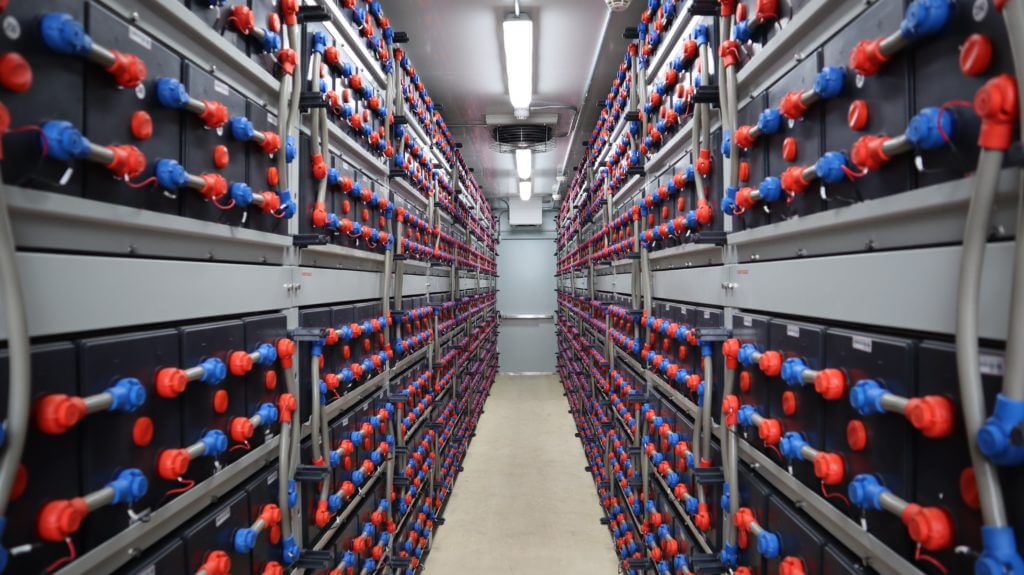
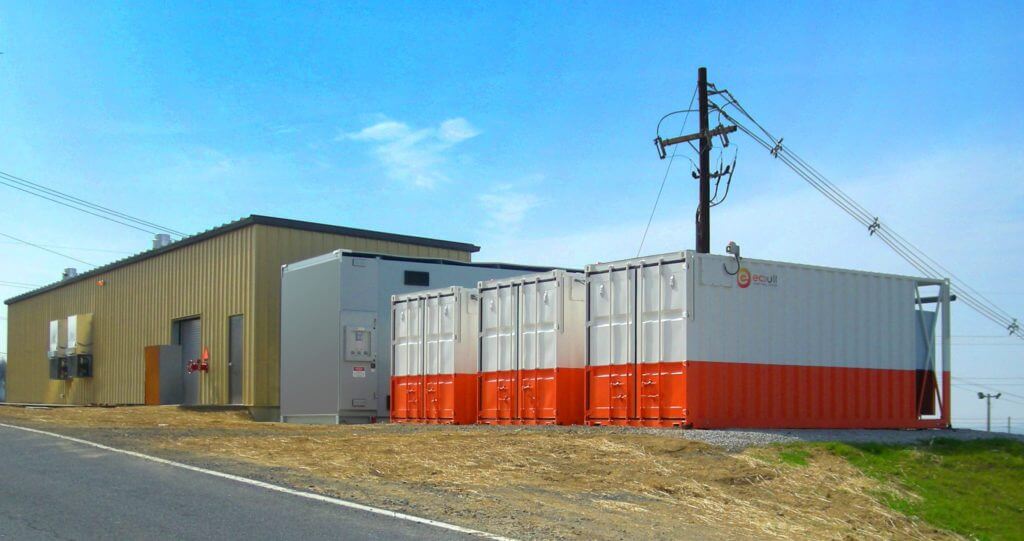
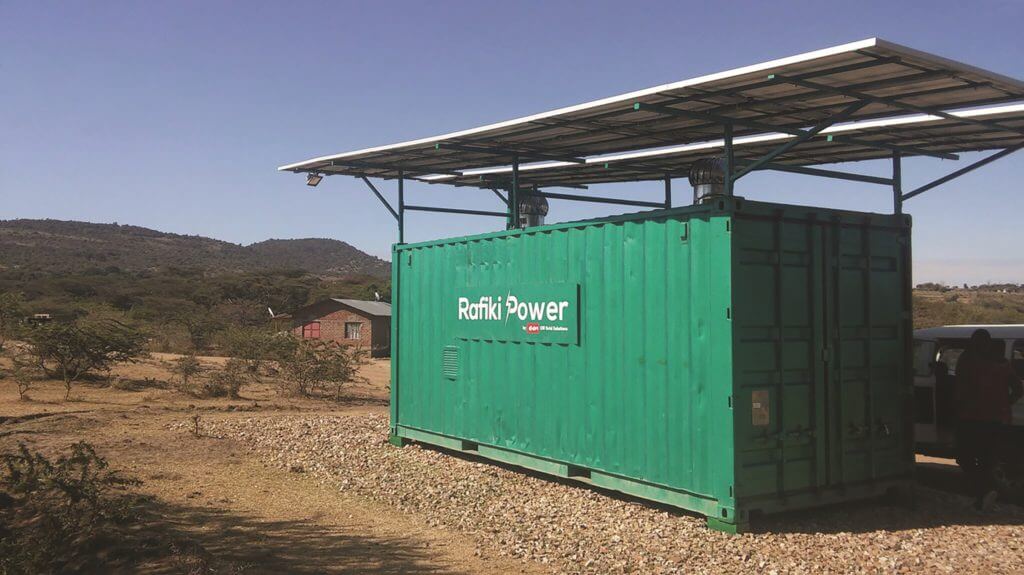

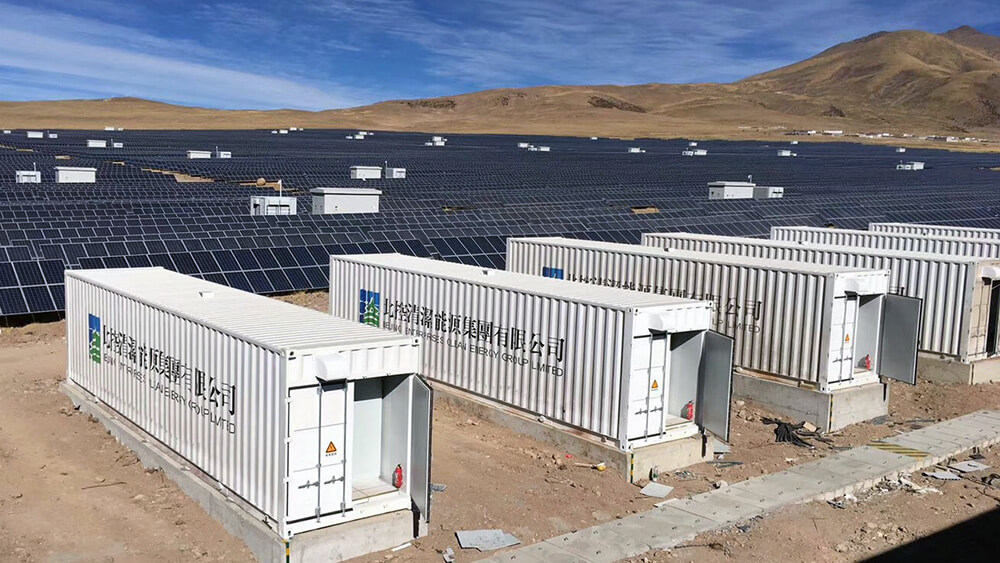
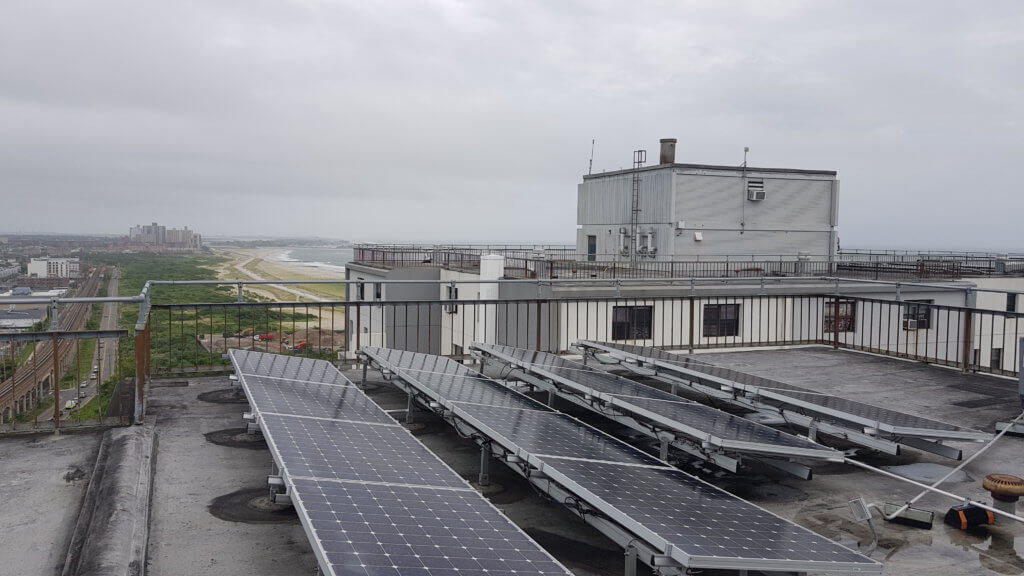
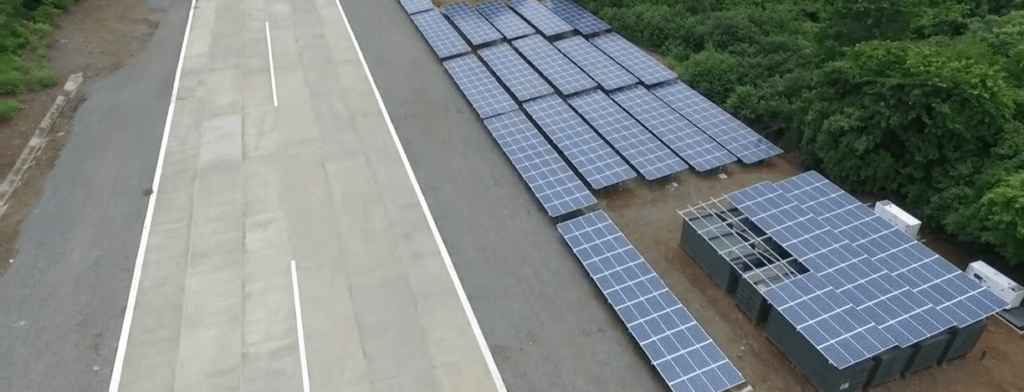
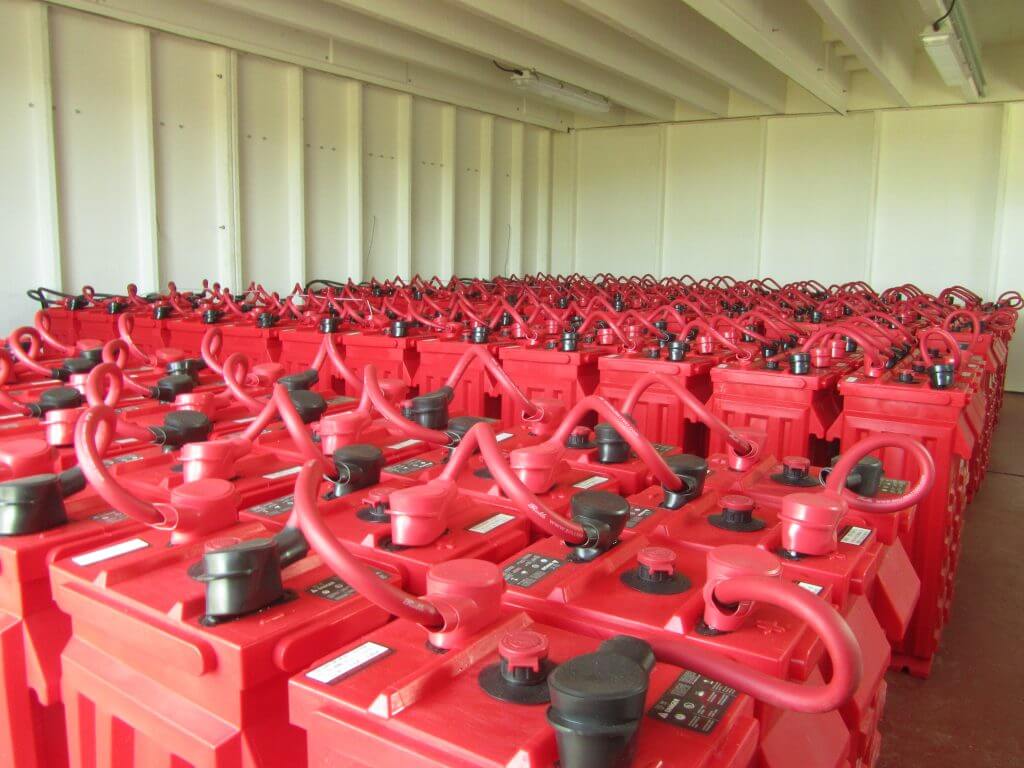
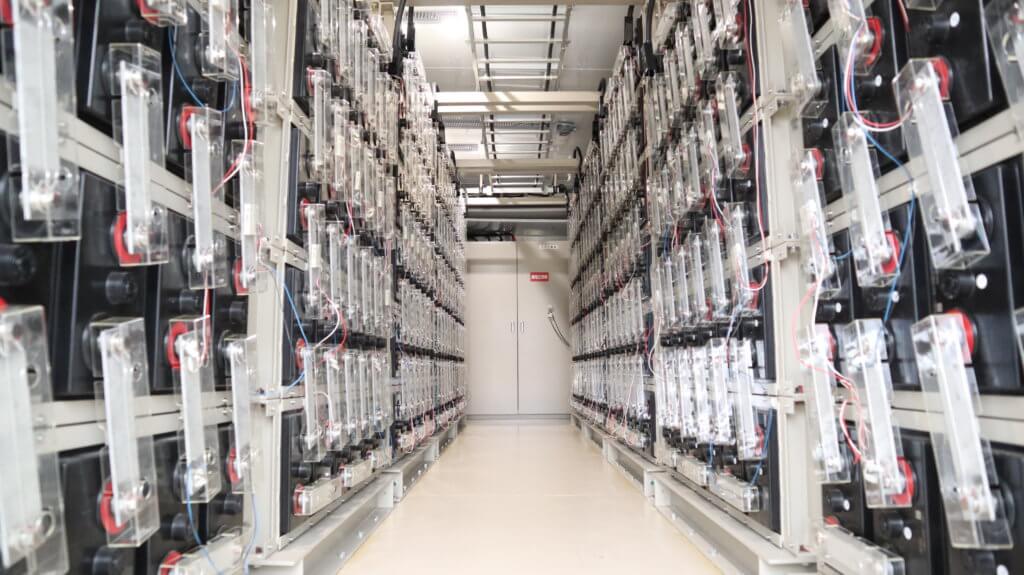
Investigation into the Combined Influence of Carbon Black and Organic Expander to Improve Micro-Hybrid Service of Enhanced Flooded Batteries
Micro-hybrid vehicles
18 months
The project aims to improve the following parameters through the optimization of additive ratios:
1 - Increase the dynamic charge acceptance to higher than 0.40A/Ah using DCA run-in testing.
2 - High-temperature durability -providing up to 19 units on J2801 testing and other test sequences.
3 - Energy throughput of lead batteries, by demonstrating a much higher cycle life in DOD 17.5% testing when compared to a typical lead battery control.
East Penn Manufacturing, Borregaard USA, Hammond and Cabot.
Optimization of additive ratios have been shown to improve DCA by 40% compared to control.
Expander and conductive additives are a well-established pathway for improving performance of lead battery negative electrodes, however how they interact and work with each other is ill-defined.
The project aims to optimize and establish functional relationships between these additives to enhance lead battery performance for DCA, high-temperature durability and energy throughput.
The high amount of detail on structure and methods will make the additive mixes and resulting test batteries replicable in any member research facility.
Initial analysis of the amount of each additive mix component has shown correlations to formation behavior.
A representative sample of 12 V lead batteries to test and study these relationships at product level has been produced.
Europe has made a significant leap forward in battery technology through a commitment to battery research and investment, solidifying the role of batteries for a low carbon future.
The EU can be the centre for the most advanced batteries and the most advanced recycling and re-use of battery technologies if all battery technologies are nurtured to foster innovation.
These were the resounding messages from an EU Industry Days event co-organised by EASE and Batteries Europe on 9 February called Developing the Batteries of the Future: Actions to Take Today.
CBI echoes these sentiments. As Claudia Gamon, MEP and member of Renew Europe said: “Our battery industry can be a pioneer in this world”, and we would wholeheartedly agree.
With leading capability in manufacturing, recycling and research, Europe’s advanced lead battery industry is ticking the boxes for the high-performing, sustainable, safe and cost-effective batteries needed for Europe’s electrification and decarbonisation goals.
The panel, made up of figures involved across Europe’s battery industry from the Commission to manufacturers, acknowledged the lead battery’s golden example of circular economy in action, and a blueprint for other technologies to follow.
Europe is a big focus for the work of CBI. Despite its long history, I shared with event attendees that there is a surprising amount not yet known about lead battery technology, and CBI’s research program is uncovering the untapped potential within.
This year will see the launch of a suite of technical research projects under the banner of energy storage launched through our technical program. Working with European research institutes and battery manufacturers, the synergies fostered through the work of the Consortium are ensuring advanced lead batteries continue to innovate to meet future demand.
But we need the support of Europe’s officials to ensure that all technologies are nurtured in decision-making for investment and research.
A key discussion during the EASE event was around safety. The unrivalled safety record of lead means it is an essential technology helping the transition to clean energy and clean mobility.
When thinking of energy storage, we tend to think only of uses such as utility grid-scale storage and frequency regulation, or community-based microgrids utilizing renewable energy.
But, as Edel Sheridan from Batteries Europe ETIP noted, fast-charging of electric vehicles is a very important area of research for low carbon aims. And lead batteries are meeting this need for EV energy storage through promising projects both in Europe and the United States.
Europe is well on the way to becoming the first carbon-neutral continent, and with different technologies competing and providing different services, Europe’s diverse battery landscape should continue to be supported to ensure the goals for 2050 are reached.

Location Brussels, Belgium preferred
Contract Initial contract 18 months
Hours 35 (full time)
Job Summary
The Consortium for Battery Innovation (CBI), a rapidly growing global battery research consortium, is seeking candidates for an 18-month position as CBI Technical Manager, preferably based in Brussels, Belgium.
The successful candidate will have excellent scientific knowledge, ideally including battery technologies, in addition to strong communications and interpersonal skills. The candidate is expected to efficiently manage a diverse portfolio of technical activities working independently.
Required Qualifications
Preferred Qualifications
Job Responsibilities
This role will involve regular European travel.
Compensation
The salary and benefits package will be commensurate with education and experience.
About CBI
The Consortium for Battery Innovation is a global innovation hub which supports cutting-edge pre-competitive research and promotion of innovation in lead battery technology. The consortium includes more than 100 member companies and organizations worldwide, consisting of lead producers, battery manufacturers, battery users, materials suppliers and research institutions.
The candidate would be joining a vibrant and dedicated team, with staff in Brussels, North Carolina and London. More information can be found here: https://batteryinnovation.org/
Application
Interested candidates should submit a résumé and cover letter to Dr Alistair Davidson, Director of CBI (alistair.davidson@batteryinnovation.org) by Friday 5th March 2021.
We are committed to equal opportunities and creating an inclusive environment for all our employees. We welcome applicants regardless of ethnic origin, national origin, gender, race, color, religious beliefs, disability, sexual orientation or age.
The global automotive sector relies on lead batteries. From starting the engine in conventional vehicles, enabling low-emission start-stop technology and powering key functions in micro-hybrids, to being used as auxiliary batteries for electric vehicles, lead batteries are present in virtually every vehicle.
At the Ford Research and Innovation Center in Aachen, Germany, collaborative research is underway to investigate gassing and water loss in lead batteries and how it interacts with Dynamic Charge Acceptance (DCA) of batteries. DCA is the relevant battery property to enable the capturing of instantaneous energy such as through regenerative braking and is a key technical parameter for micro and mild-hybrids. Crucial for low-emission vehicles, CBI has set it as one of the highest priority research goals for the industry.
Attaining this target is essential for maximizing the performance of advanced lead batteries in the ever-increasing number of hybrid vehicles. The global micro-hybrid market alone is increasing rapidly, with Europe leading the way with 82% of car sales predicted to be micro-hybrids by 2030.
The project explores when and how fast gassing and water loss can occur, and any impact it has on the aging of batteries in the vehicle. With the support of CBI, an innovative portable eGAS device has been developed in collaboration with measX and Ford that allows the monitoring of gas flow in the battery, in-situ and in real time.
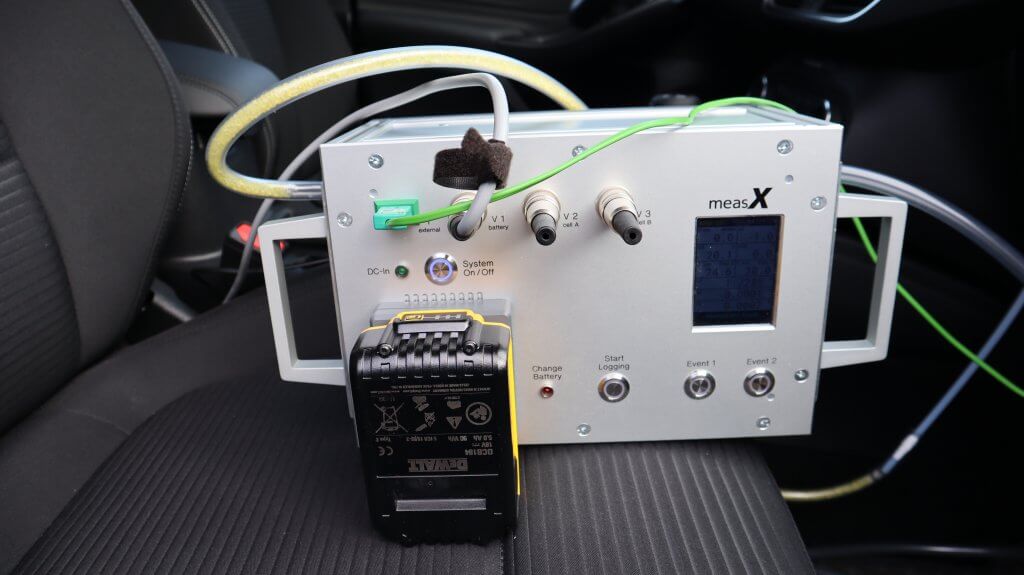
One of the key findings of the research established that standard laboratory tests do not accurately represent the performance of lead batteries in field conditions with regards to water consumption, and therefore the device opens new pathways for monitoring battery performance.
Battery producers and car manufacturers can now better understand the condition of batteries in their vehicles using the portable eGAS device, as opposed to the conventional methods of weighing batteries every few months to determine gassing and water loss. This information will be vital for understanding and improving the DCA of lead batteries.
This ground-breaking project has delivered insights into automotive lead batteries never before seen and is vital to ensuring the continued performance improvements for the technology for start-stop and micro-hybrid applications.
As the world’s battery research hub dedicated to advanced lead batteries, innovation in the technology is driving CBI’s research program which is bringing together industry and science to boost the role of lead batteries in supporting the transition to a clean mobility future.
The Energy Storage Grand Challenge Market Report for 2020 has been released by the U.S. Department of Energy which provides an in-depth market analysis of various energy storage technologies, including advanced lead batteries. The Energy Storage Grand Challenge (ESGC) is an exciting opportunity for the U.S. industry involved in energy storage, designed to accelerate the development, commercialization, and utilization of next-generation energy storage technologies and sustain American global leadership in energy storage with the ultimate aim of developing and domestically manufacturing energy storage technologies that can meet all U.S. market demands by 2030.
The ESGC Roadmap has several clear goals, both technical and non-technical, with the overarching aim of supporting energy storage under the banner “Innovate Here, Make Here, Deploy Everywhere”. The lead battery industry is in a strong position in the U.S. to achieve this. The industry has an annual output of $26.3 billion and manufactures batteries across the country. With a 99% recycling rate, lead battery recycling is conducted nationwide, and the overall lead battery industry creates 25,000 direct jobs in 38 states.
Lead batteries as a technology are uniquely positioned in all three of these strategic goals of innovate here, make here, deploy everywhere. The specific techno-economic goal outlined in the ESGC roadmap for ESS; 0.05 $/kWh levelized cost of storage for stationary applications, requires a two-fold performance increase for lead batteries – overall service life (total energy throughput) and energy density. Lead battery technology can meet this goal with the support of the DOE, with several pathways available to tap into the unexploited potential of lead batteries.
CBI is currently engaged in five research projects in the US dedicated to opening these new pathways for enhancing lead battery performance for energy storage and other applications.
2017 witnessed the beginning of rapid growth in the use of lead batteries for stationary energy storage, with a market report by Bloomberg New Energy Finance detailing nearly 1,000 MWh of storage across various applications including commercial and industrial end-users, renewables integration, microgrid and distribution services.
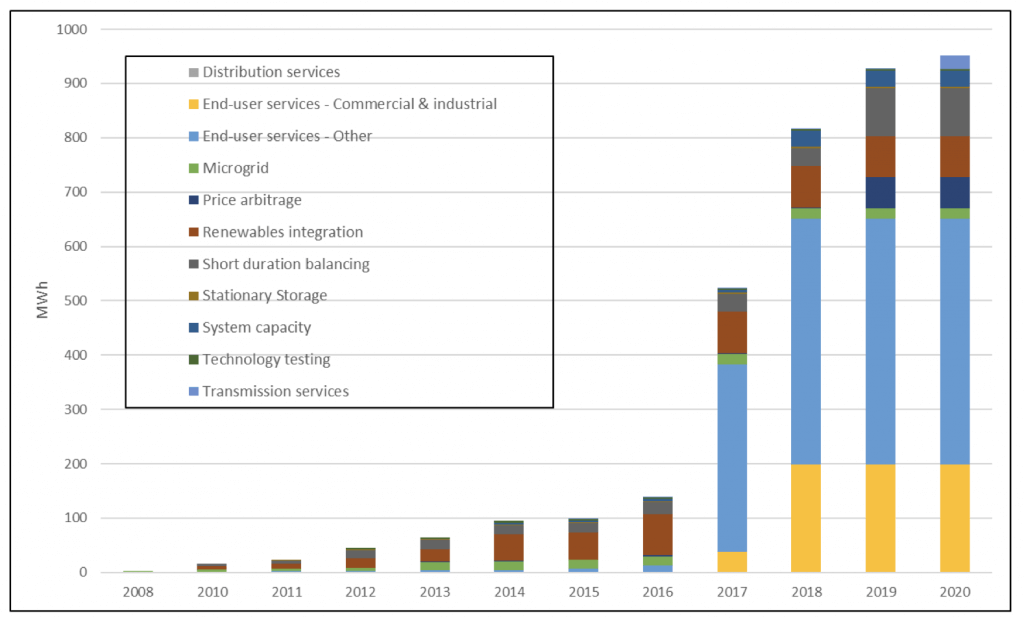
Our industry is leading the way in lead battery innovation for the energy storage sector to boost performance enhancements, with key areas of advancement including:
All battery technologies will be essential for the transition to a low carbon future, both domestically in the US and globally, and the pioneering research conducted by CBI in collaboration with scientists, manufacturers, materials suppliers and end-users will ensure advanced lead batteries play a vital role.
Lead batteries will be the dominant rechargeable battery technology for the next 20 years. This was one of the key insights delivered by Christophe Pillot, market analyst from Avicenne Energy in a special lead battery market webinar hosted by the Consortium for Battery Innovation.
The technology is used in a diversity of applications, from well-known automotive uses supporting clean mobility in start-stop and micro-hybrid vehicles, a market predicted to represent over 60% of global vehicle sales by 2030, to the growing utility and renewable energy storage markets which are ushering in a global clean energy transition. From use in back-up power for critical services such as hospitals, telecommunications and data centers, to ensuring the warehouses of the world run smoothly with lead battery powered forklifts, market growth across the board for lead batteries is strong out to 2030.
This presents exciting opportunities for the lead battery industry involved in pre-competitive scientific research which is opening up new pathways for enhancing lead battery performance. Key priority goals include improving battery cycle life to ensure high-performing technical ability to provide power for energy storage, and dynamic charge acceptance for low-emission vehicles.
For further insights into lead battery markets including motive power, automotive, telecommunications backup and UPS, check out CBI’s market data page.
Grid energy storage performance improvement using optimized electronic control
The project aims to improve the cycle life of lead batteries (in line with CBI’s KPIs as listed in the Technical Roadmap) for utility and renewable energy storage applications through the use of tools such as controlled overcharging and through the development of novel battery management systems.
Electric Applications Incorporated (EAI)
The project aims to increase operational life by developing novel charging algorithms applicable to different types of lead batteries. The first phase of work has focused on adapting a controlled overcharge approach to several types of lead batteries acquired from commercial sources. These batteries have been combined into representative strings, mimicking the conformations present in large energy storage system (ESS) products with testing currently underway.
CBI has invited Manchester-based start-up enee.io to join our guest blog to share their story regarding a £170K award from UK government agency Innovate UK to further advance their cutting-edge battery monitoring and management technology in relation to industrial lead batteries, a vital technology utilized across the globe for back-up and utility and renewable energy storage.
enee.io, a startup organisation based in Manchester, United Kingdom, has been awarded a grant from Innovate UK Sustainable Innovation Fund to help further advance their innovative battery monitoring and management technology. Innovate UK is the government’s agency for innovation providing funding for pioneering research and development in the United Kingdom.
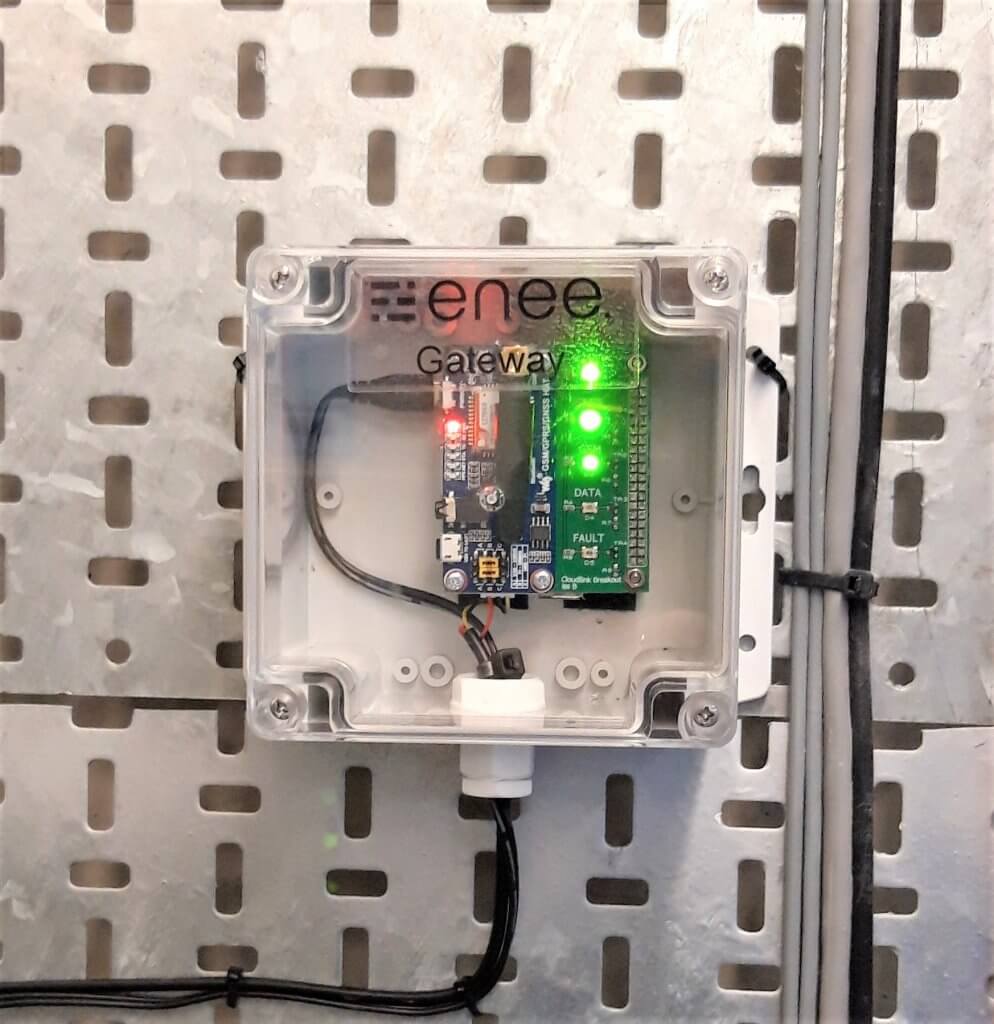
The technology developed by enee.io is applied to industrial lead batteries to provide early detection of potential battery issues through online data analytics, expert insight, machine learning and advanced algorithms. The sophisticated IoT technology enables intervention to prevent premature battery failure, which results in increased battery performance and a reduction in the lifetime cost of ownership, two key objectives detailed in CBI’s Technical Roadmap.
Lead batteries play a crucial role for the industrial market, providing over 90% of global demand for batteries in this sector. David Smith, the CEO and Founder of enee.io said: “Premature battery failure is a common problem faced by installers worldwide, mostly due to the incorrect maintenance. enee.io has found a quick and affordable solution by using sophisticated monitoring technology to ensure that any issues can be flagged in real time and solved efficiently, saving users both time and money in replacement.”
Improving efficiency and lifetime of batteries are two key technical parameters considered by end-users installing batteries for back-up, utility and renewable energy installations. The recent grant from Innovate UK will enable enee.io to expedite the development process and bring forward the launch of a viable product that provides automated remote monitoring of industrial battery systems used for back-up power of critical infrastructure, particularly for solar systems in remote areas of Africa where there is little or no access to the grid.
As the world transitions to a low carbon future, demand for renewable energy storage continues to soar, and the role of batteries is essential in meeting this demand. Lead batteries as a technology which safe, reliable, sustainable and cost-effective will continue meeting this growth and will continue to innovate to ensure performance enhancements are achieved. Intelligent battery monitoring and management systems are a significant pathway in which these enhancements in performance can be achieved. enee.io ensures an affordable solution for users globally to increase the efficiency of their battery fleets and improve access to energy.
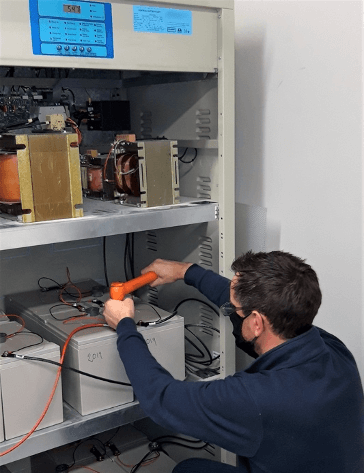
Co-Founder & CPO Duncan Jones remarks: “We believe this development will have a significant impact on both the future of industrial battery management in the UK and the uptake of renewable power globally, particularly in developing economies.”
Successful feasibility studies have been conducted at both a leading university in Manchester and on renewable power systems in Lagos, Nigeria. The findings on the enee.io Battery Monitoring System (EBMS) surpassed expectations, flagging issues with battery health early, which could be solved in real-time, with one project preventing an entire fleet failure when using the EBMS.
The studies conducted have demonstrated that the technology can be applied in remote areas in Nigeria where access to the grid is often unstable, as well as allow for insight into issues with data retrieval where mobile networks are weak.
With 2020 drawing to a close, CBI takes a look back at the year that was and ahead to 2021. With the difficulties faced by the COVID-19 pandemic, this year turned out a lot differently for CBI and its membership than expected.
As the world adapted to a new normal and businesses reopened throughout the year, CBI in collaboration with its global membership and partner organisations, launched eight high-impact research projects which are critical to meeting CBI targets for lead battery enhancements as set out in our Technical Roadmap.
From a European project with Ford and leading universities to a first-time partnership with UCLA in California, this year’s technical program has featured a diverse range of research topics and organizations from the entire battery value chain. They all work towards the common goal of delivering vital insights into improving lead battery performance in fundamental ways such as DCA and cycle life and ensuring the KPIs set by CBI are met.
The focus on lead battery energy storage took a new turn this year with CBI’s 2020 Request for Proposals, highlighting this area as one of keen interest for the industry involved in research and innovation. We’re excited to launch our new technical program early next year to ensure lead batteries remain a crucial provider of energy storage worldwide. This also tied in with the launch of the Energy Storage Grand Challenge in the US, organized by the Department of Energy (DoE), where CBI is working with the US battery industry and associations to ensure lead batteries continue to be recognized as a vital technology to achieve a clean energy future.
Across the globe, demand for utility and renewable energy storage is booming and batteries play a principal role in delivering that demand. CBI Battery Match was launched in August to put energy storage end-users such as utility companies and systems specifiers directly in touch with the best lead battery option for their system. This robust, technical tool is available on CBI’s website to showcase the role of lead batteries in this sector and highlight their competitiveness with regards to reliability, safety, economics and sustainability.

Sharing messages of innovation in lead batteries is crucial to communicating the benefits of the technology and strengthening its perception as a future energy storage solution, vital for global electrification and decarbonisation targets. Digital content has been even more essential during 2020 and we’ve successfully launched a number of videos and blogs covering research and innovation by our members, plus a new educational Battery 101 series featuring all topics lead batteries.
2020 was the year of virtual events and CBI organized, attended and exhibited at a number of highly successful meetings ranging from the Energy Storage Association’s annual conference where we launched CBI Battery Match with a Special Learning Lab, to the highly anticipated 17ELBC, co-organized by CBI with the International Lead Association. ELBC was extremely well-attended and provided the lead battery industry with the latest scientific, technical and market updates combined with insight into how CBI’s pioneering research is changing the shape of modern lead batteries.
We also held a number of CBI Technical Workshops throughout the year and hosted two interactive DCA & Heat Workshops bringing together industry, researchers and end-users in the automotive sector.
2021 will be a busy year for CBI as we launch a new suite of research projects focusing on energy storage systems. This will be accompanied by an updated Technical Roadmap to reflect the changing landscape for lead batteries and the evolving performance targets for the technology.
As lead batteries continue to innovate and advance to a higher plane of performance for different applications, the industry will continue its work in communicating the benefits of the technology. CBI is supporting the work of our members and partner associations across the globe in sharing the innovation story of lead batteries and ensuring that our research is a cornerstone for communicating the essential role they will play in the global transition to a low carbon future.

Over the past five years, the DCA & Heat workshops co-organized by CBI and CENELEC and supported by Dr Eckhard Karden based in the Ford Research and Innovation Center in Aachen, have focused on the pressing issues for 12 V automotive lead batteries. The key overall objective of these meetings, which bring together the entire automotive lead battery value chain, is to develop test methods that adequately reflect the Dynamic Charge Acceptance (DCA) improvements seen in lead batteries.
The latest virtual edition of the DCA & Heat workshop, held on 17-19 November, covered many topics related to achieving this objective in a collaborative meeting with automotive OEMs, lead battery manufacturers, researchers, scientists and engineers active in the automotive lead battery field.
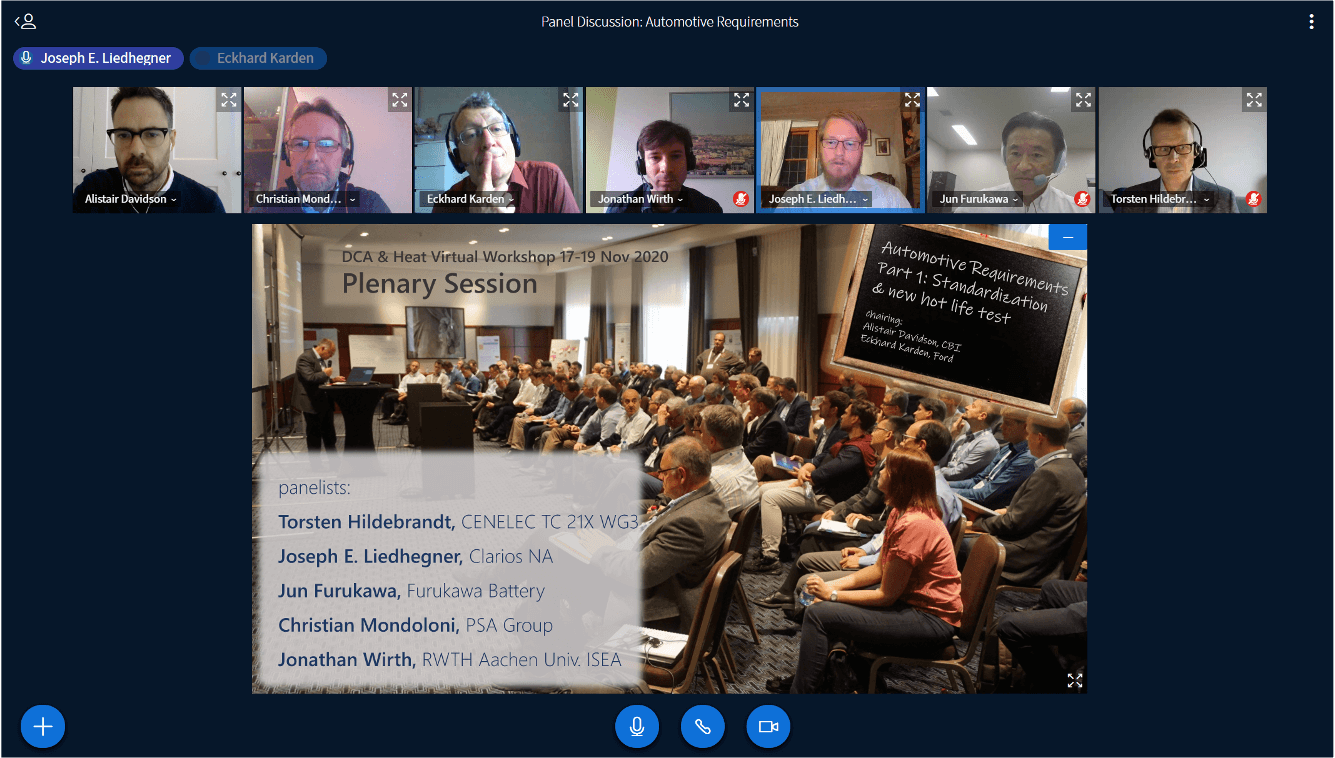
With over 100 attendees from across the globe, plenary presentations and interactive breakout sessions focused on six topics:
New micro-hybrid performance testing and nKLT
New revisions to micro-hybrid performance testing by CENELEC and a new key life test (nKLT) have been developed to better evaluate automotive lead battery performance. Representatives from Clarios, PSA Group, and Exide Technologies lead discussions on the revisions and demonstrated how current lead batteries are meeting these more stringent requirements. In-depth discussion in this breakout session not only focused on performance, but also the standards methodology and how the CENELEC group developed these changes.
Functional safety
The increasing reliance of vehicles on batteries for safety during both typical use and autonomous driving and other complicated actions has resulted in a rapid evolution in functional safety approaches for lead batteries in vehicles. A special topic covering the basics of functional safety, how lead batteries offer many advantages such as reliability and safety, and how the industry is working to answer the increased need from OEMs were discussed by battery manufacturers and automotive OEMs.
DCA: test sequence
DCA is a key performance driver for 12 V automotive batteries and is a priority research objective in CBI’s Technical Roadmap. Discussions during this breakout topic focused on new test sequences to measure DCA. Producing tests that better reflect real-world conditions for automotive lead batteries is vital to measuring DCA accurately, and industry leaders discussed preliminary results and the implementation of new DCA sequences.
DCA: measurement
As a complementary session to the DCA test sequence topic, a breakout session was held to tackle the contributing factors to disparities in DCA measurements during charge and discharge. The so-called “DCA memory” effect requires further exploration, and a special working group has been established to study this effect in participant’s laboratories. This session really showed the value of the DCA & Heat workshops in tackling key issues facing the automotive lead battery industry and the vital research work that is generated as a result of collaborative discussion amongst industry leaders.
High-temperature
High-temperature testing at the cell level can be difficult to implement, and scientists spanning the entire industry discussed best practices and examples of lead battery test cells used for high-temperature studies. A special working group has been formulated to assist in implementing new high-temperature tests, specifically the nKLT, into test cells.
Failure modes
Positive grid corrosion and paste shedding are the primary failure modes for lead batteries in high-temperature testing and applications. Metallurgists, electrochemists and battery engineers joined together in this session to discuss corrosion, positive additives and pioneering techniques for studying positive electrodes. This work will be vital in addressing failure modes and ultimately enhancing the performance of lead batteries for 12 V automotive applications.

What's next?
As we move into the sixth year of DCA & Heat Workshops, the cross-industry collaboration facilitated by these events has propelled key performance enhancements for automotive lead batteries. The interactive sessions continue to be a crucial driver in undertaking advancements in the technology and delivering vital insight into ensuring 12 V lead batteries remain a dominant technology in the future to meet evolving automotive technical demand.
